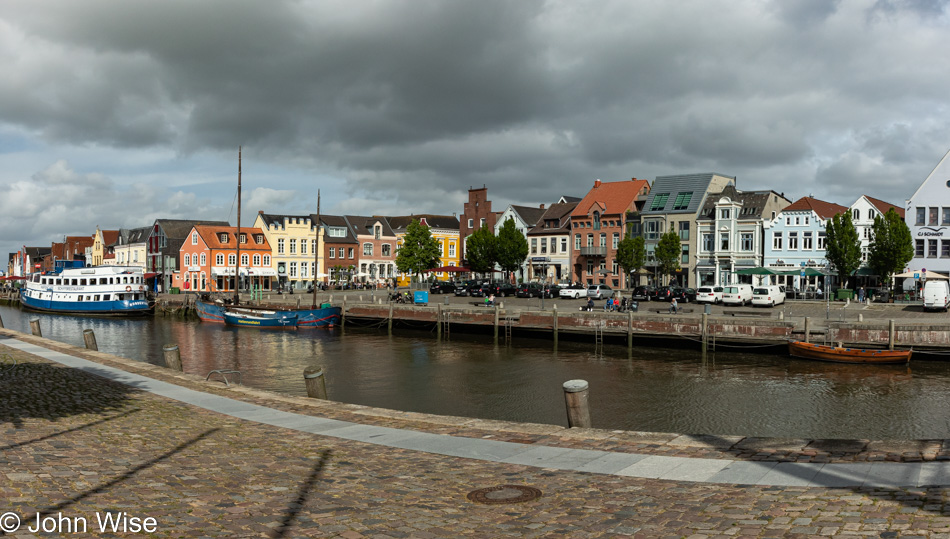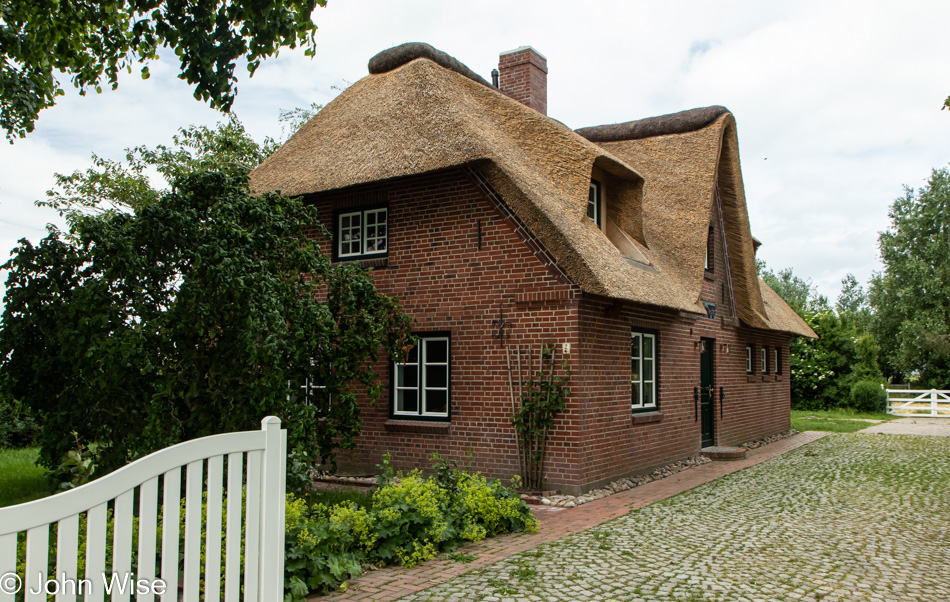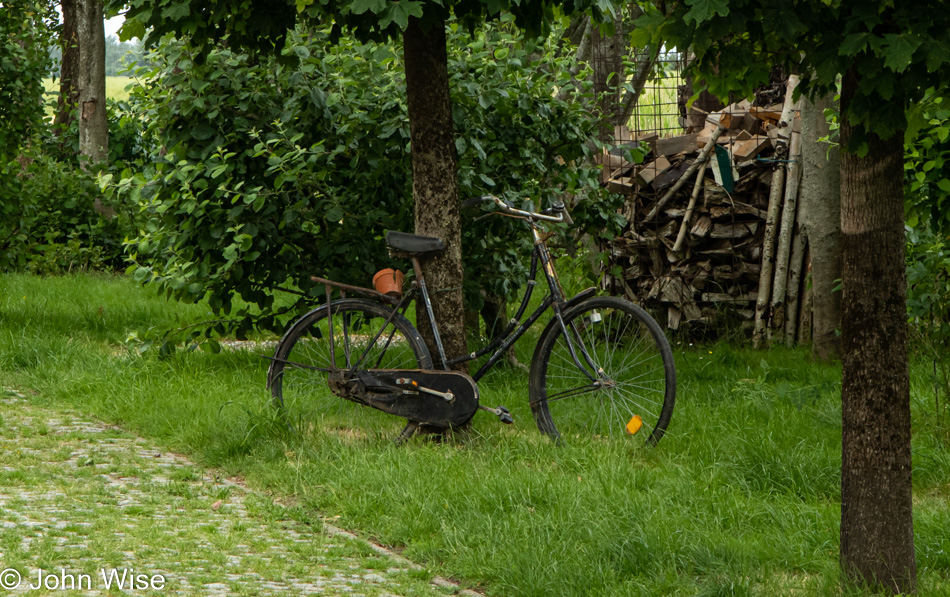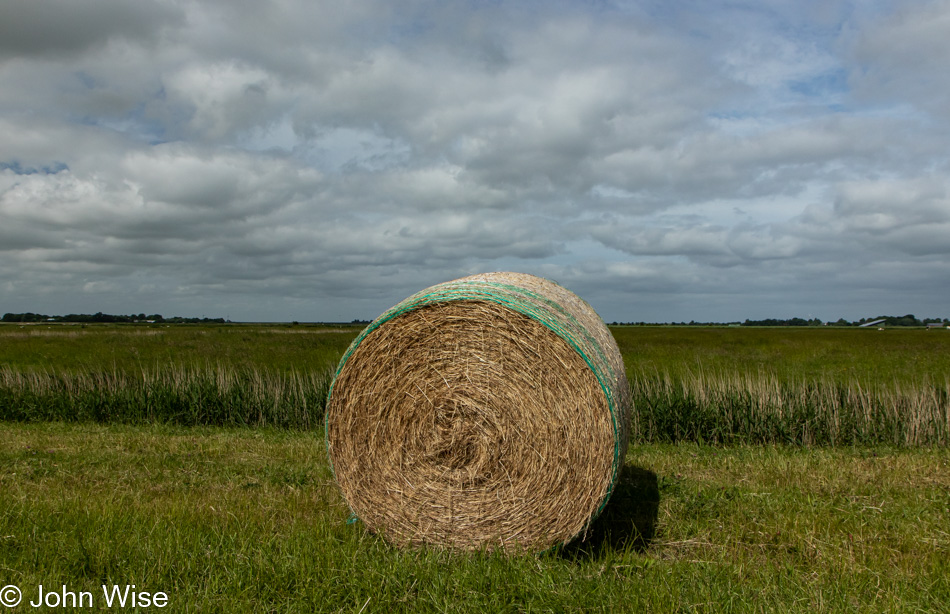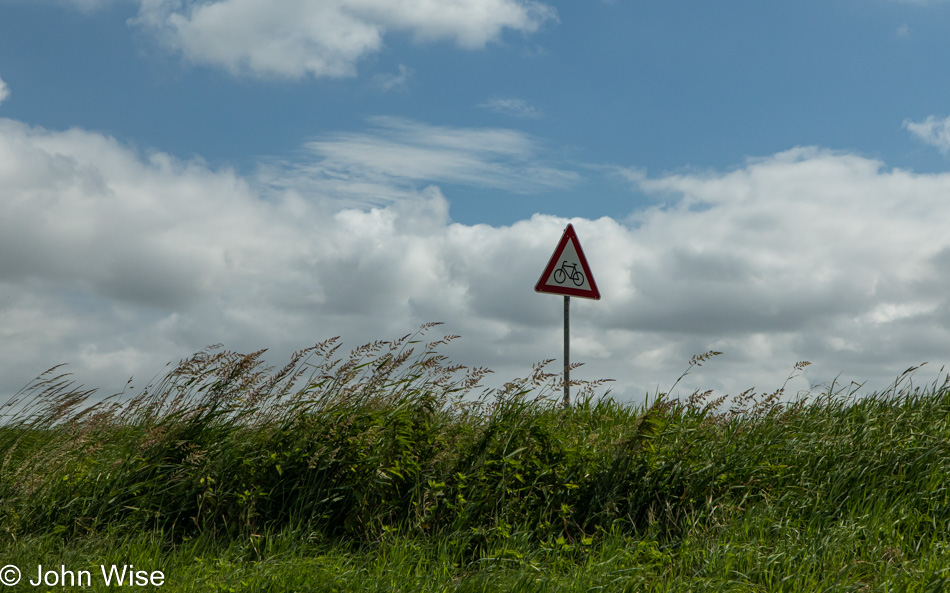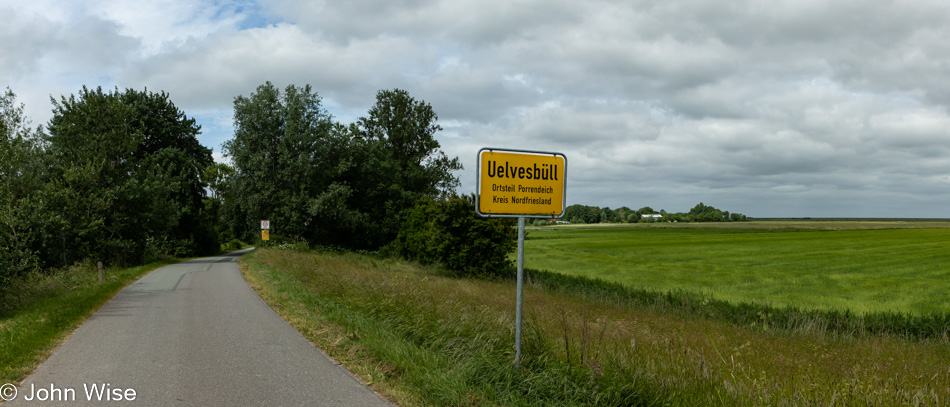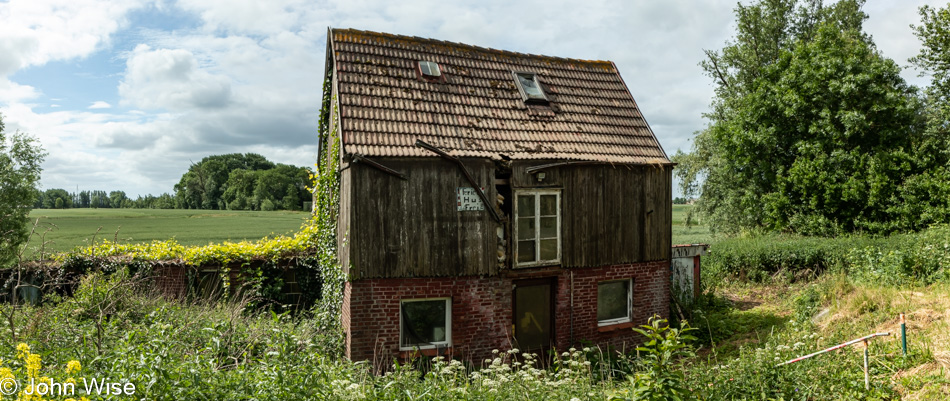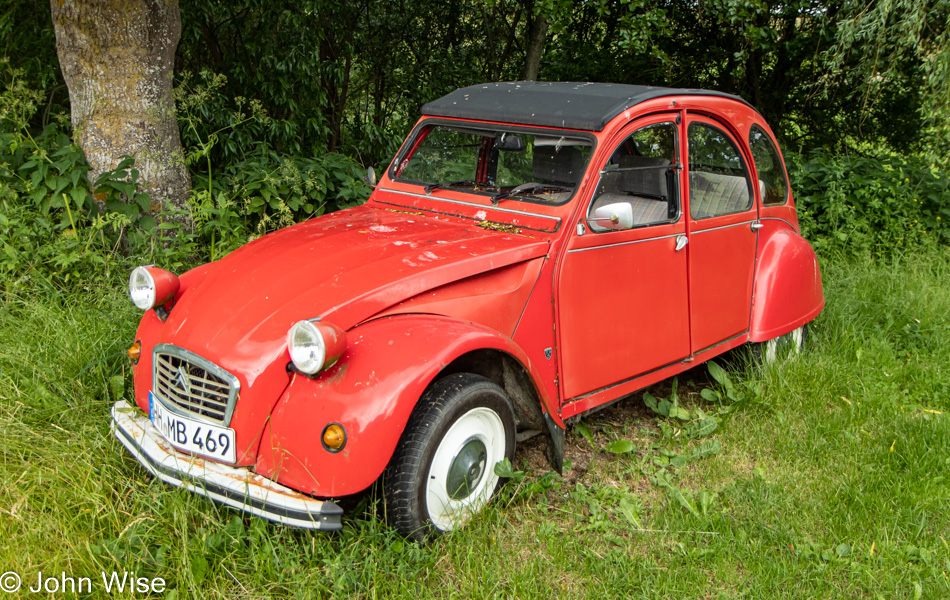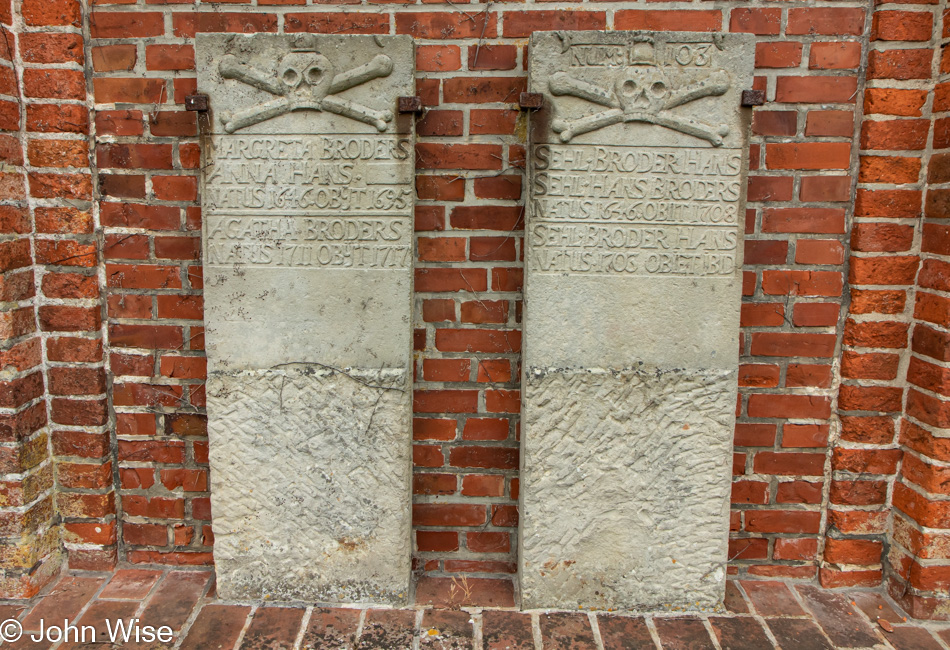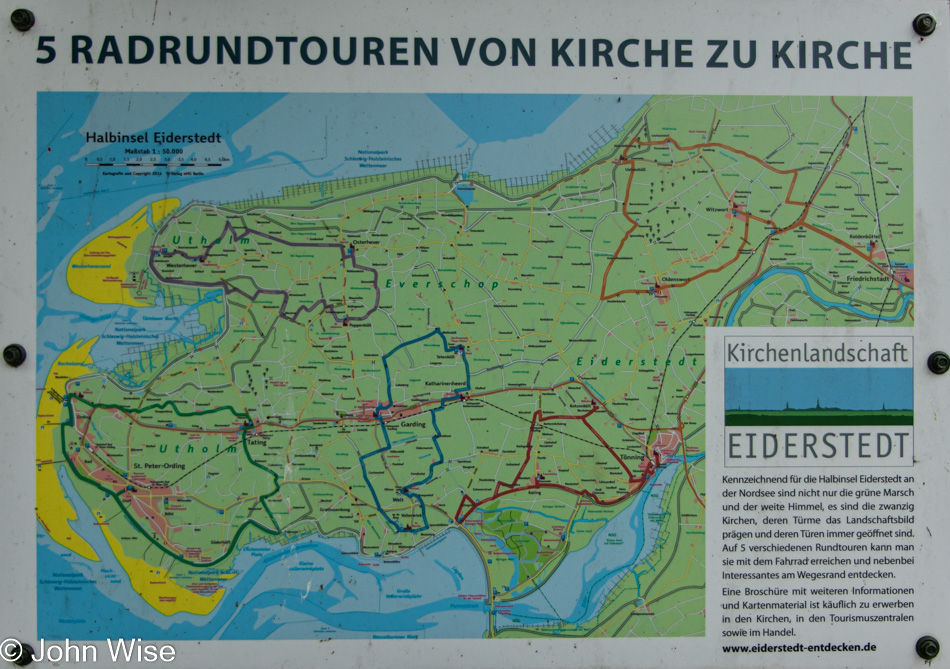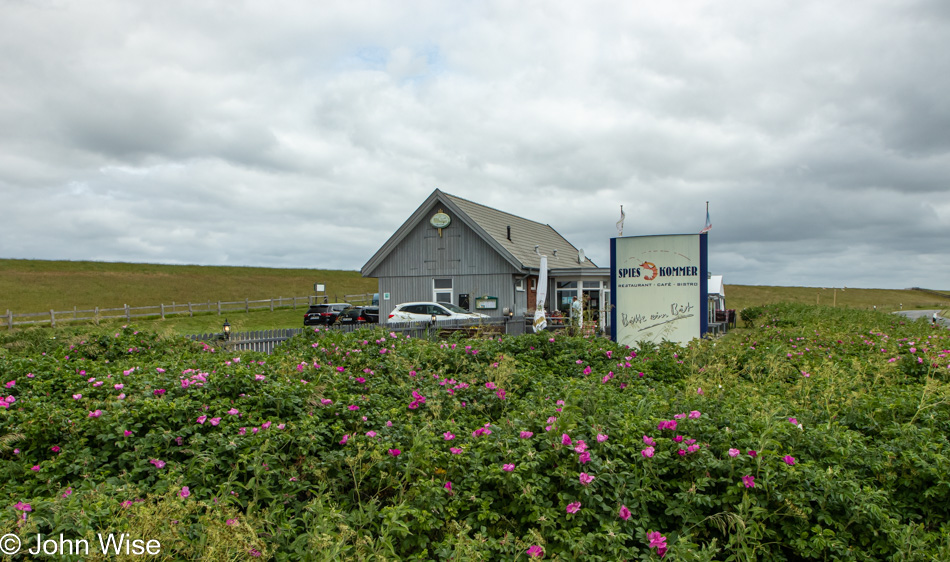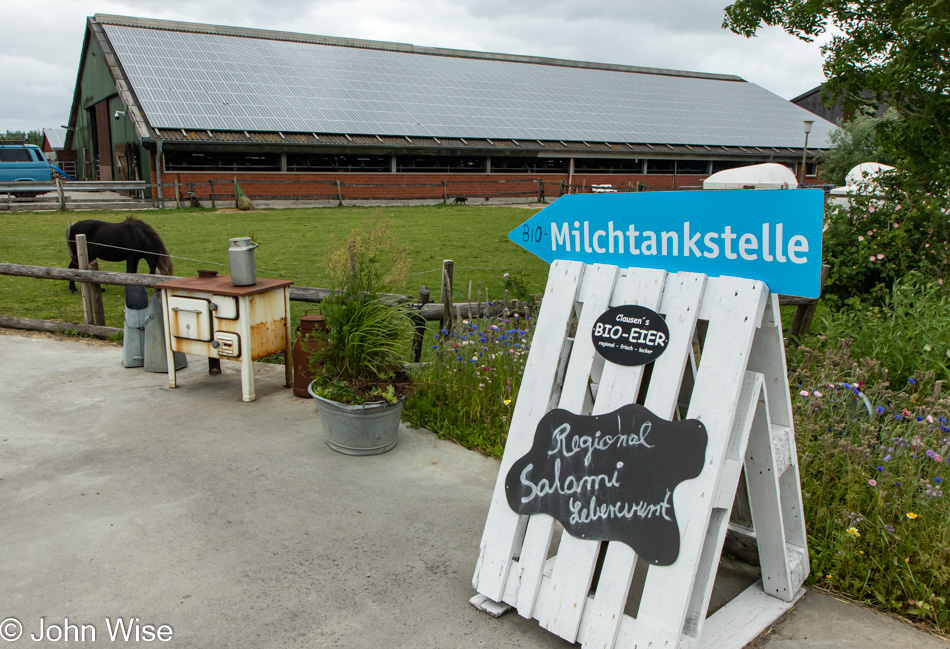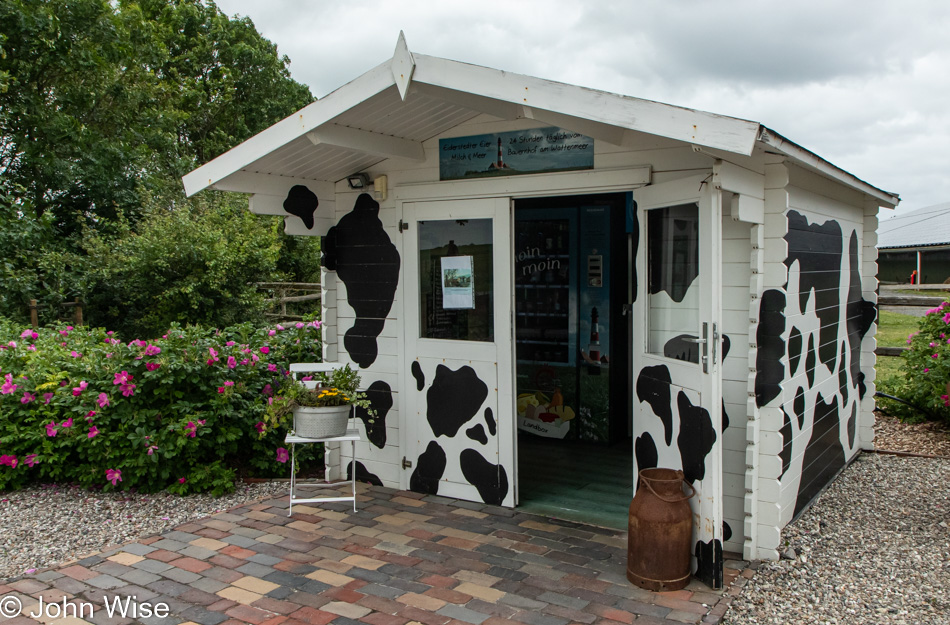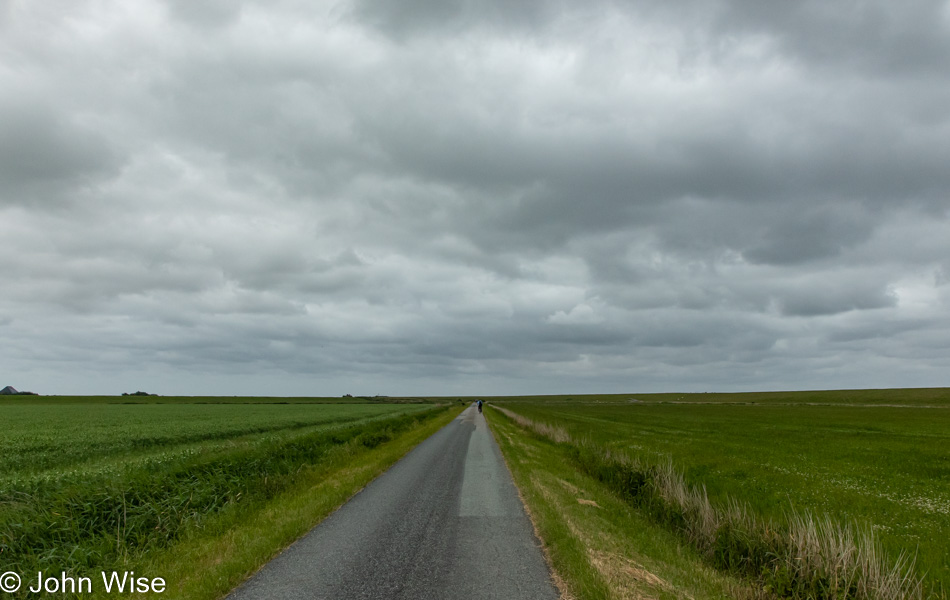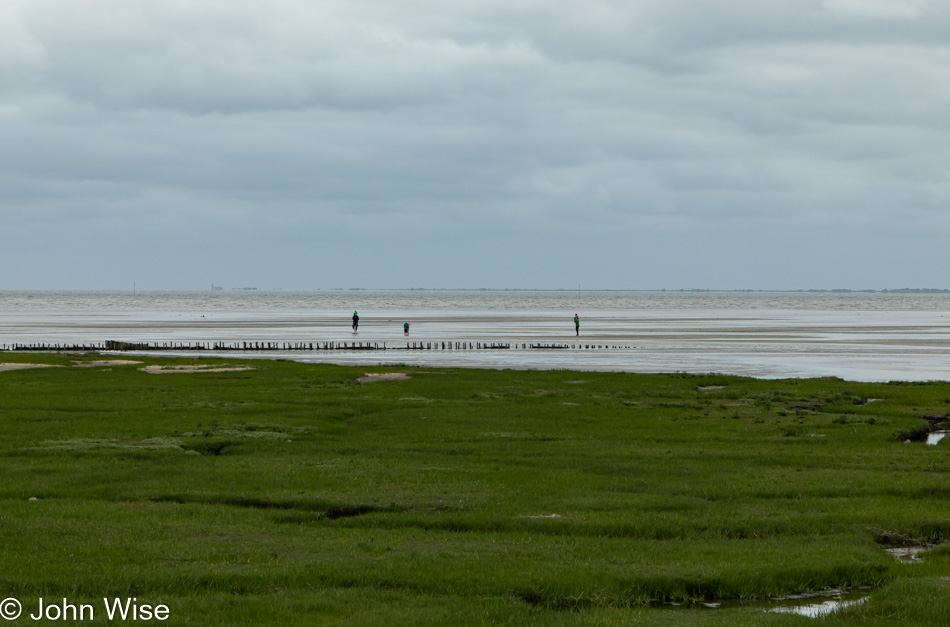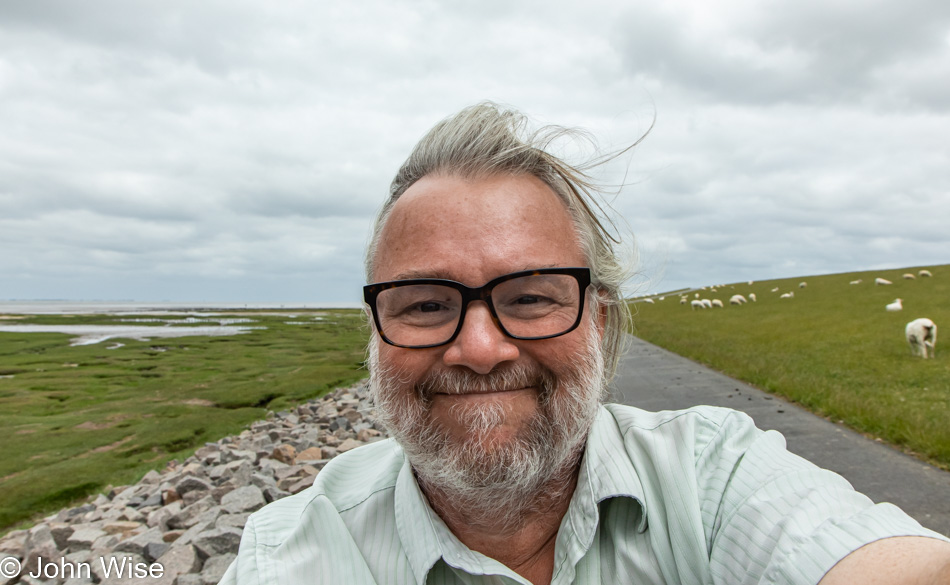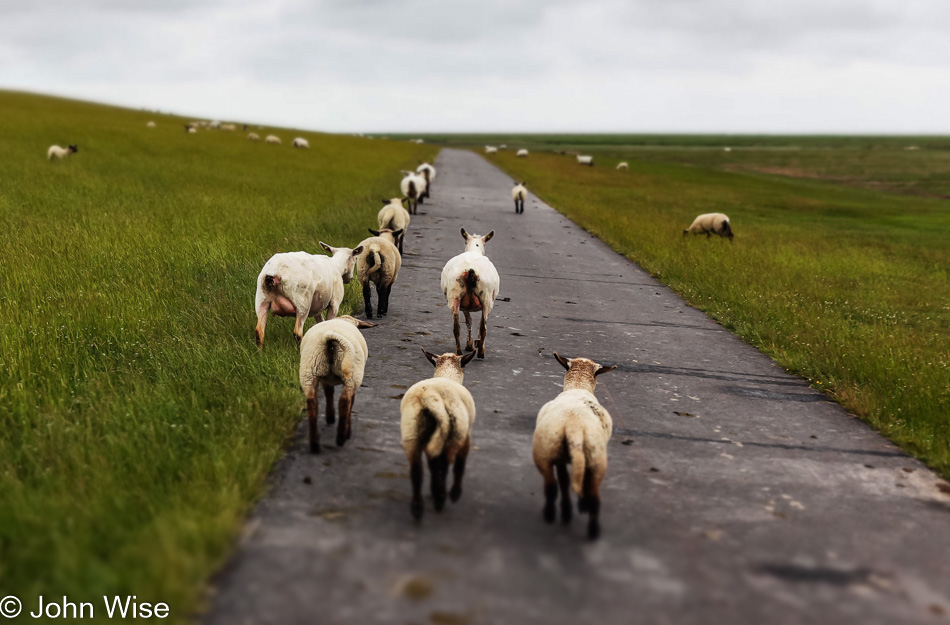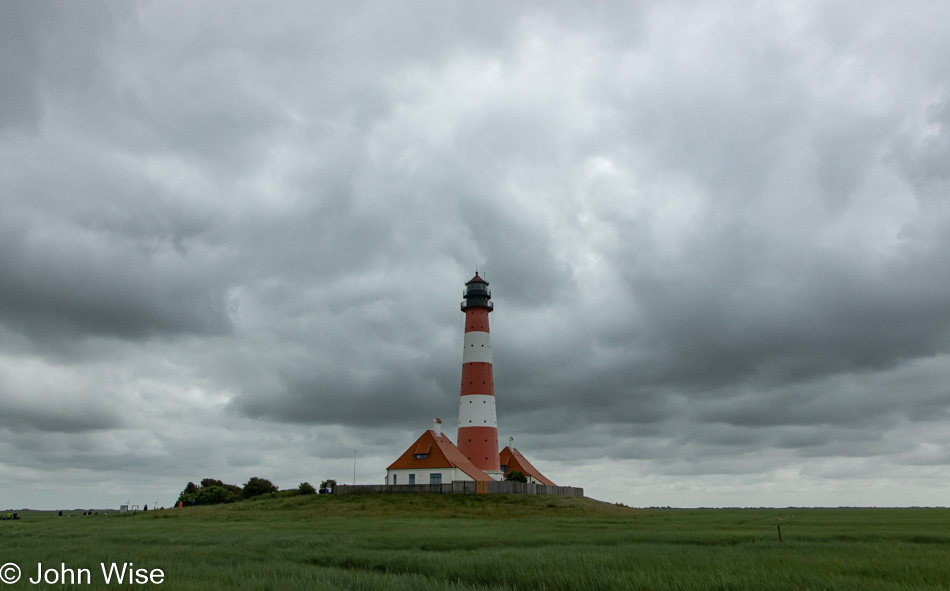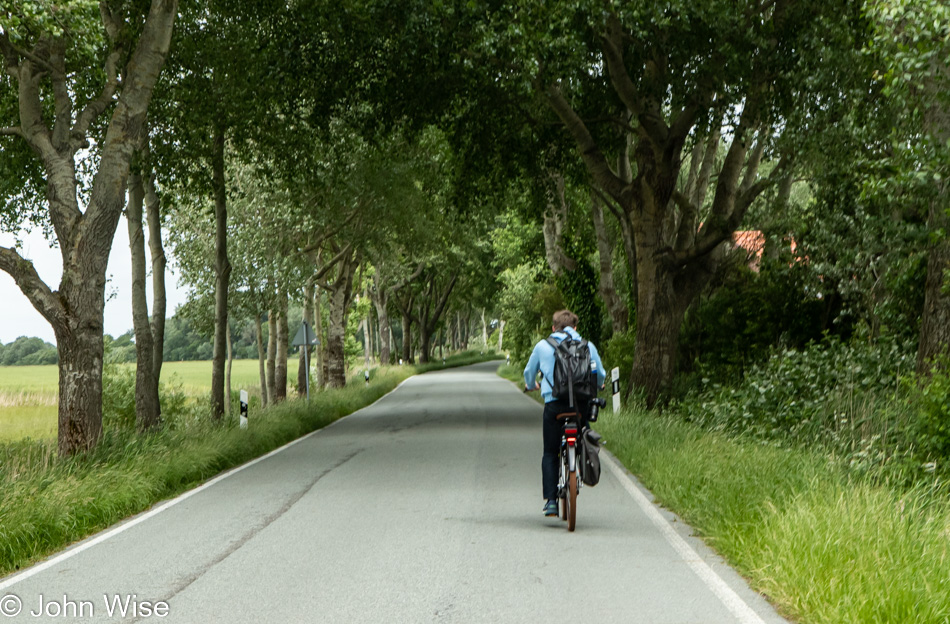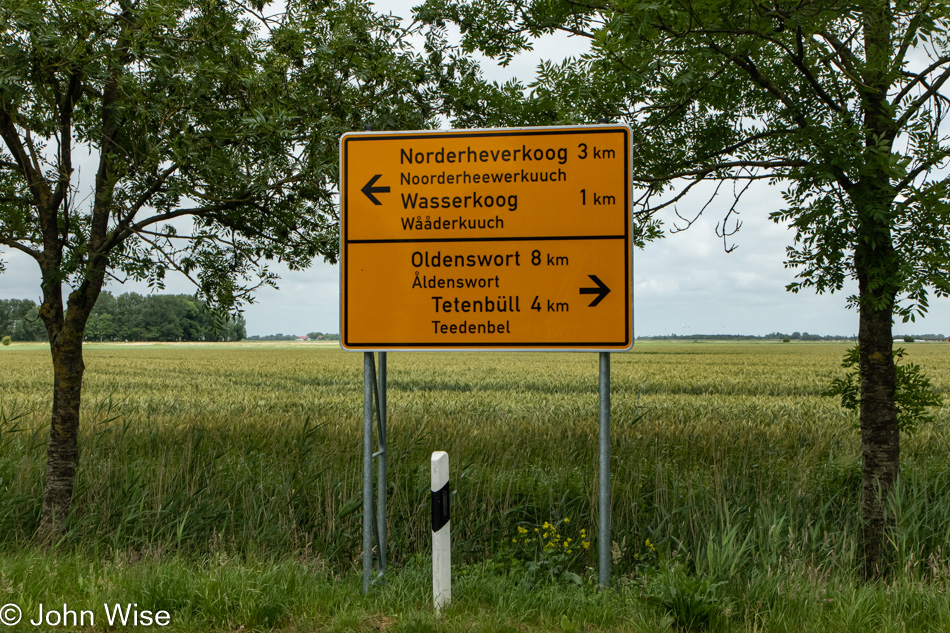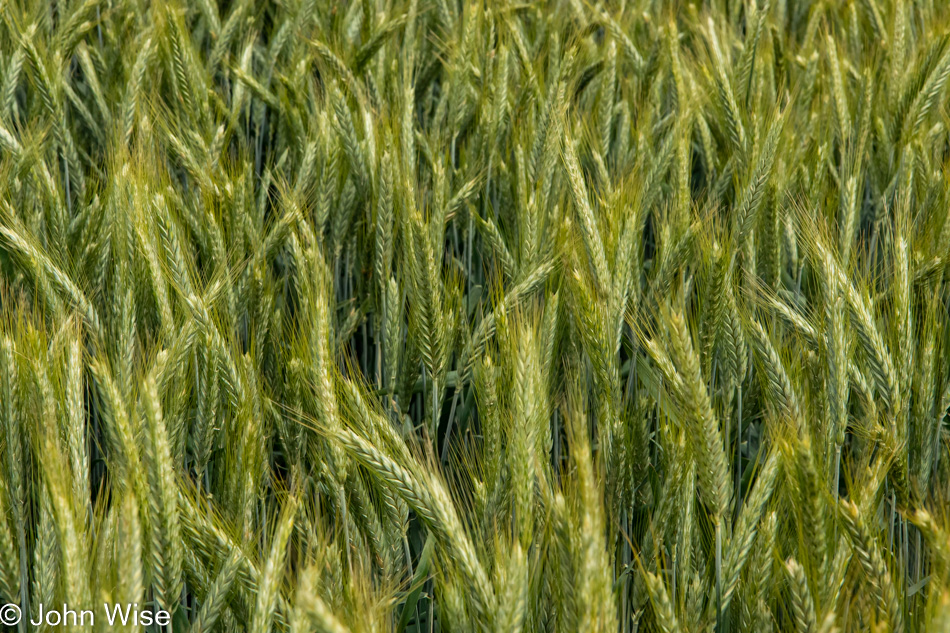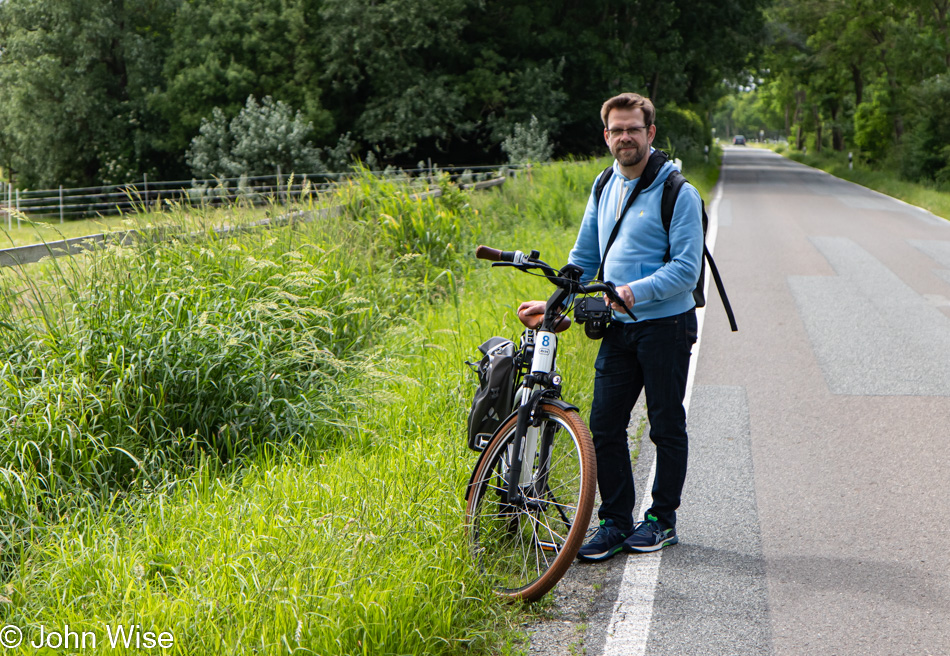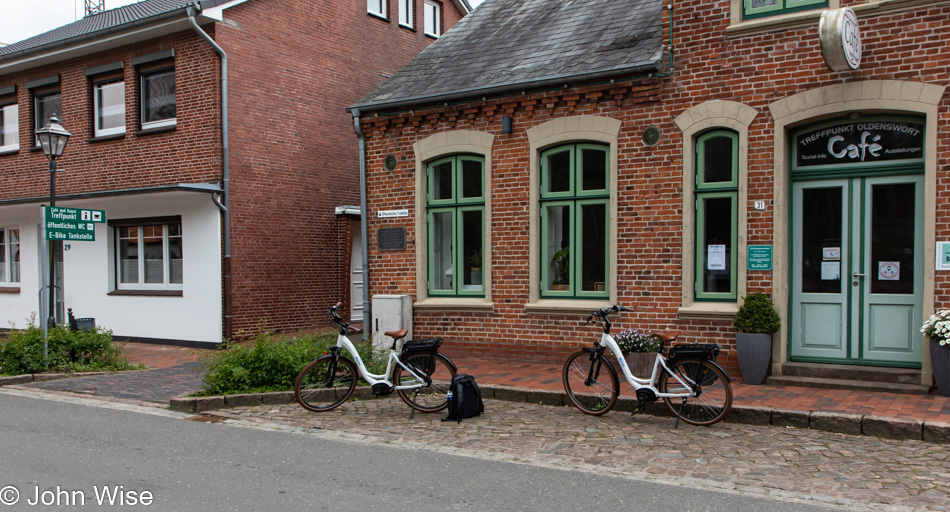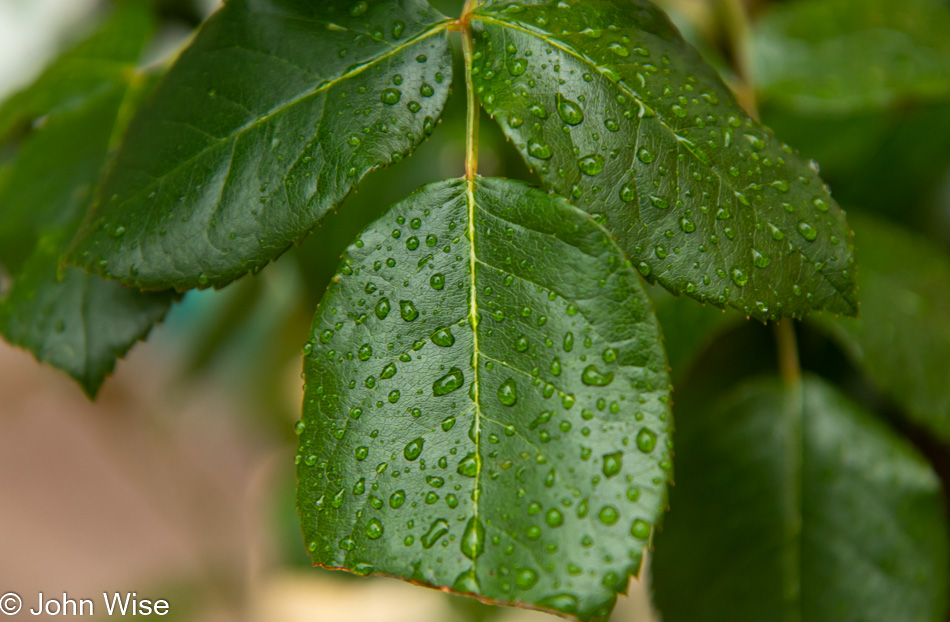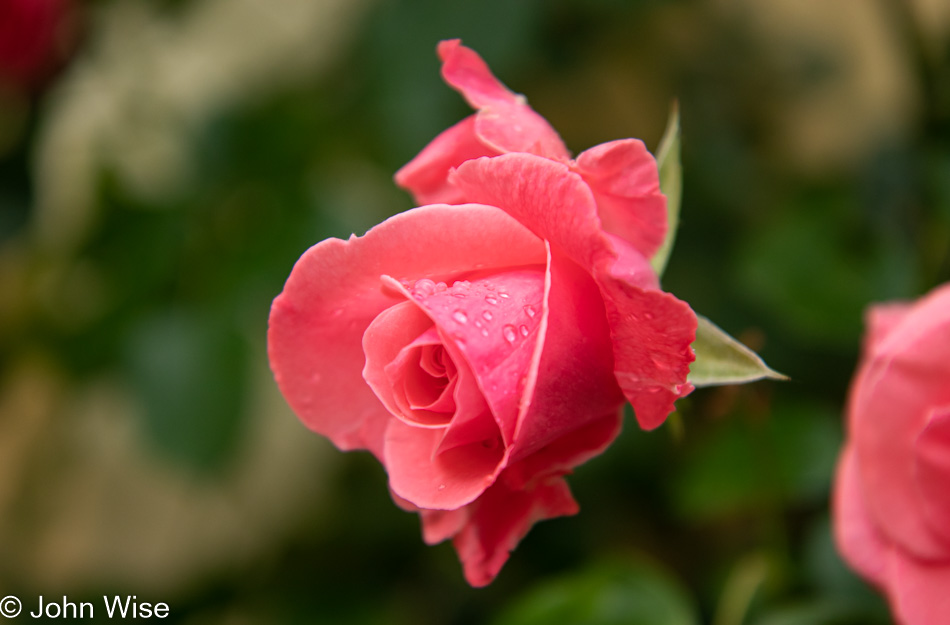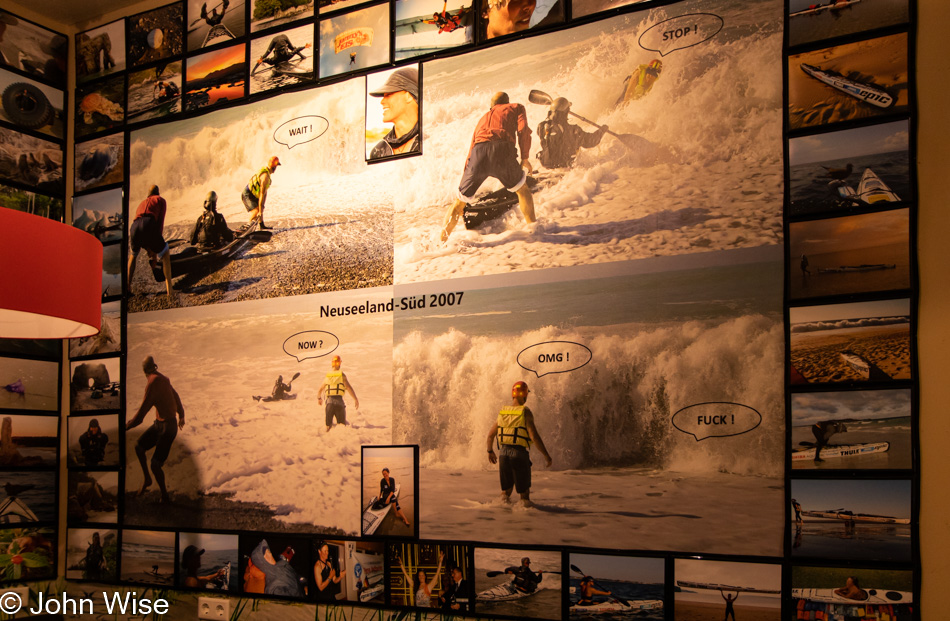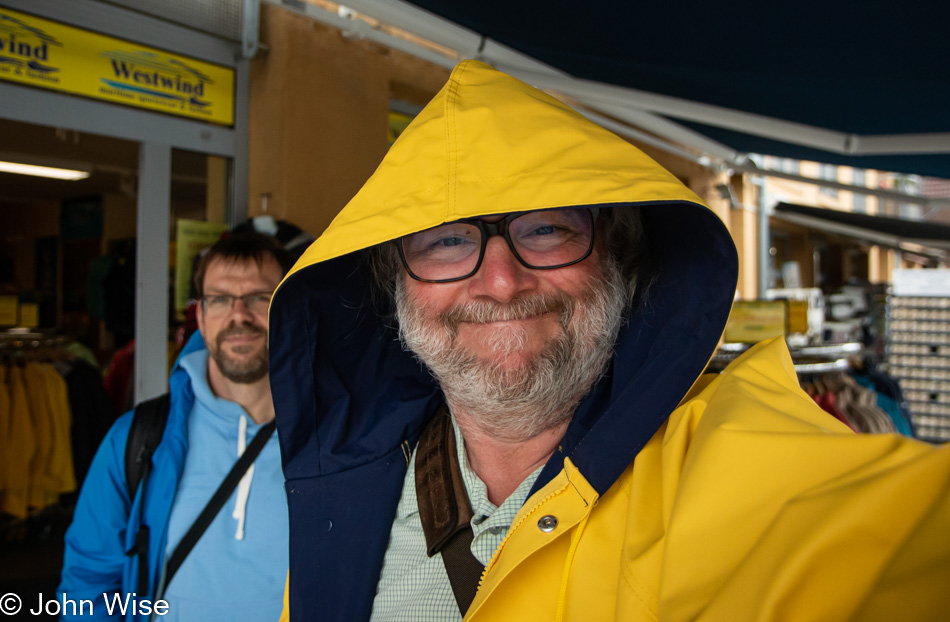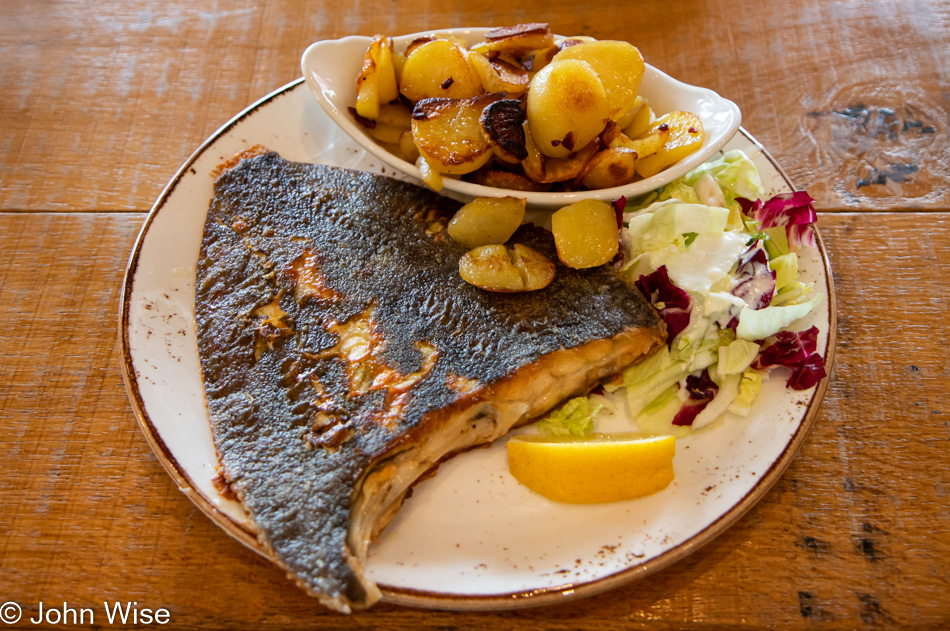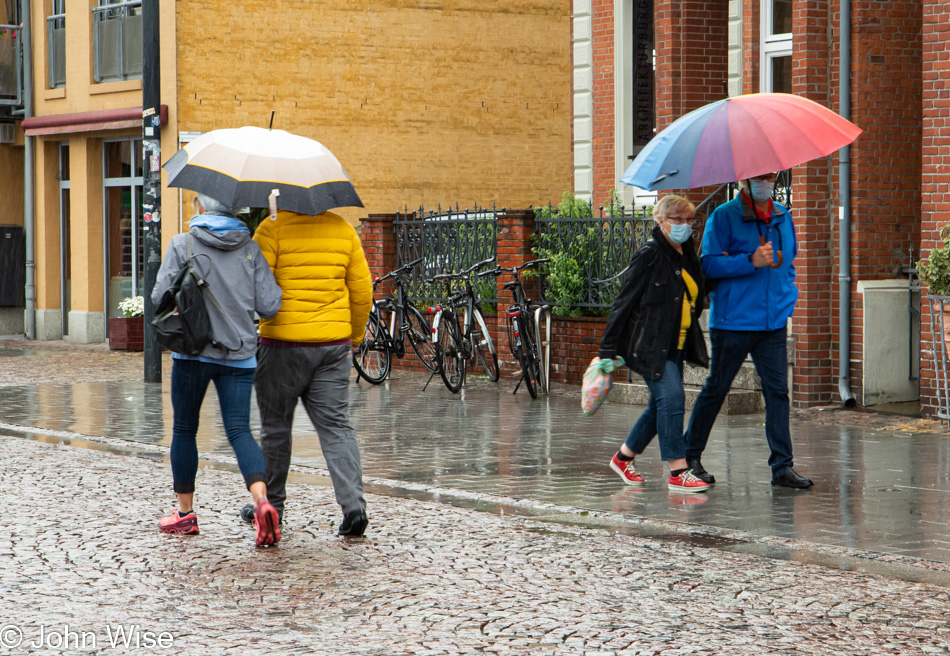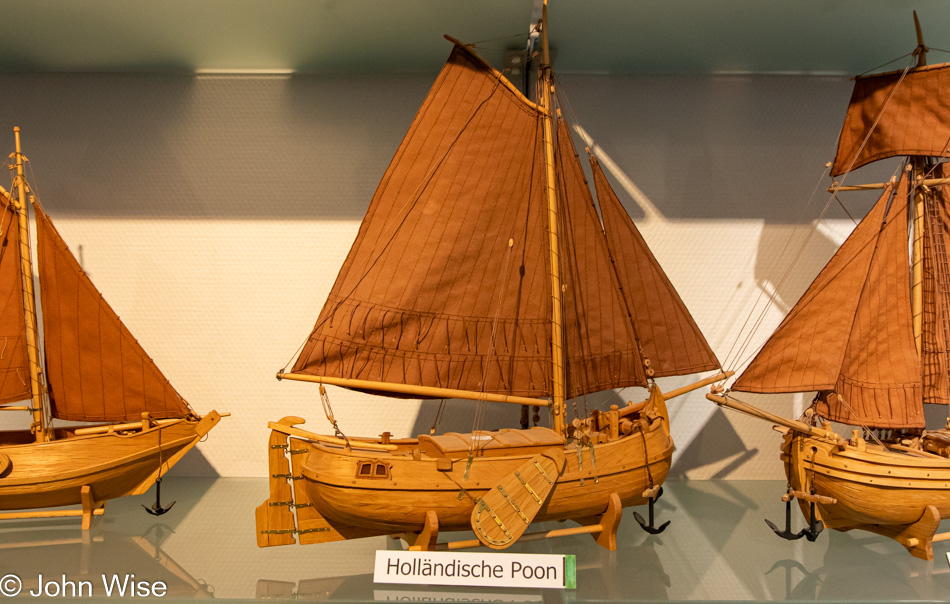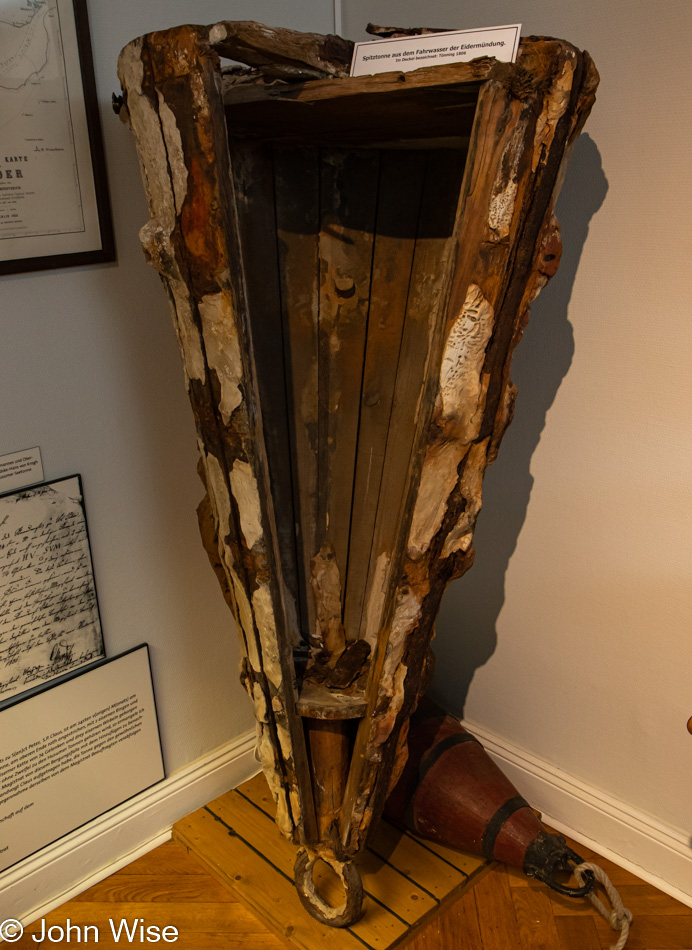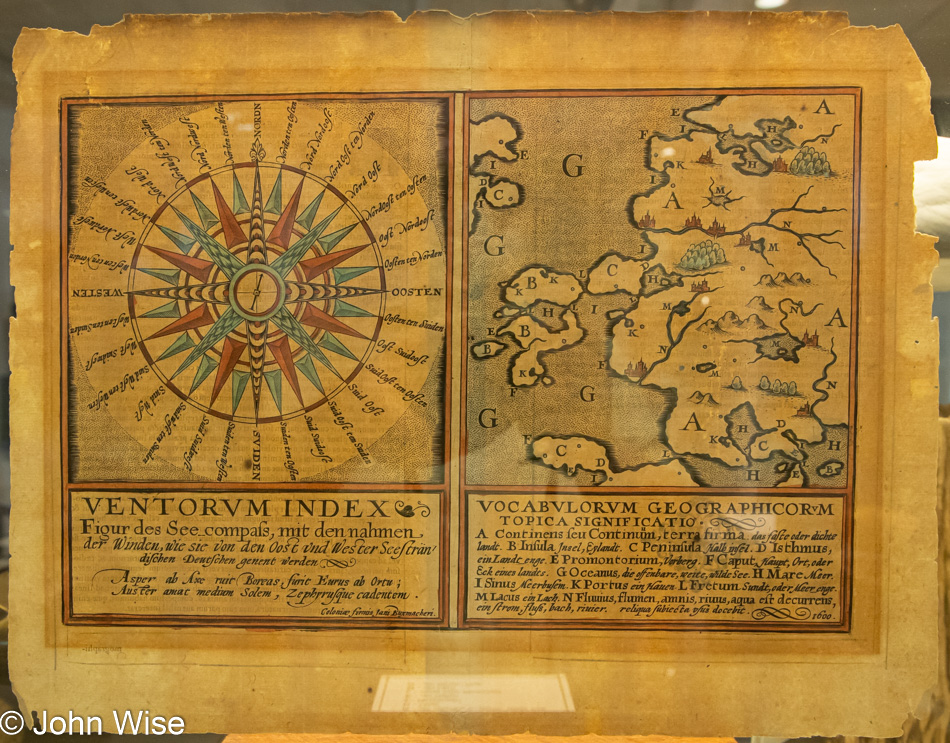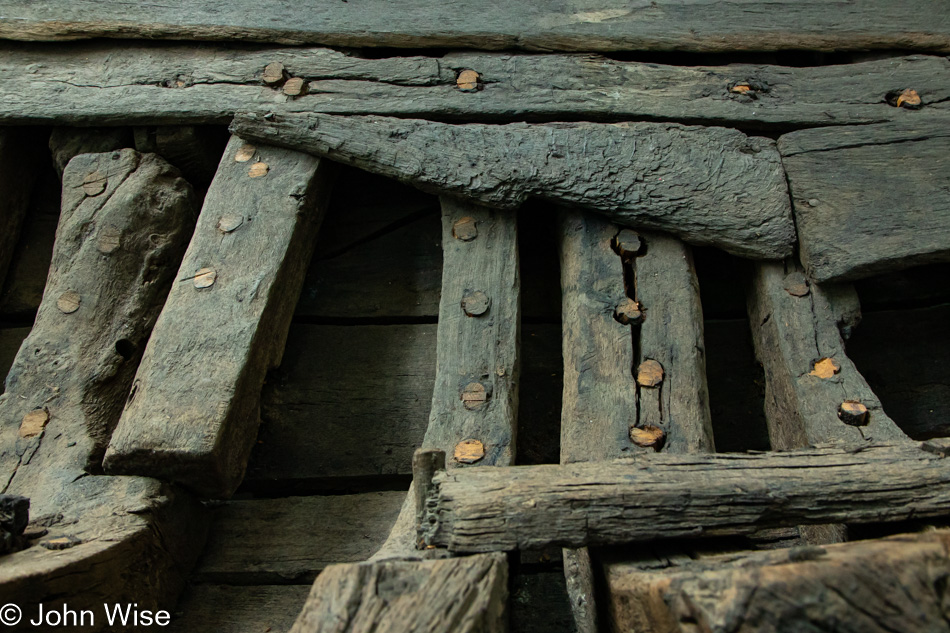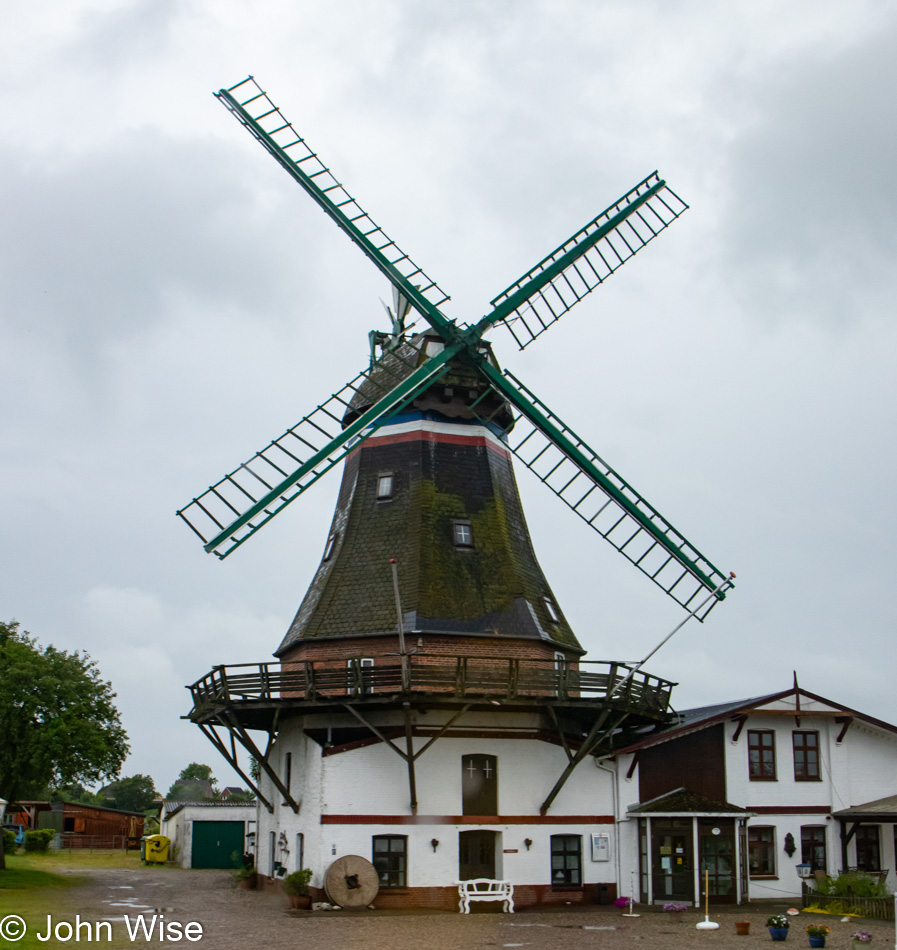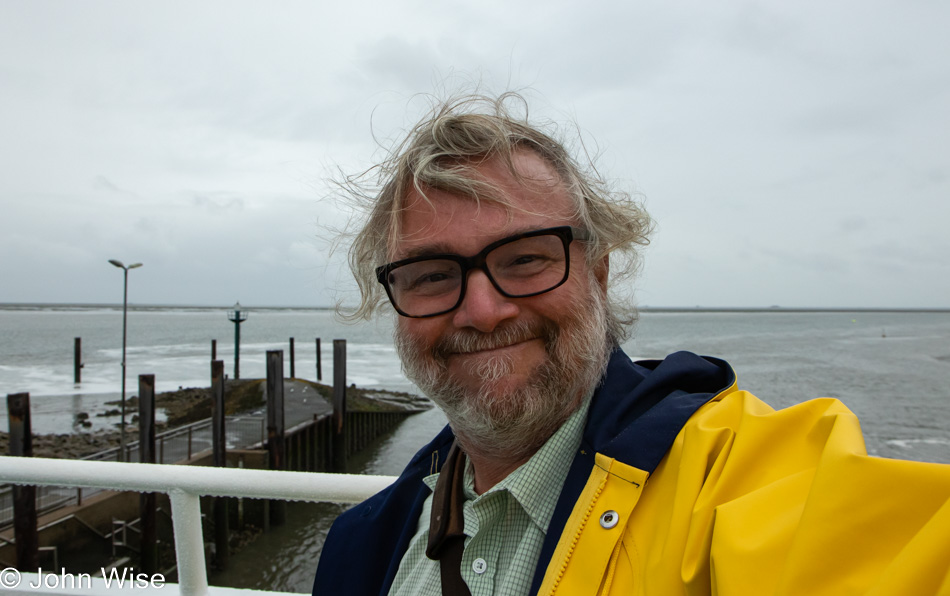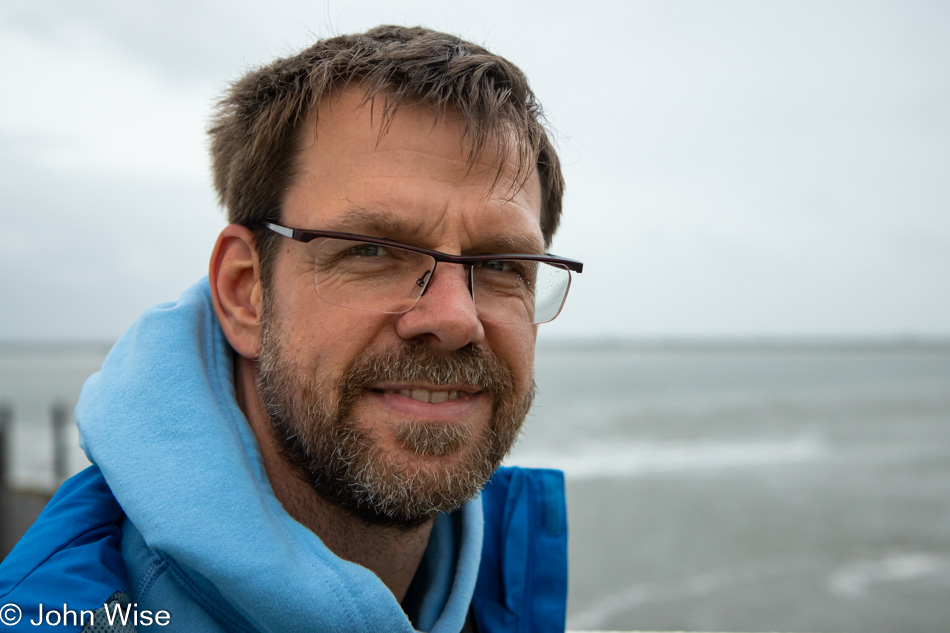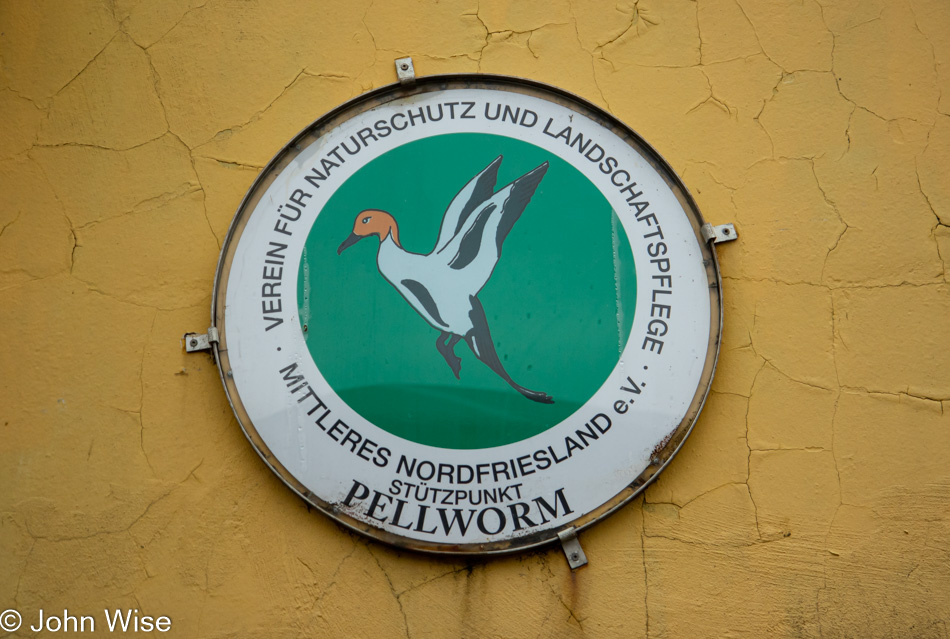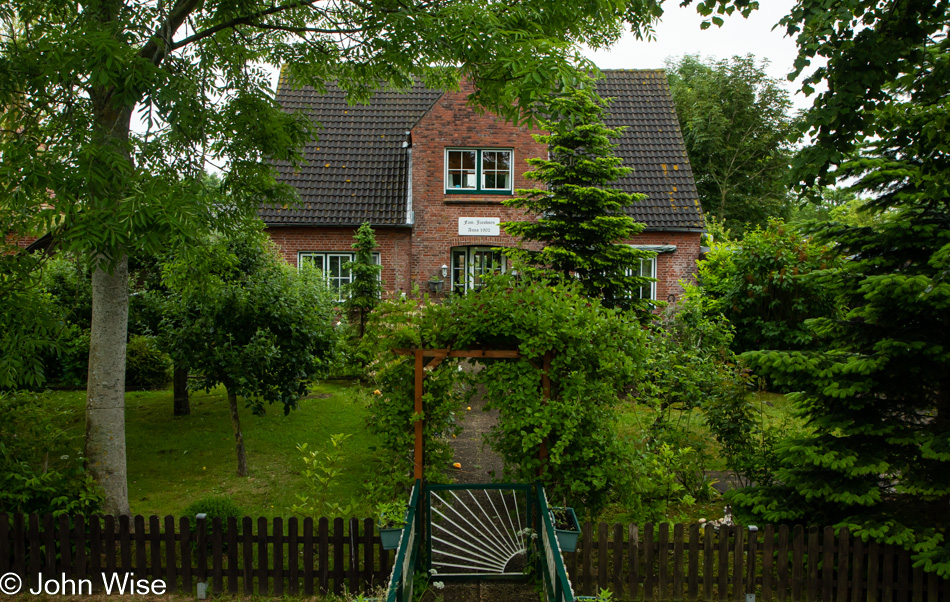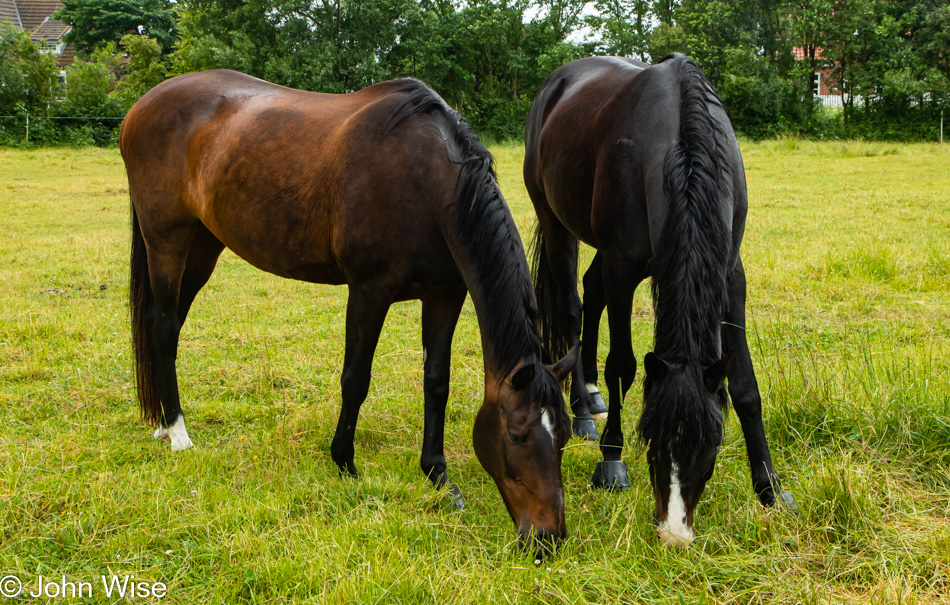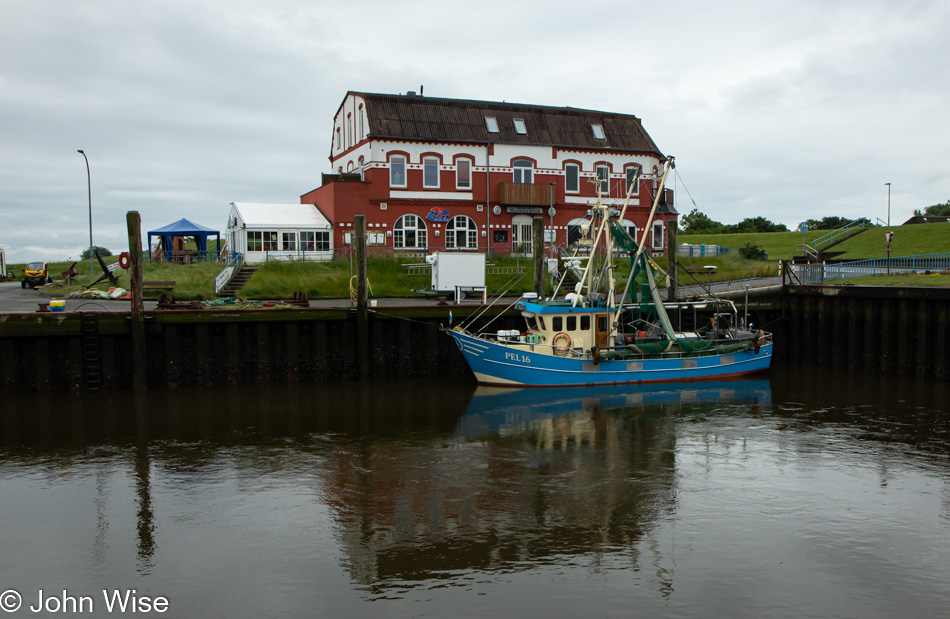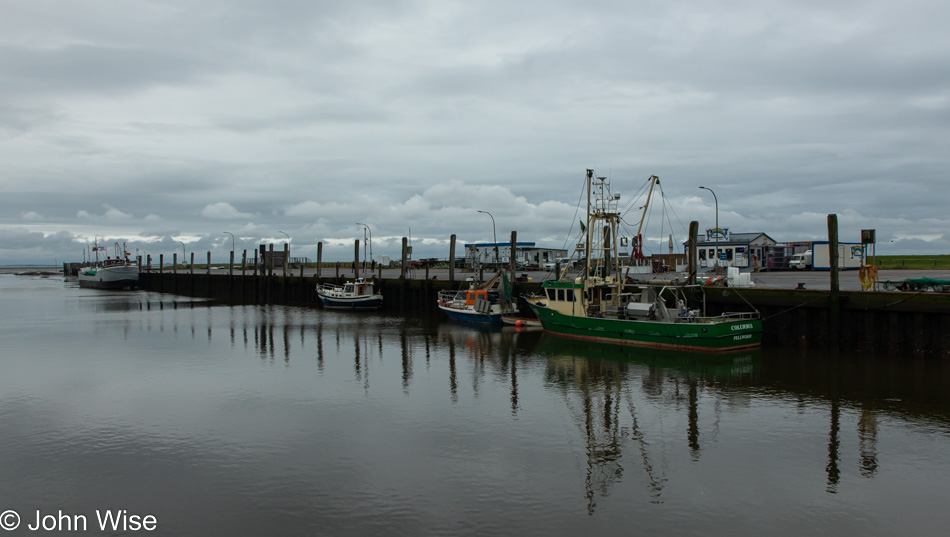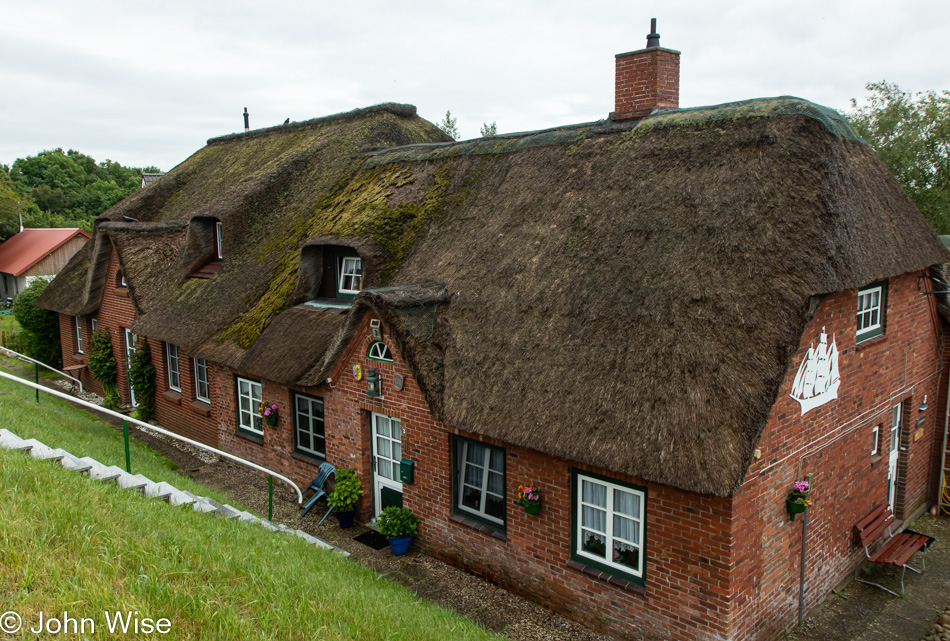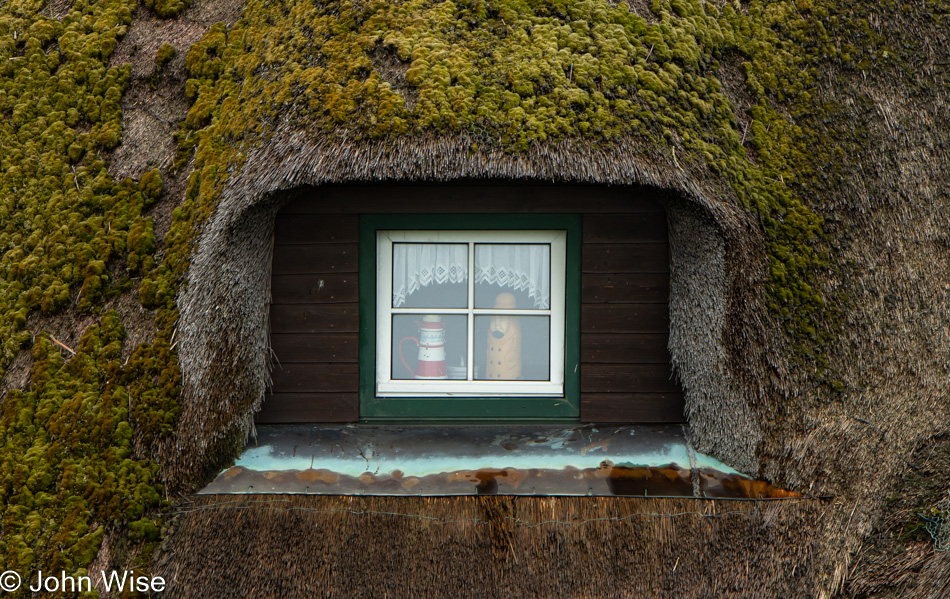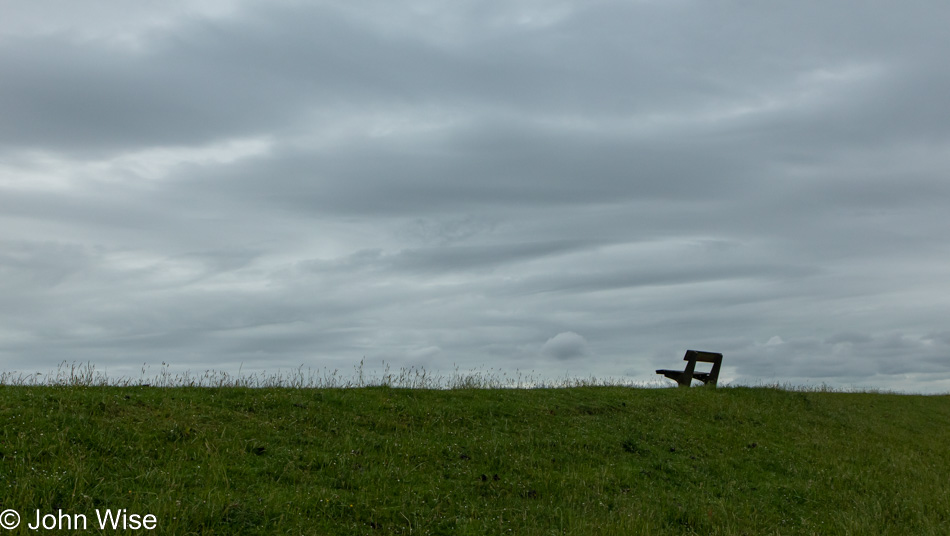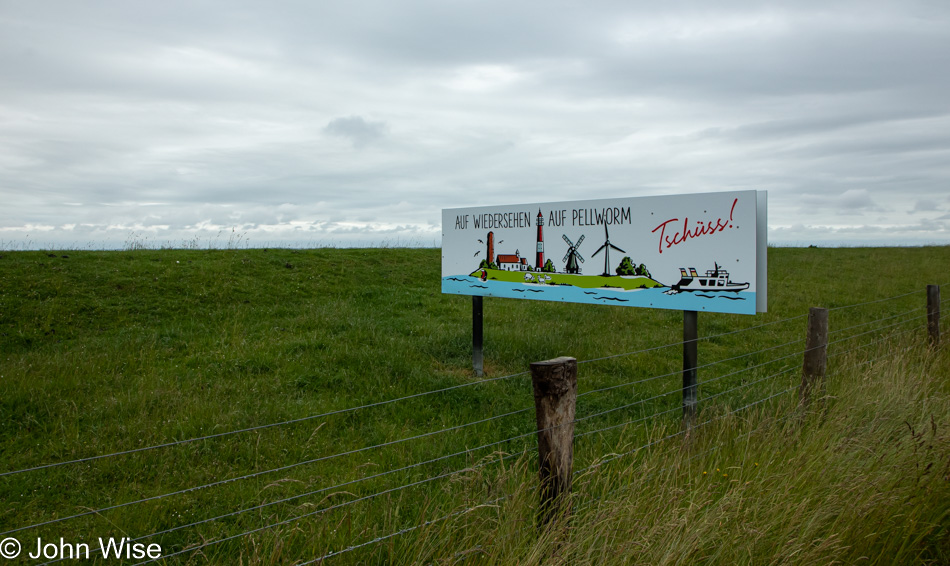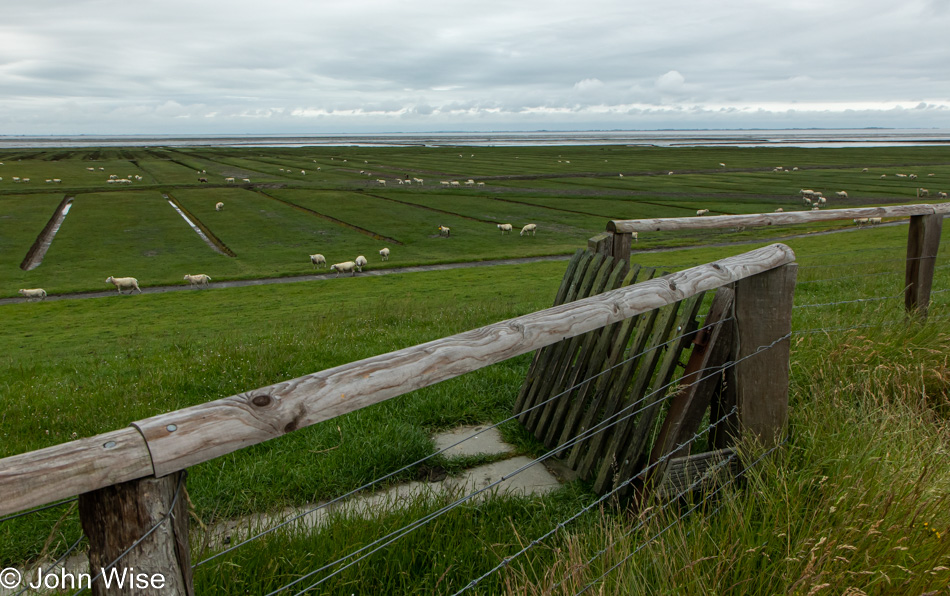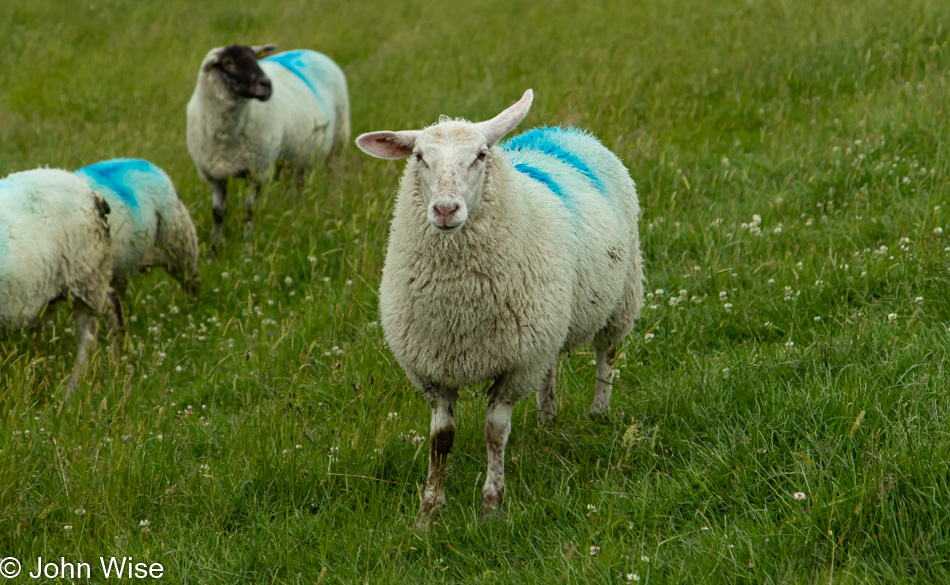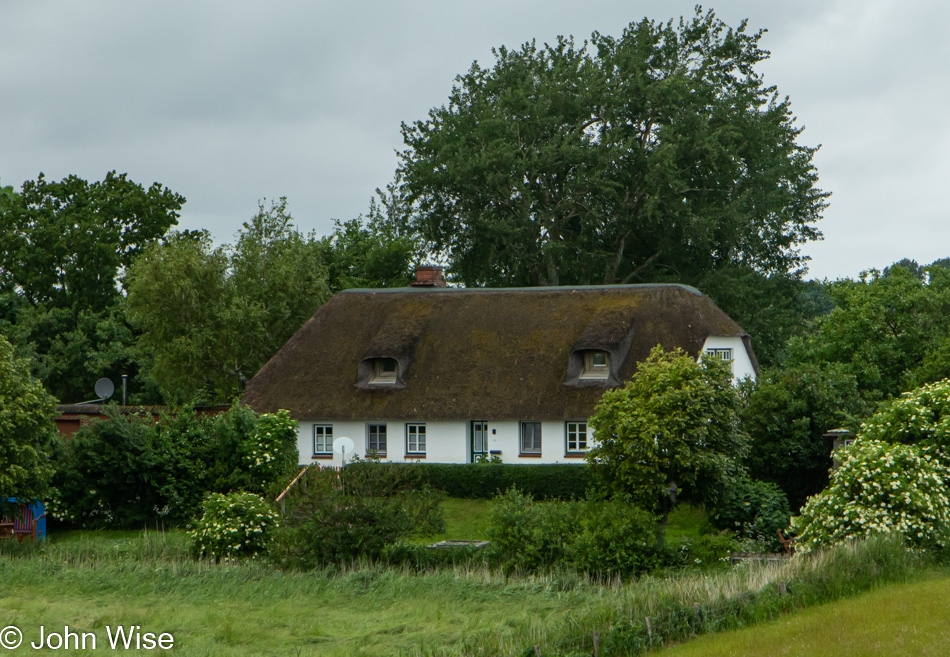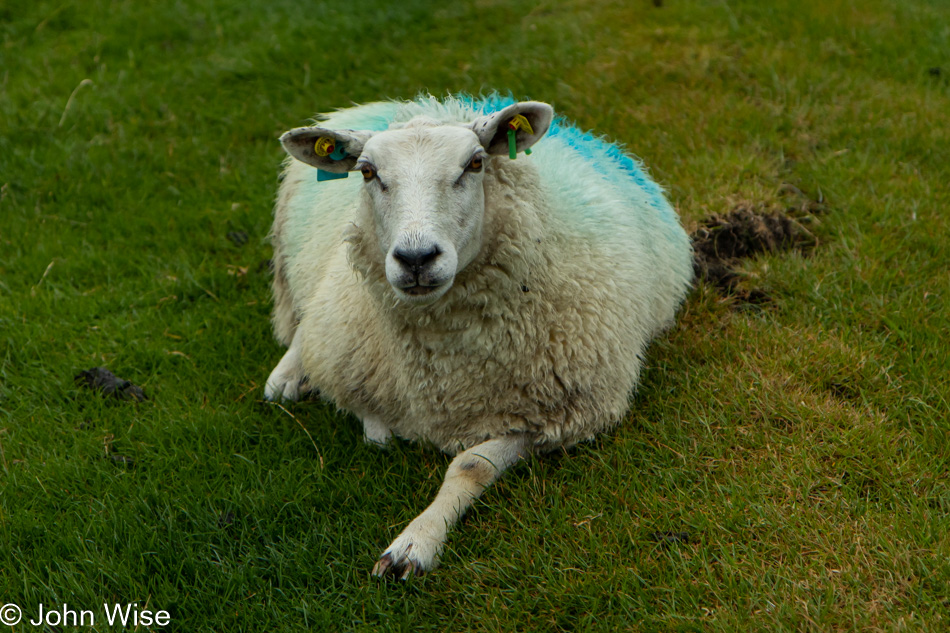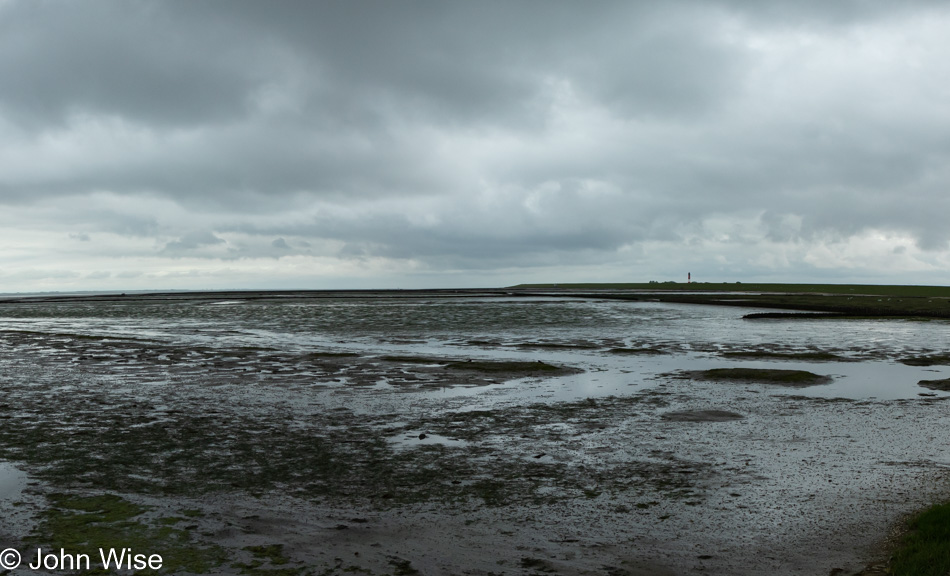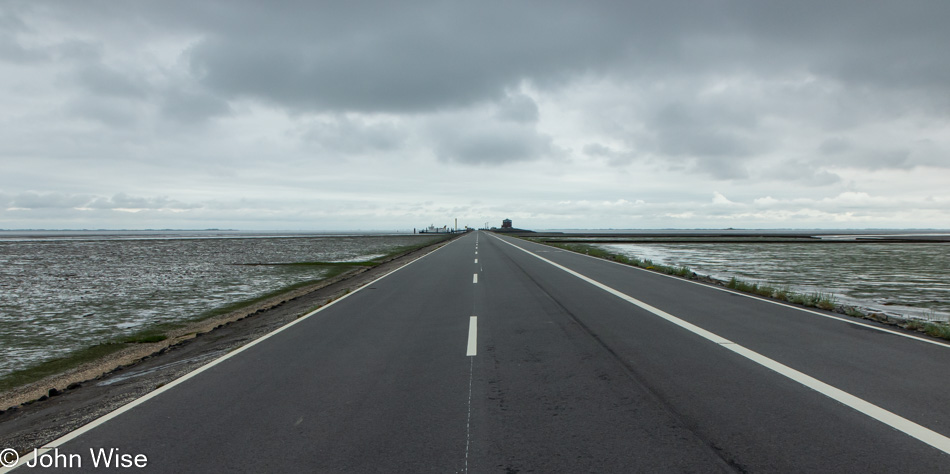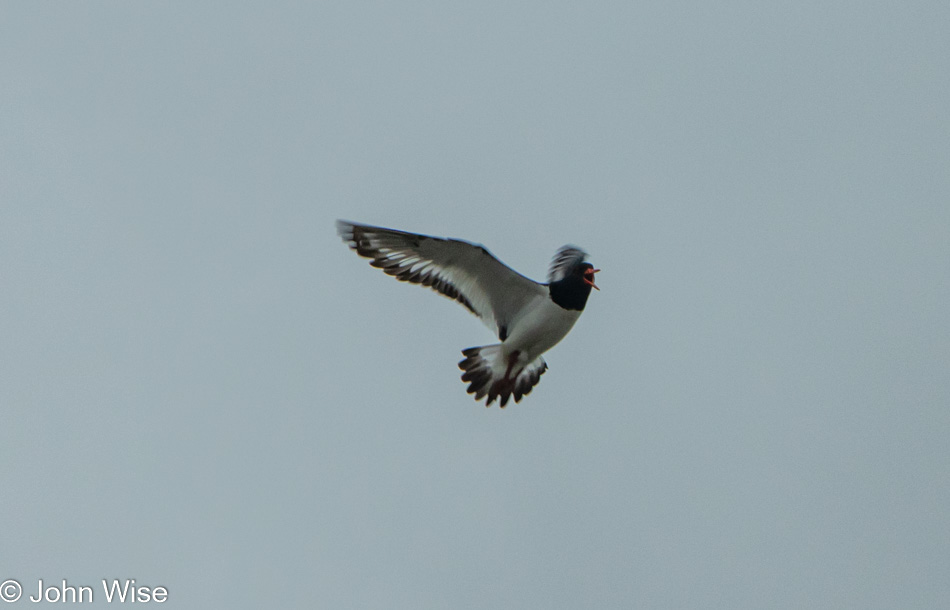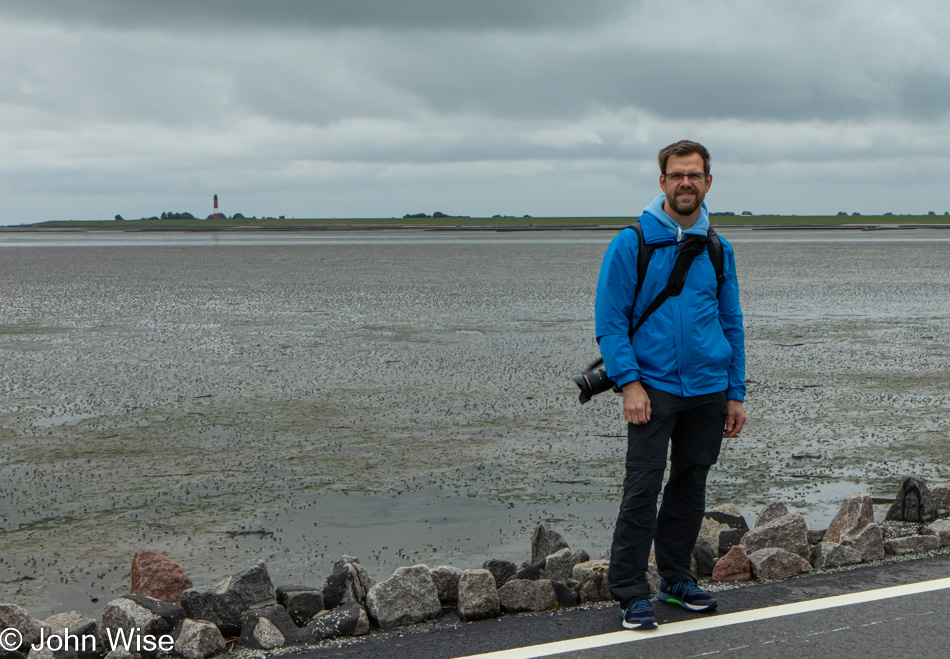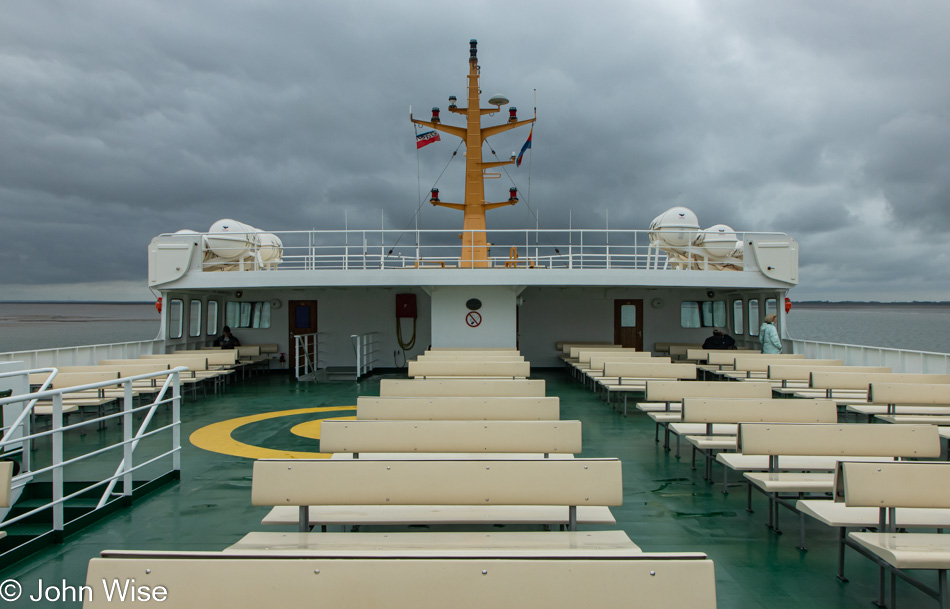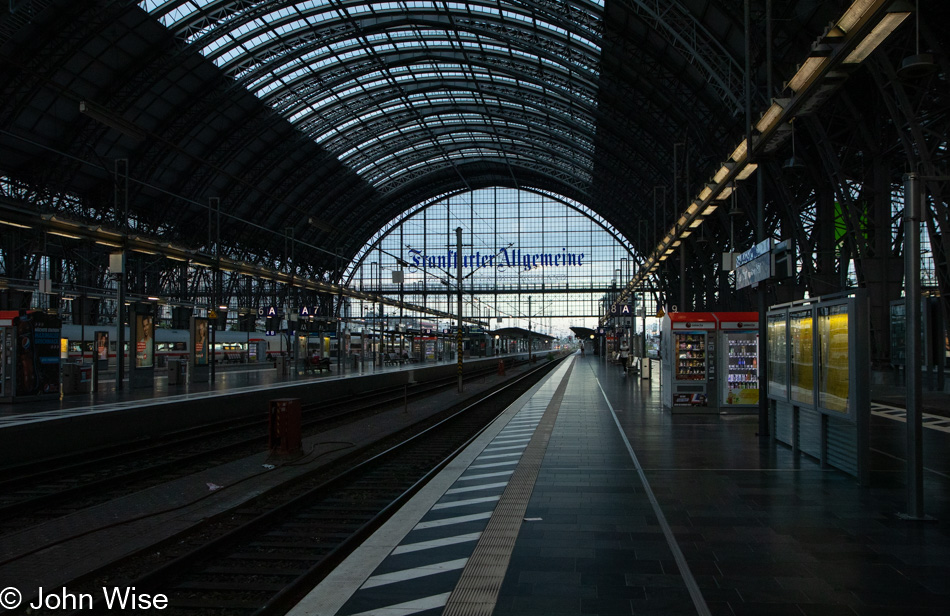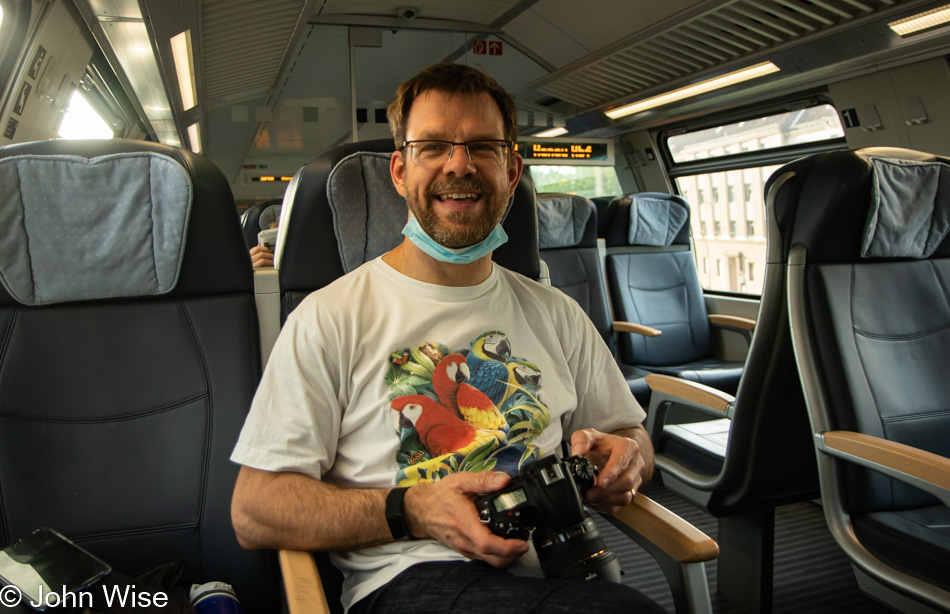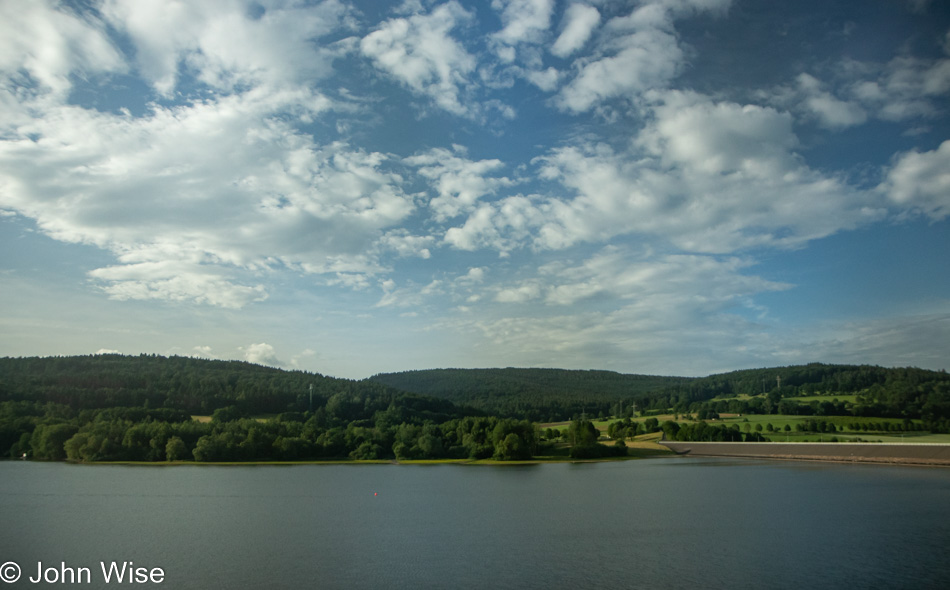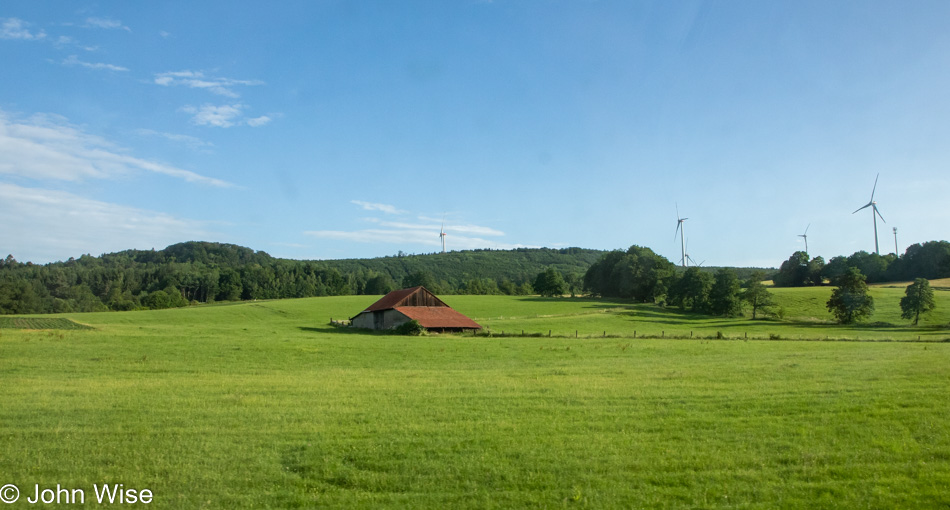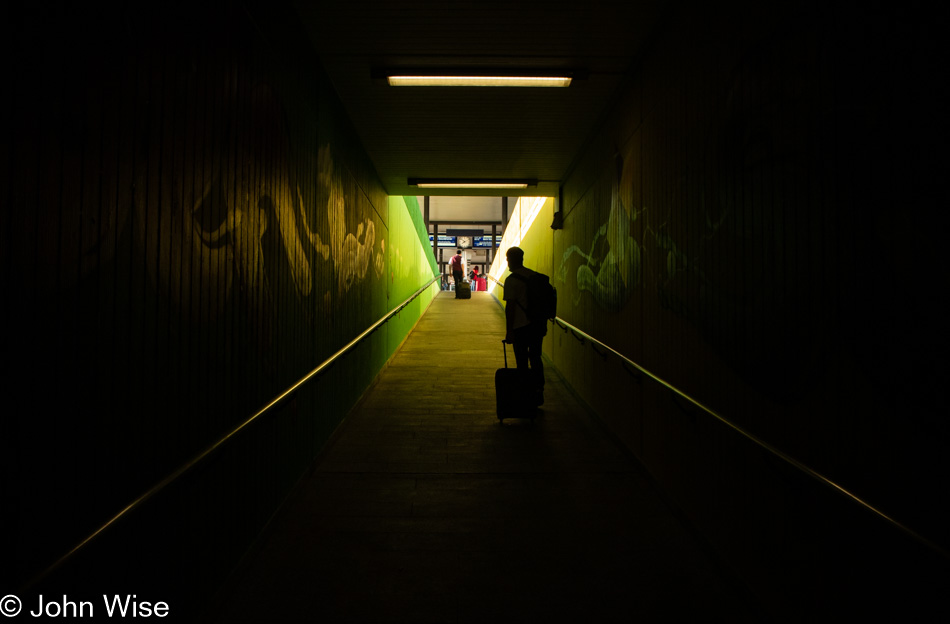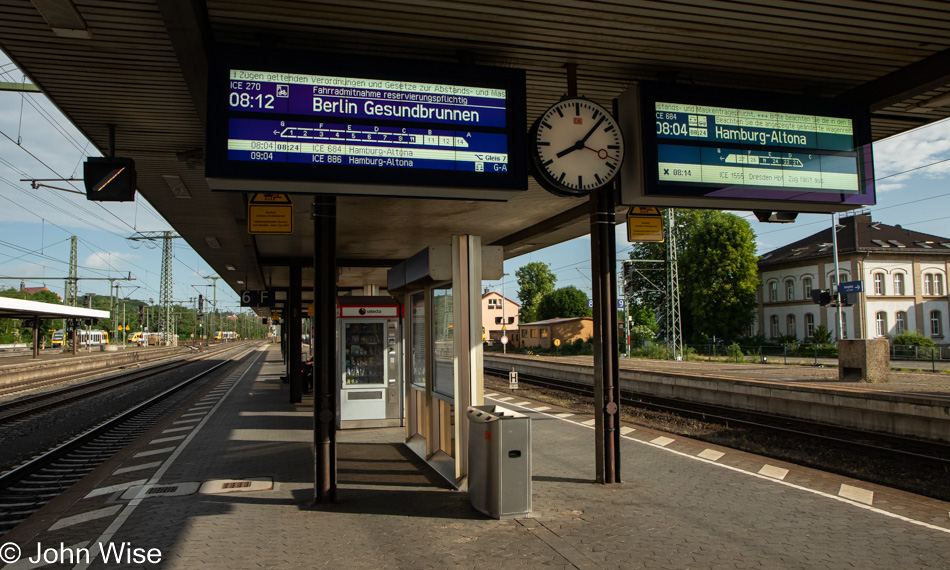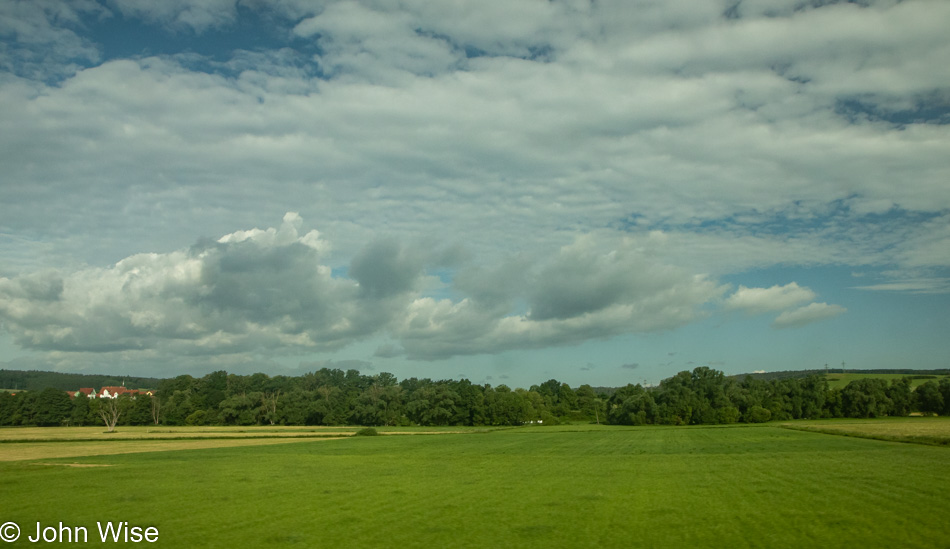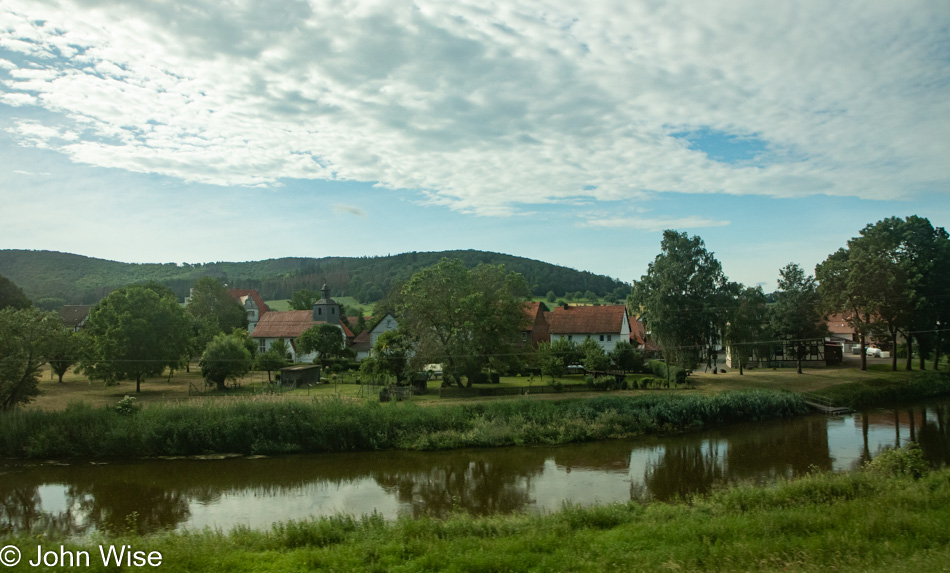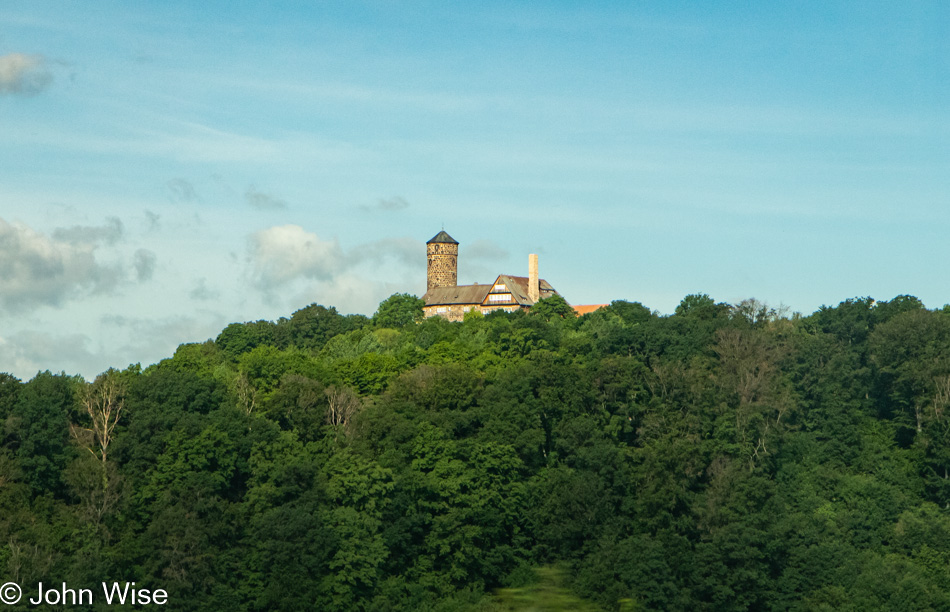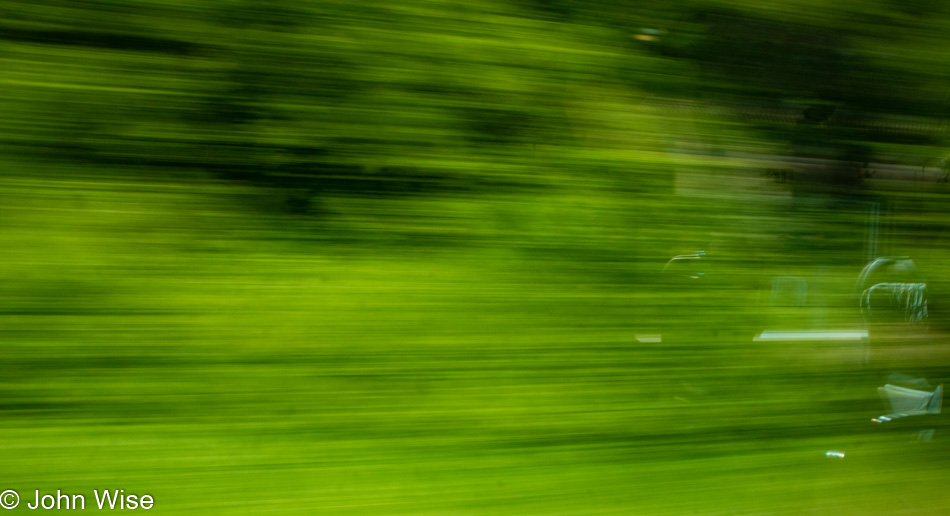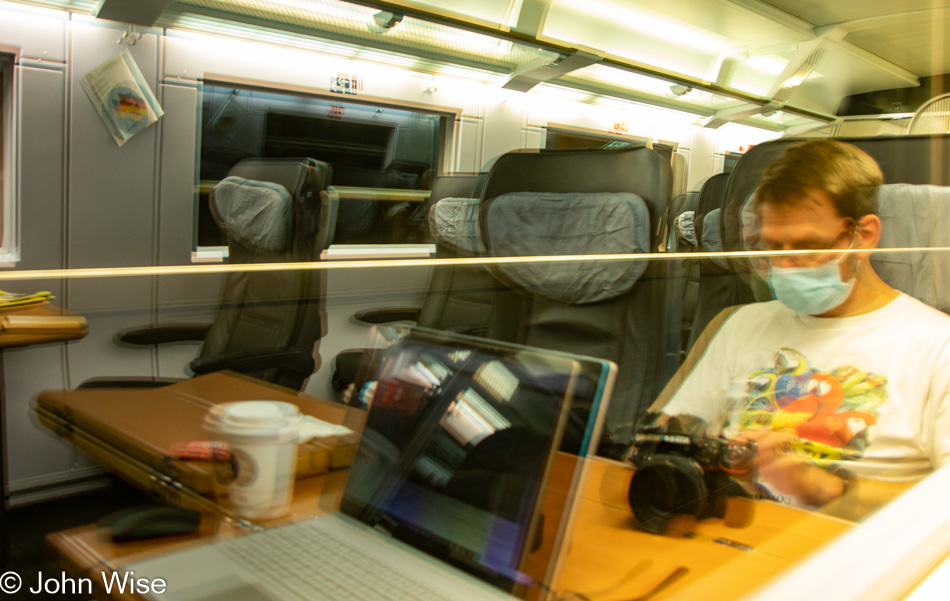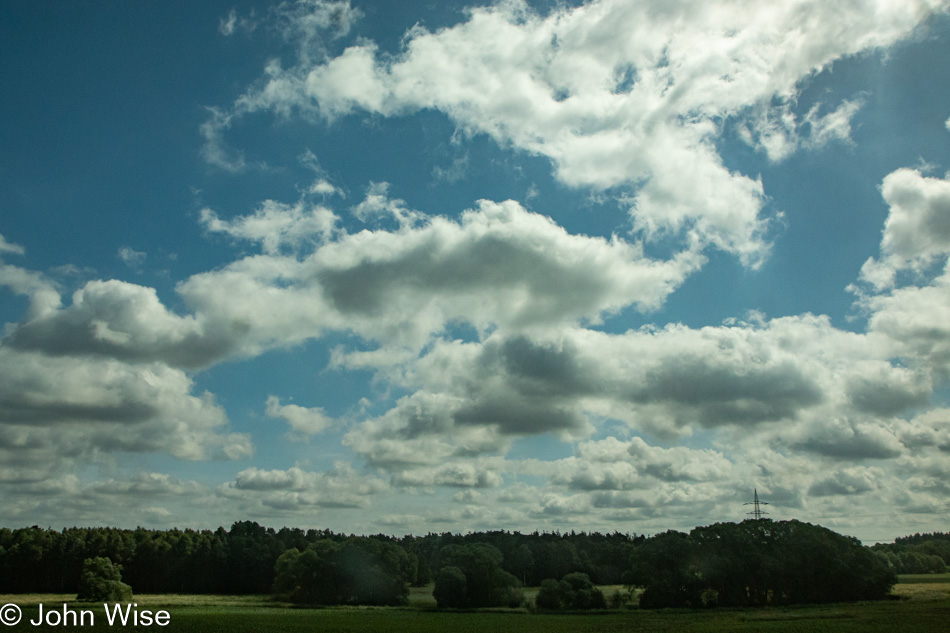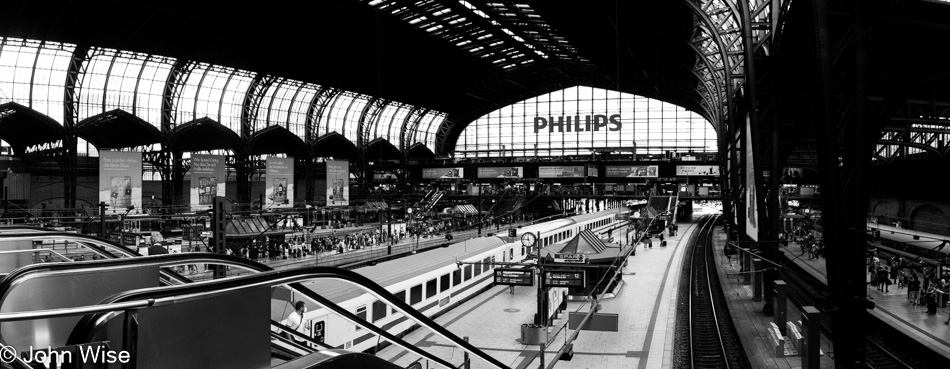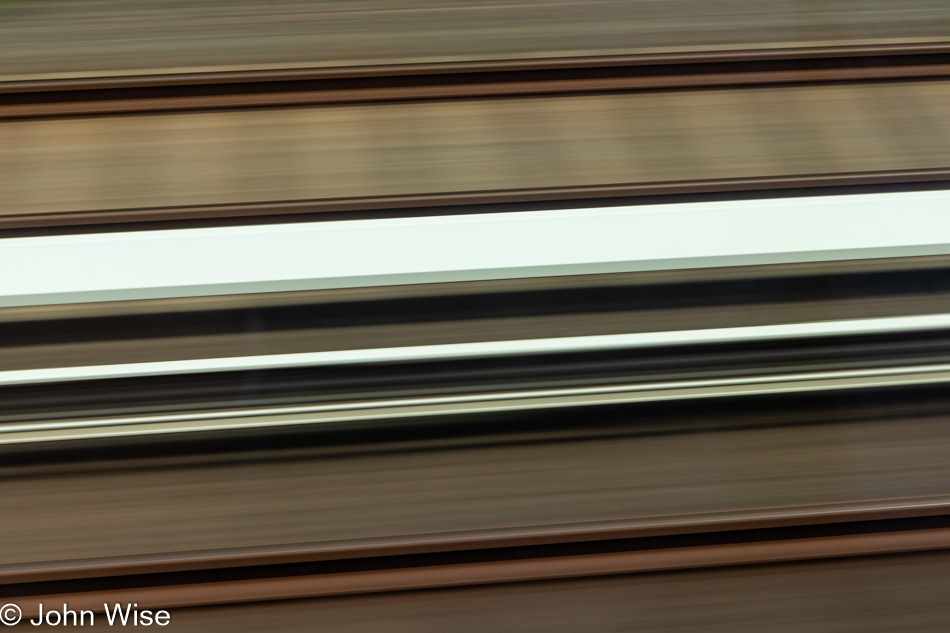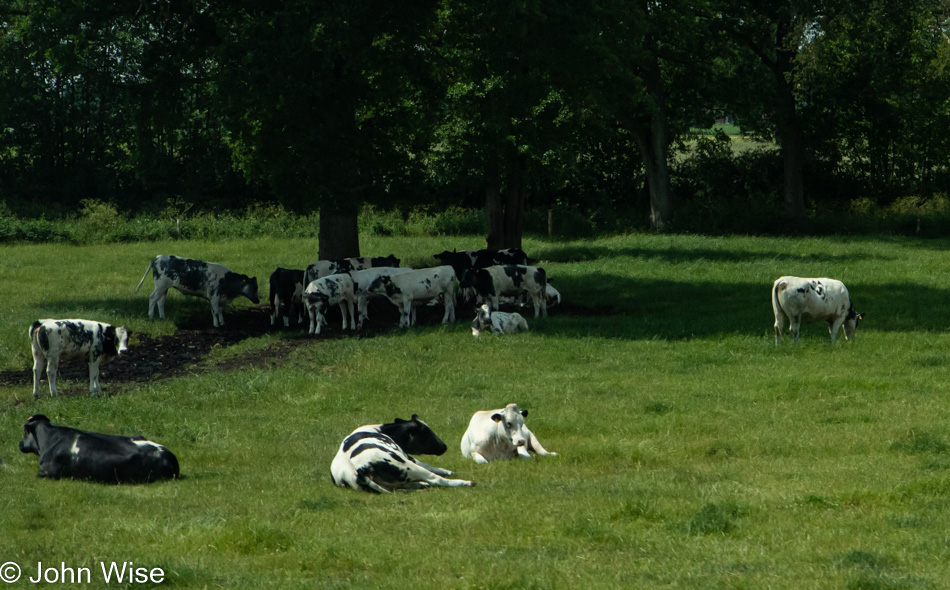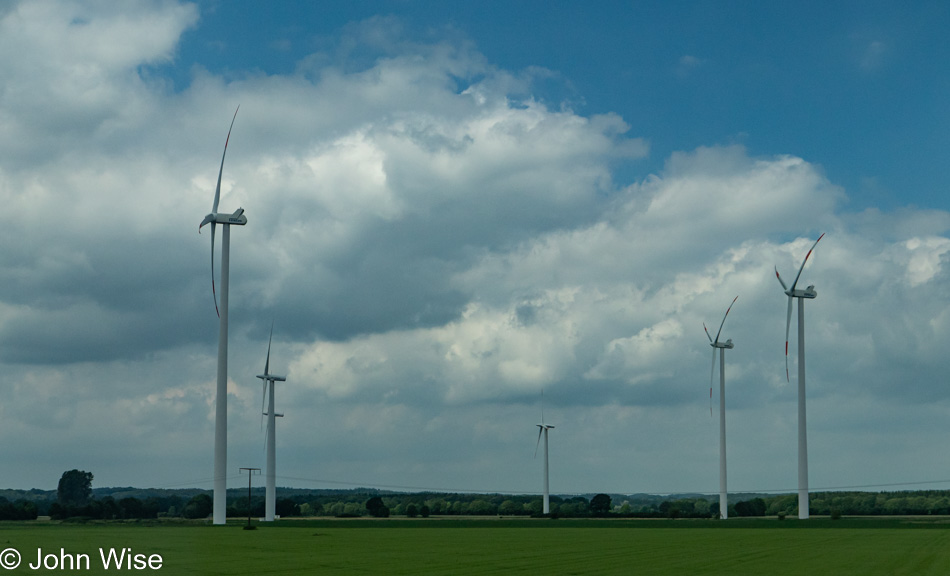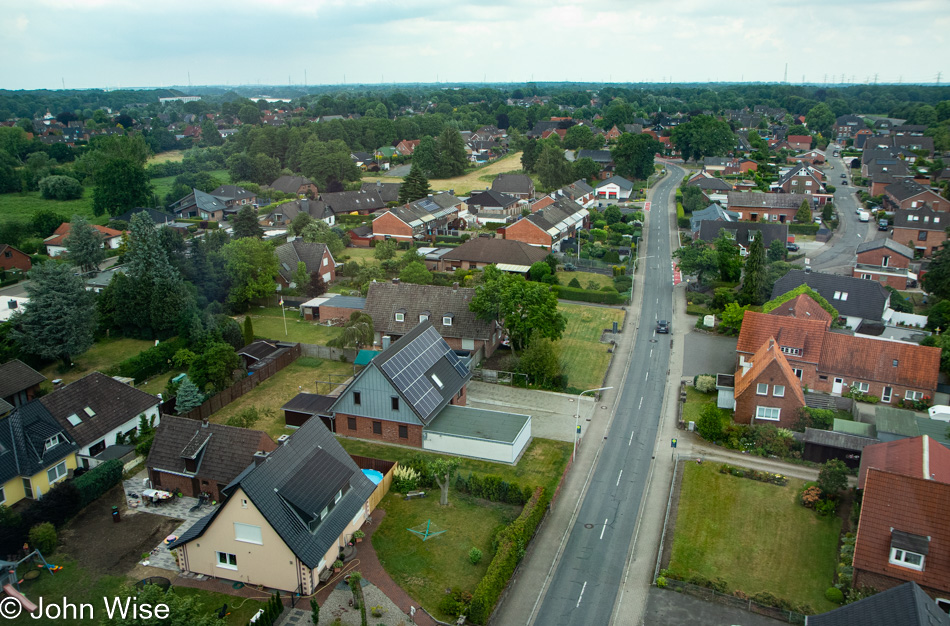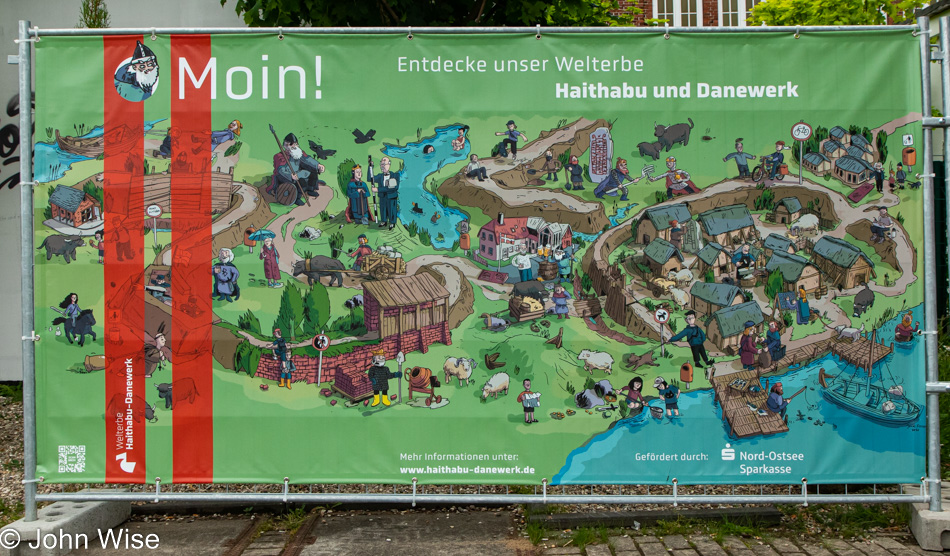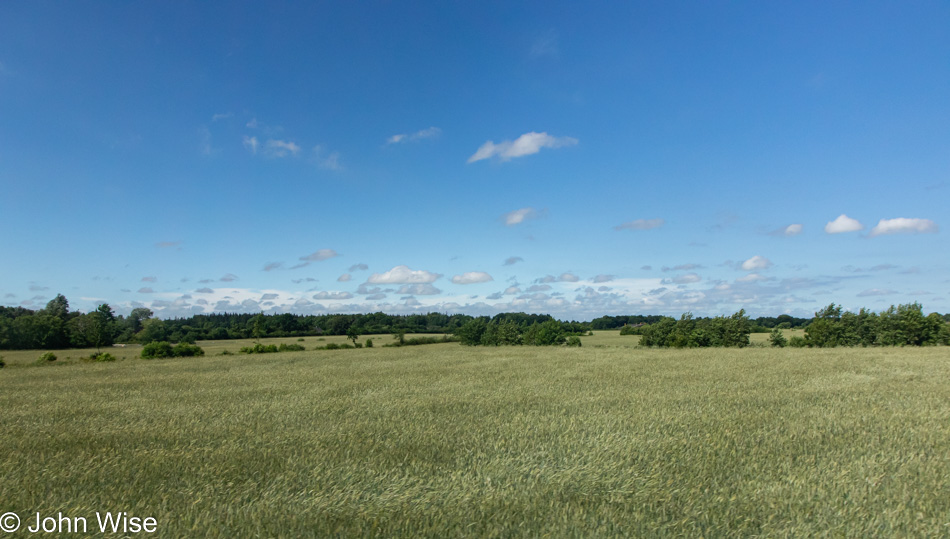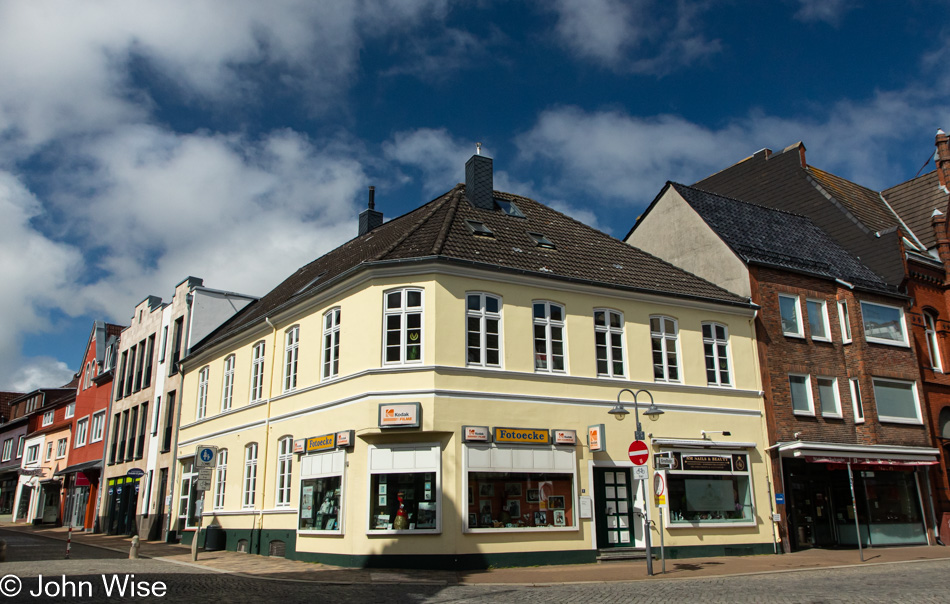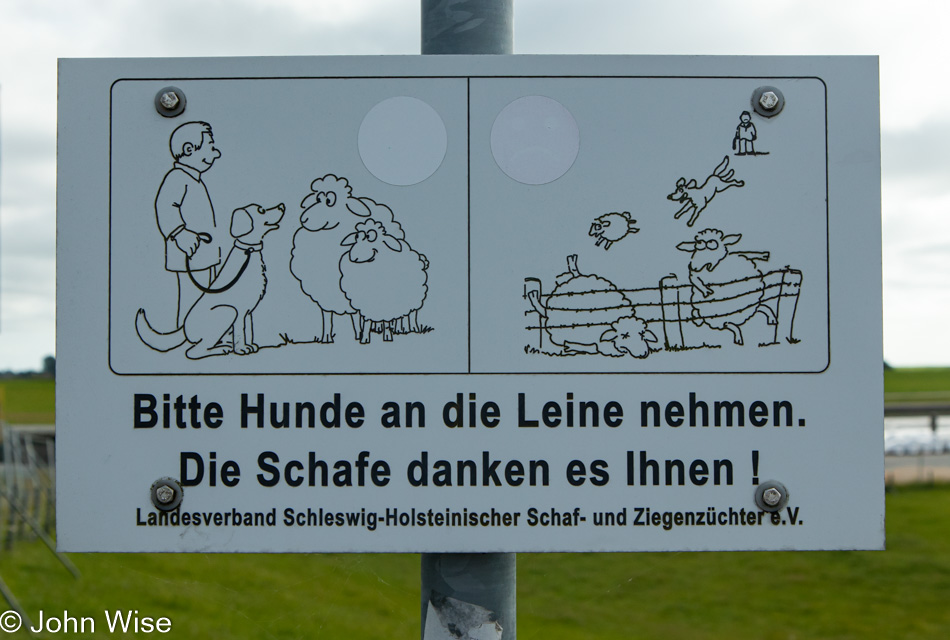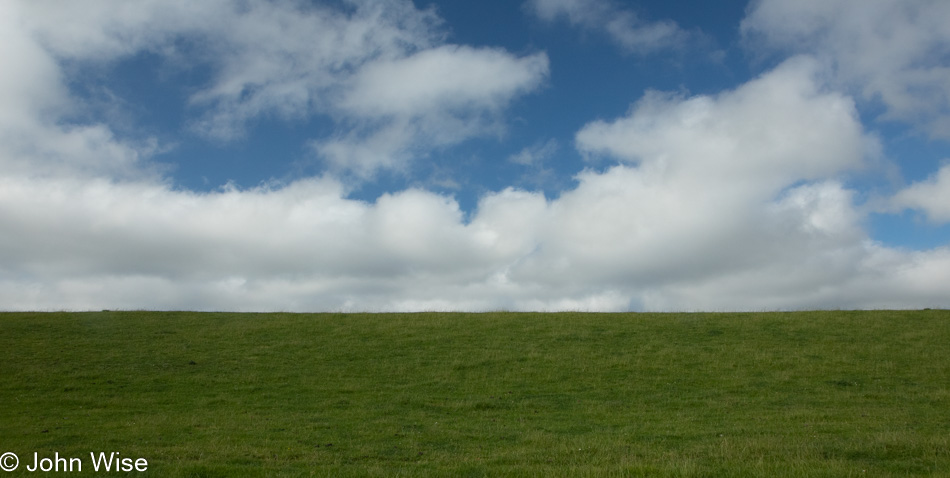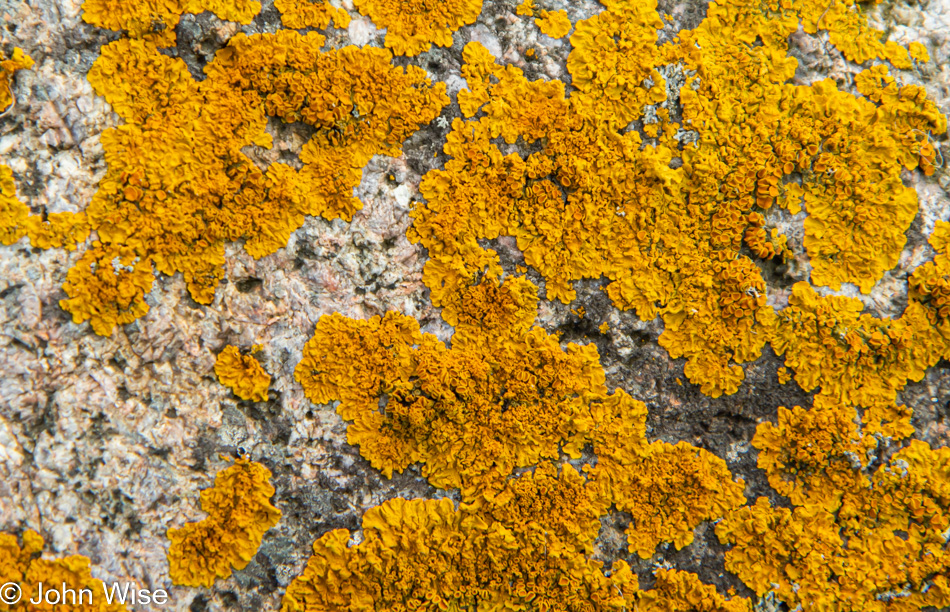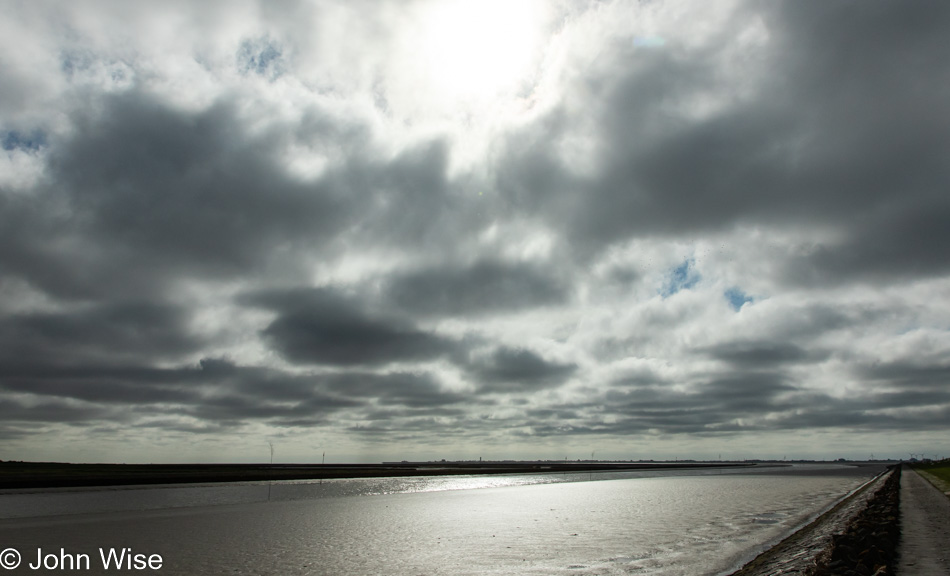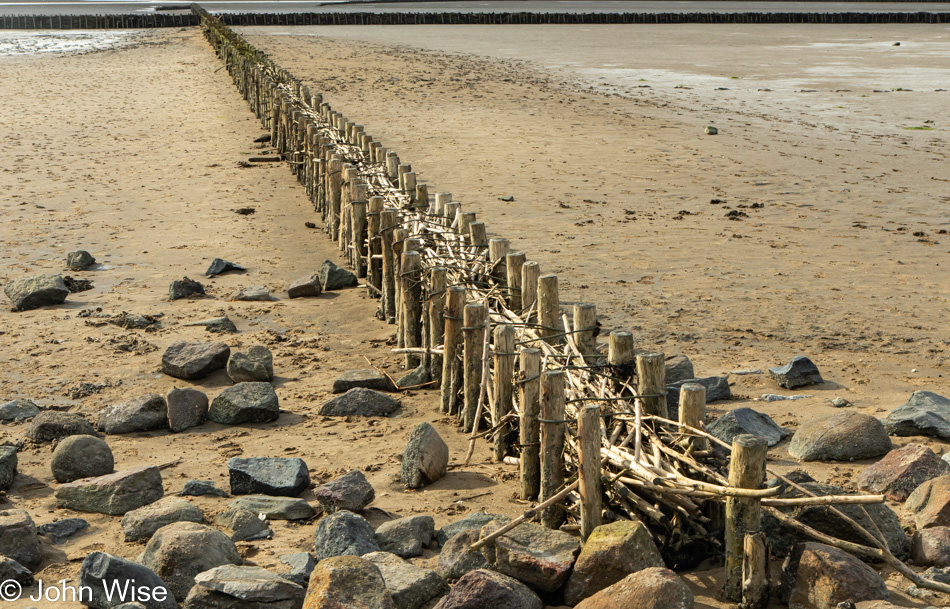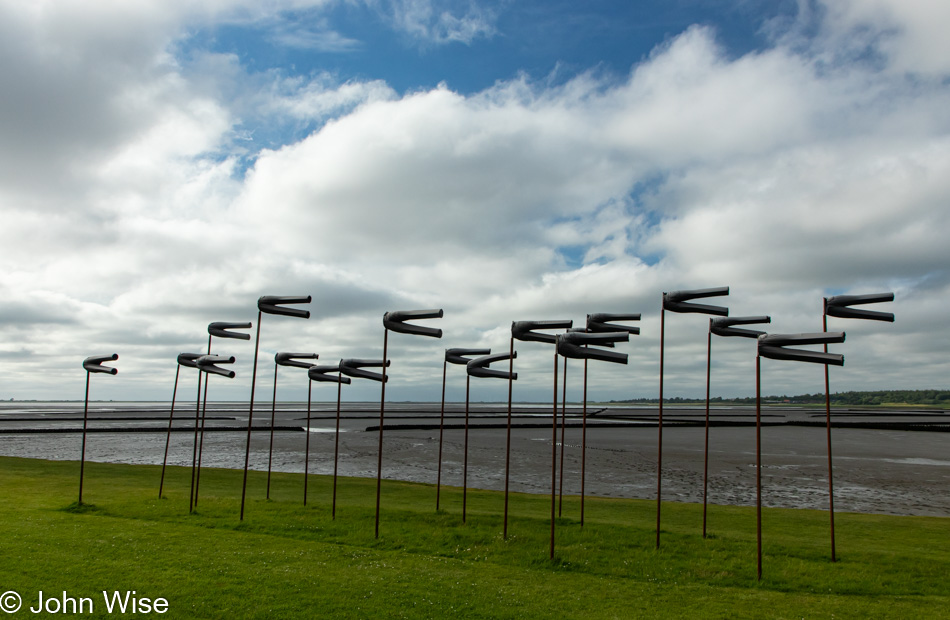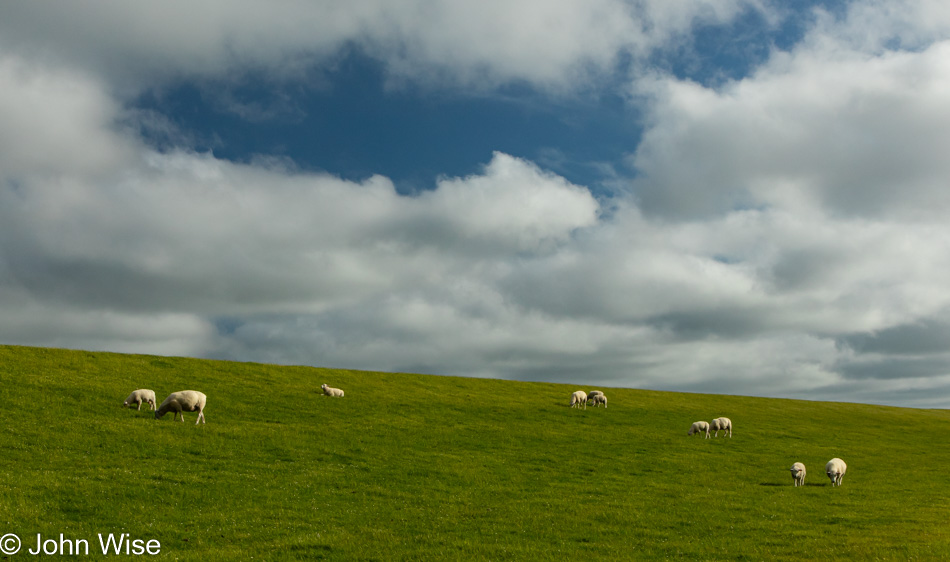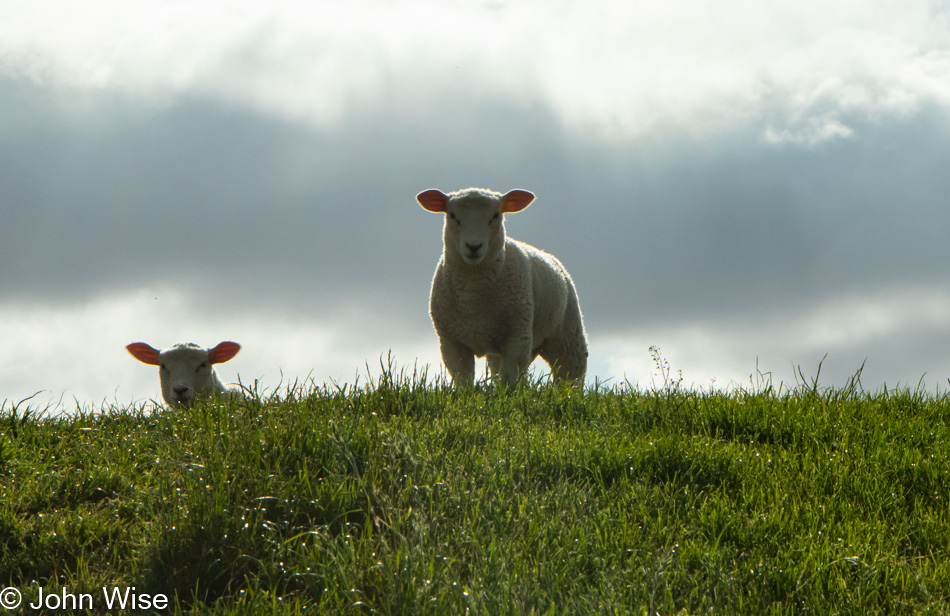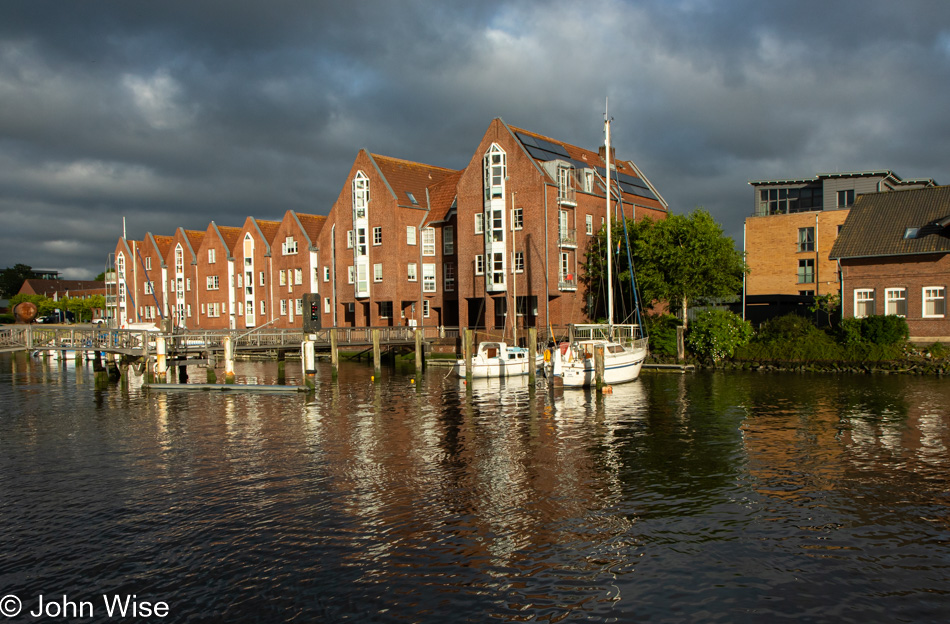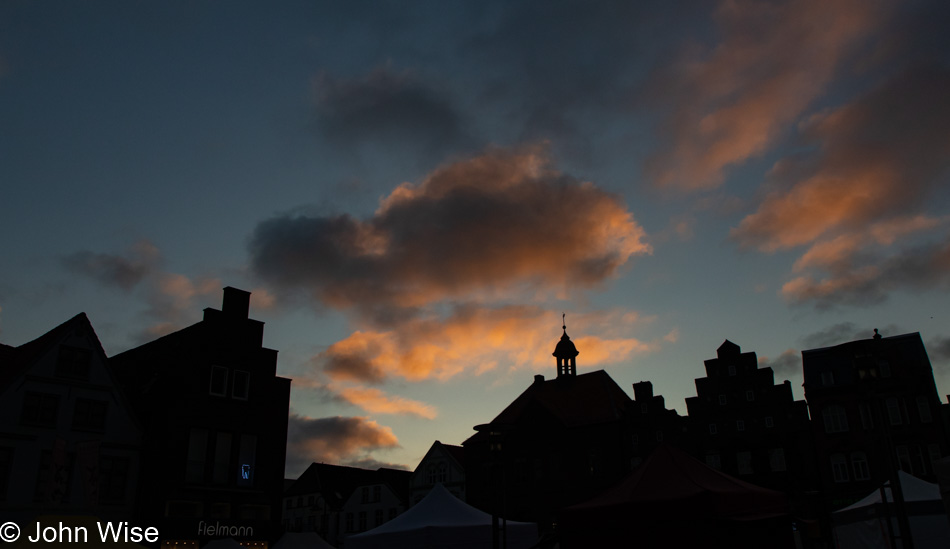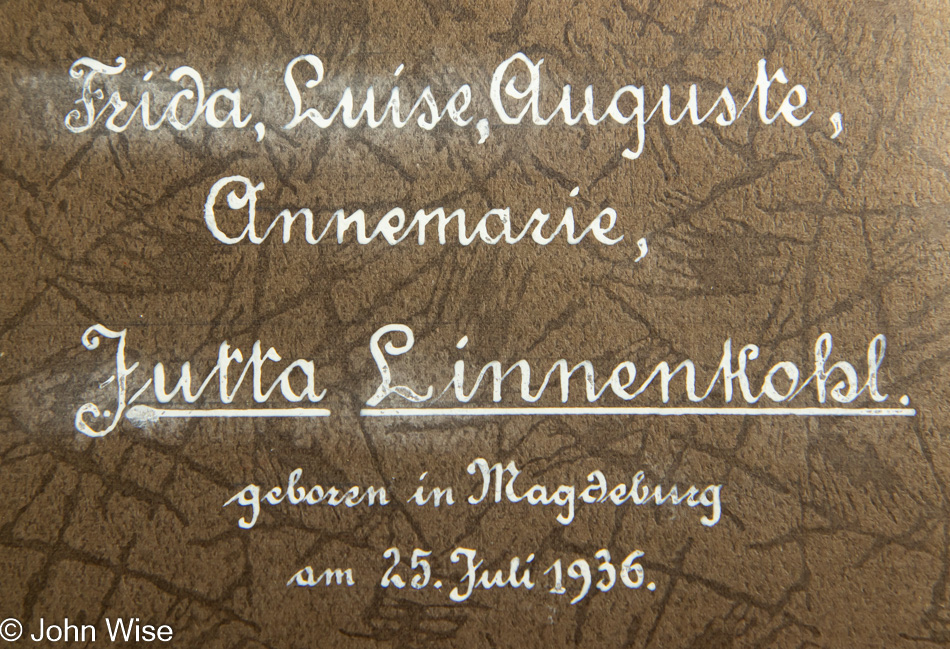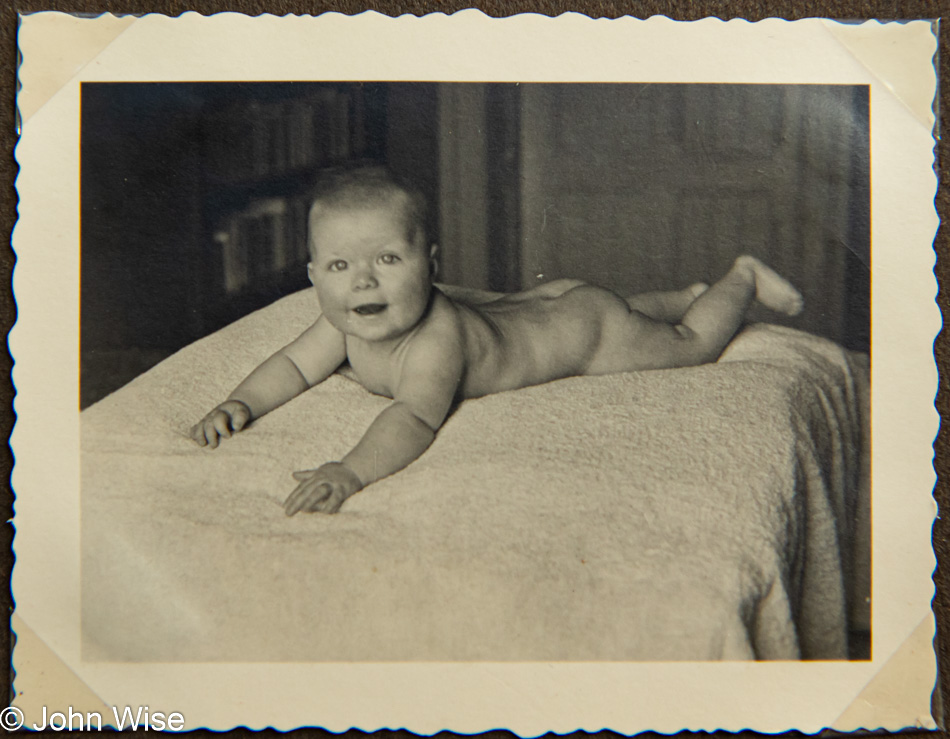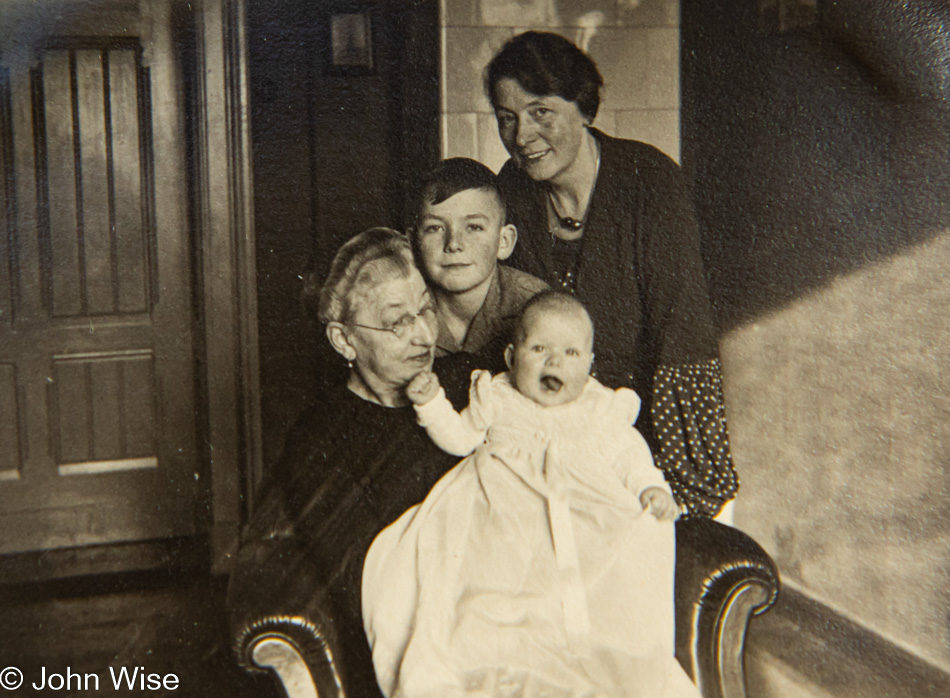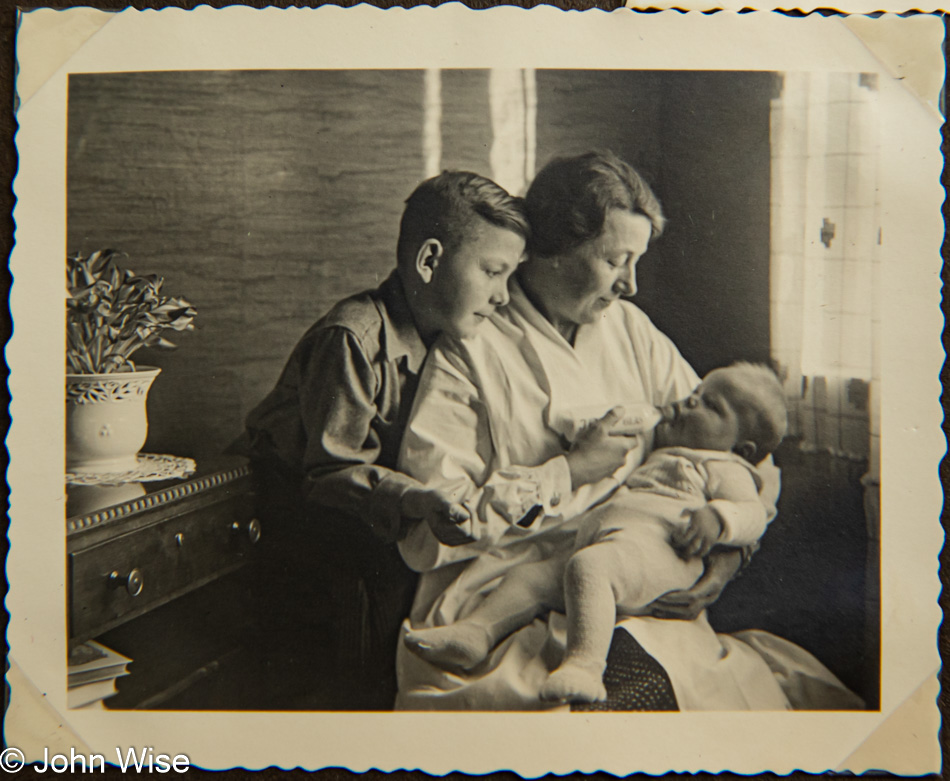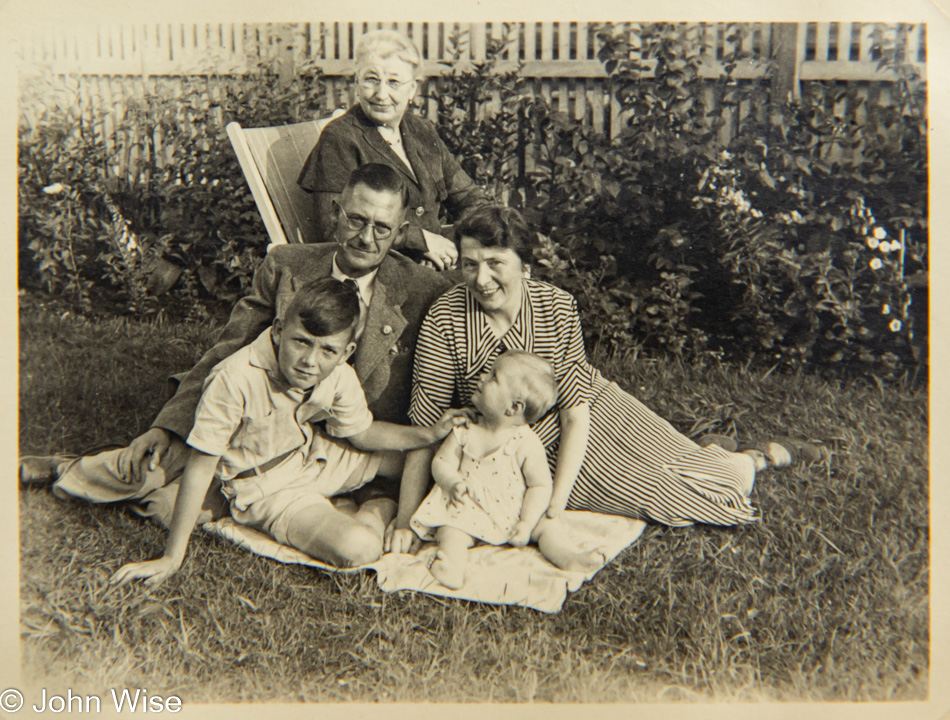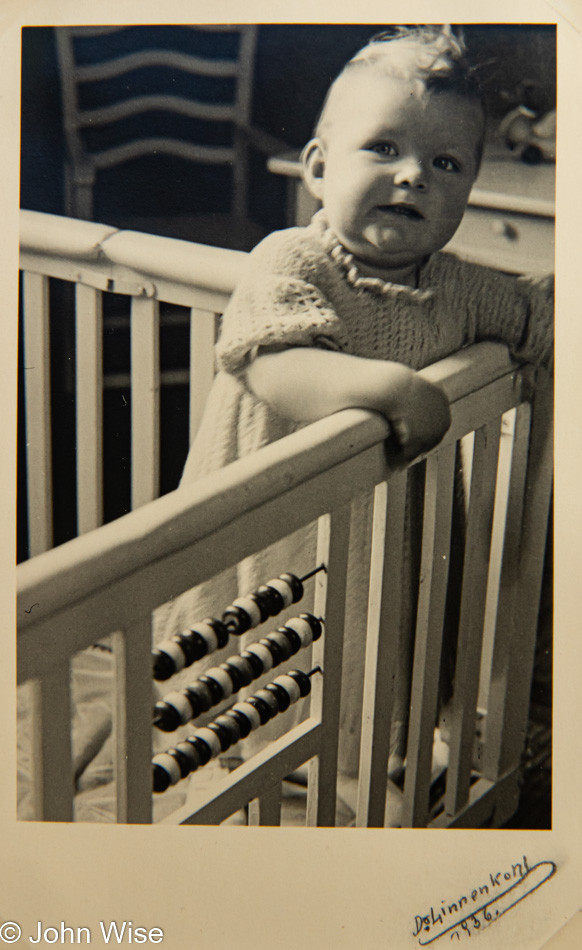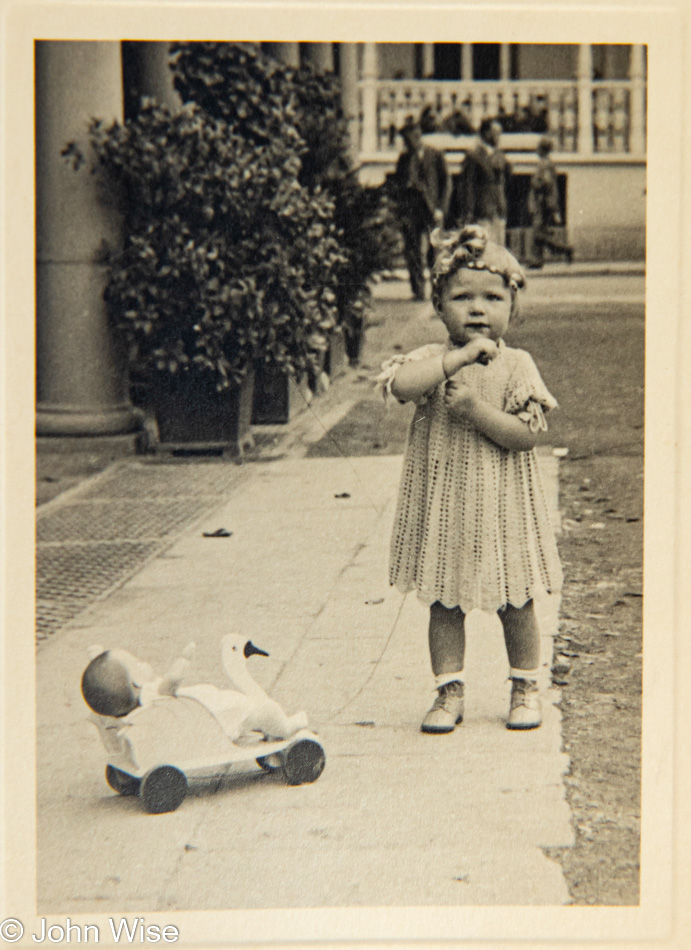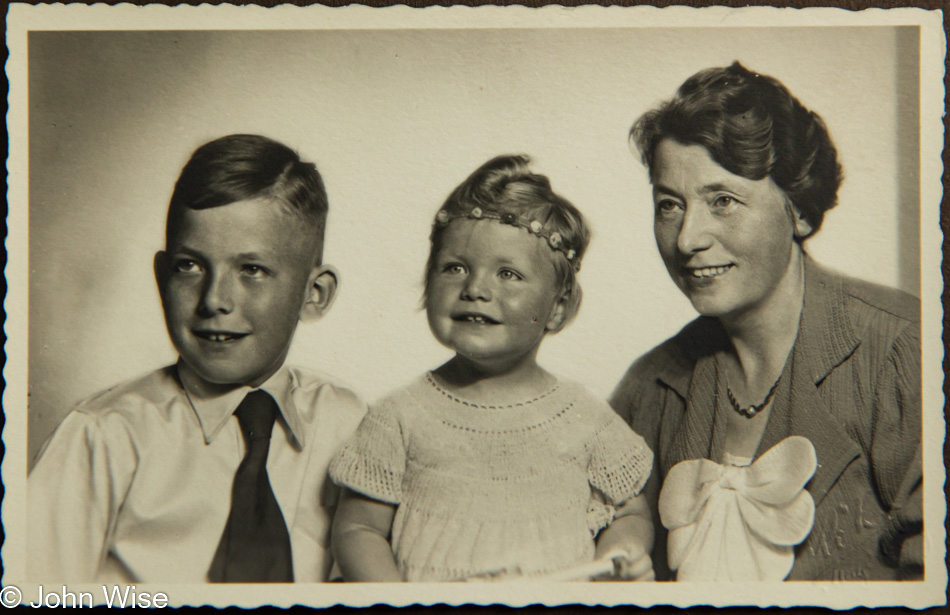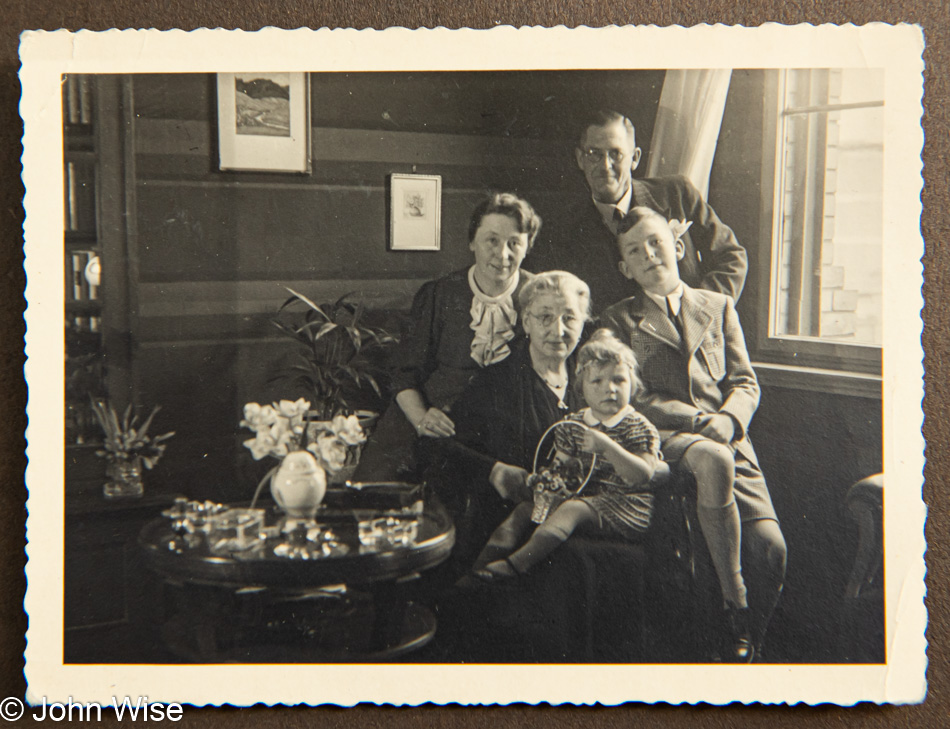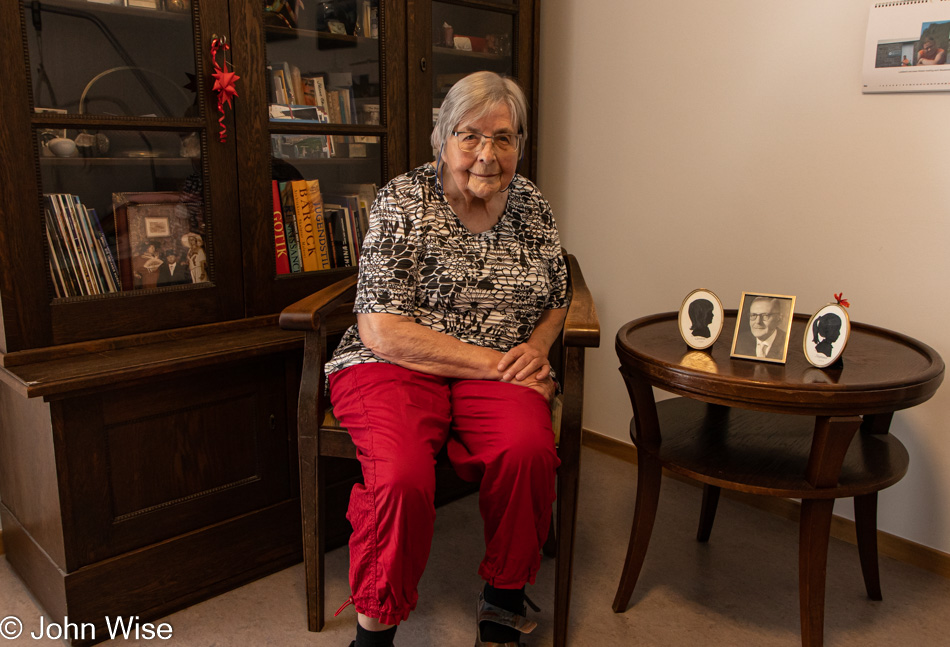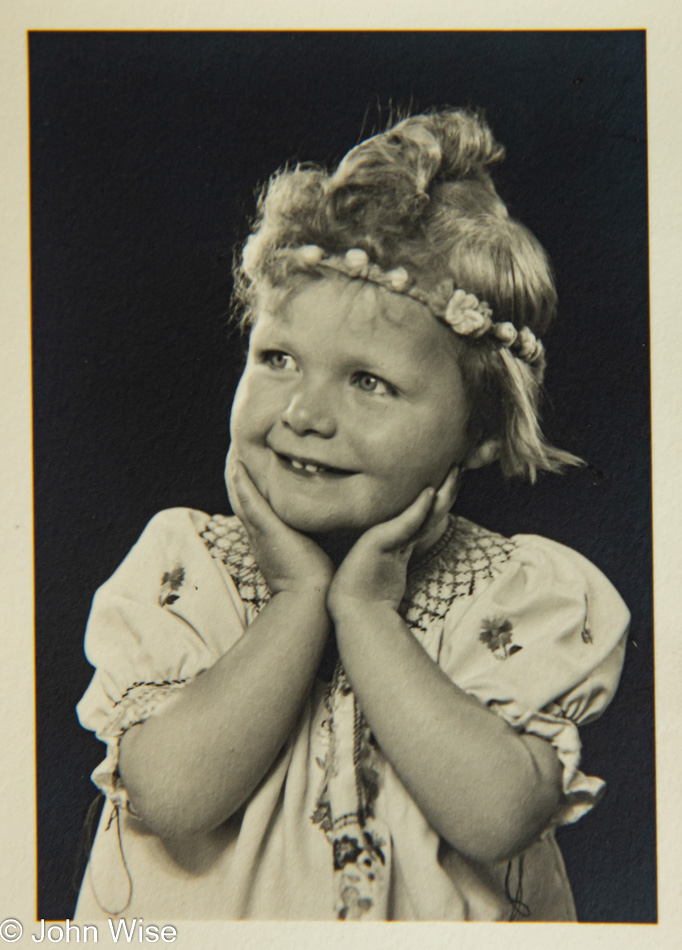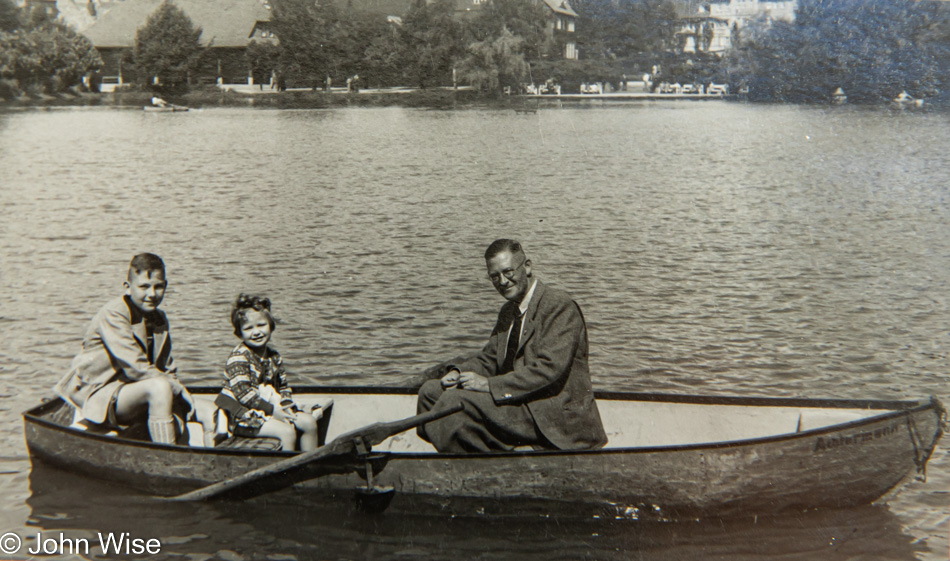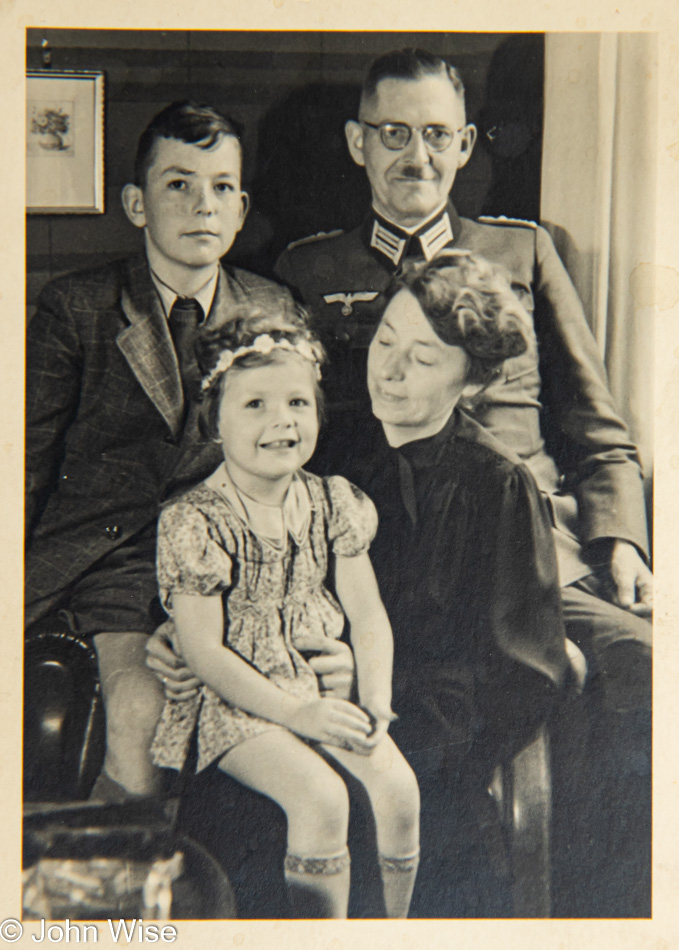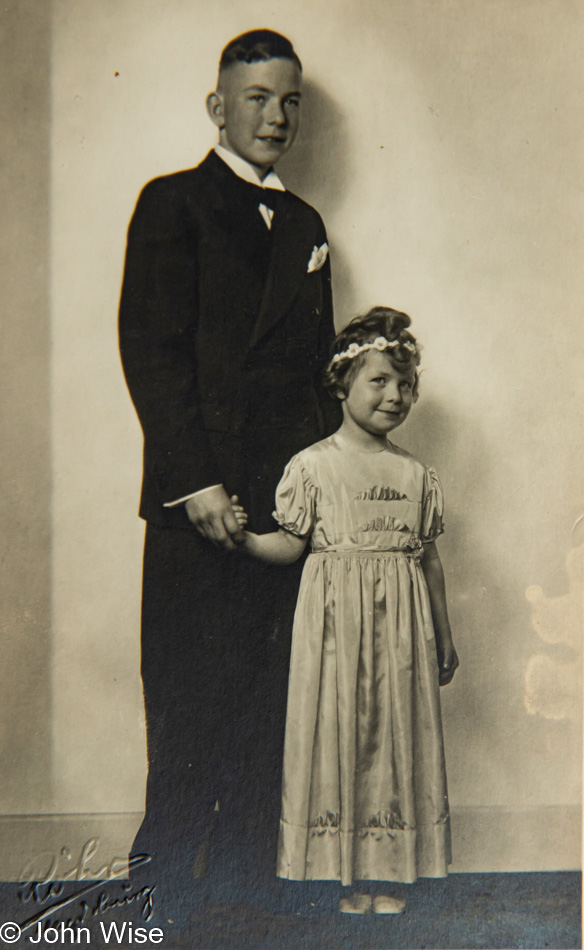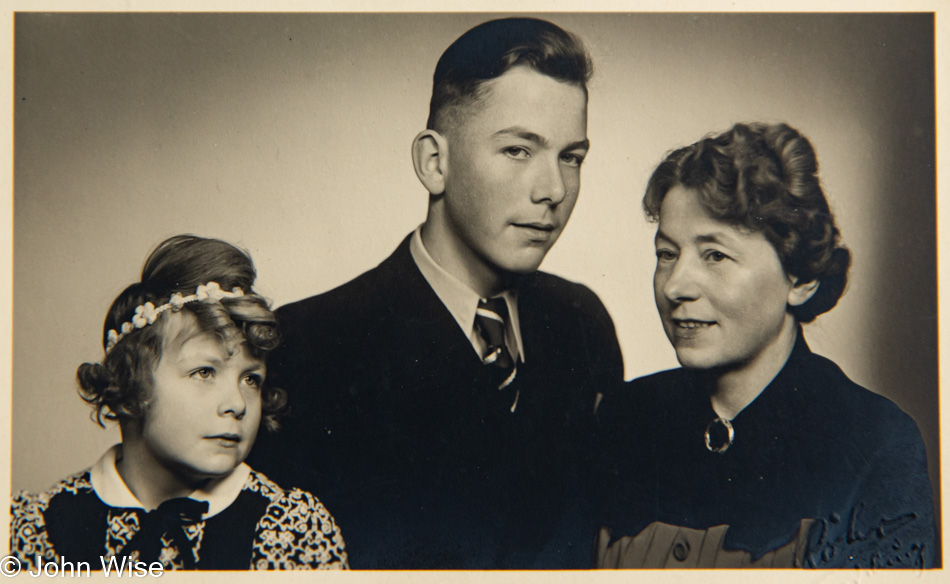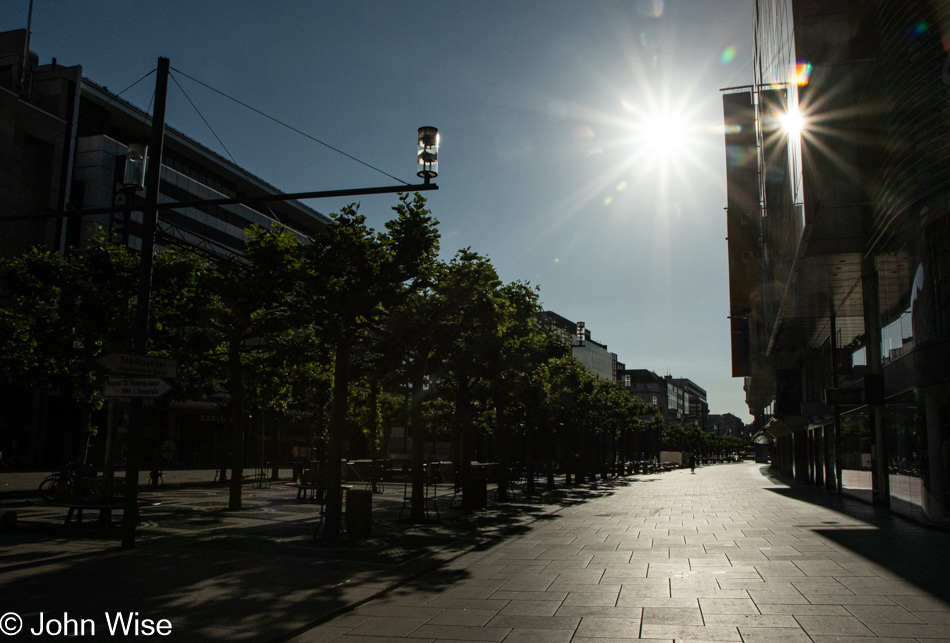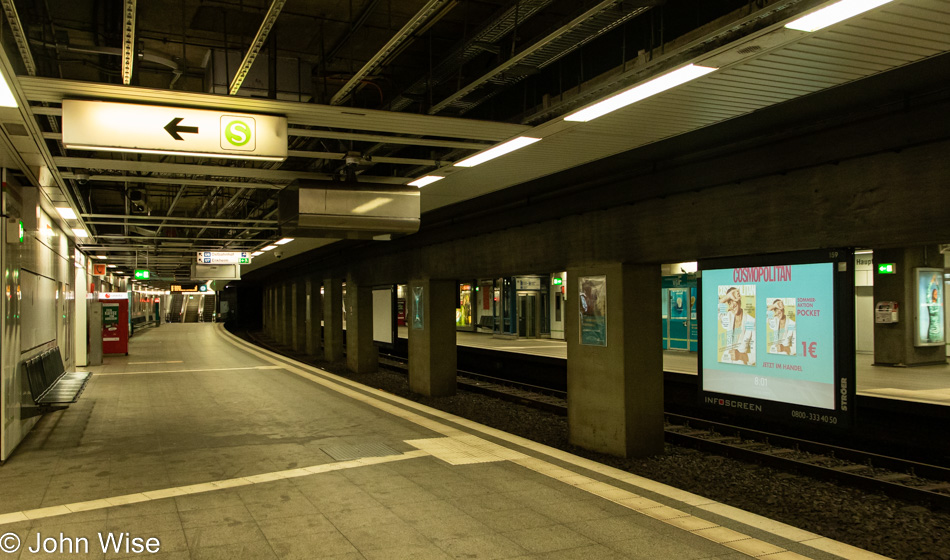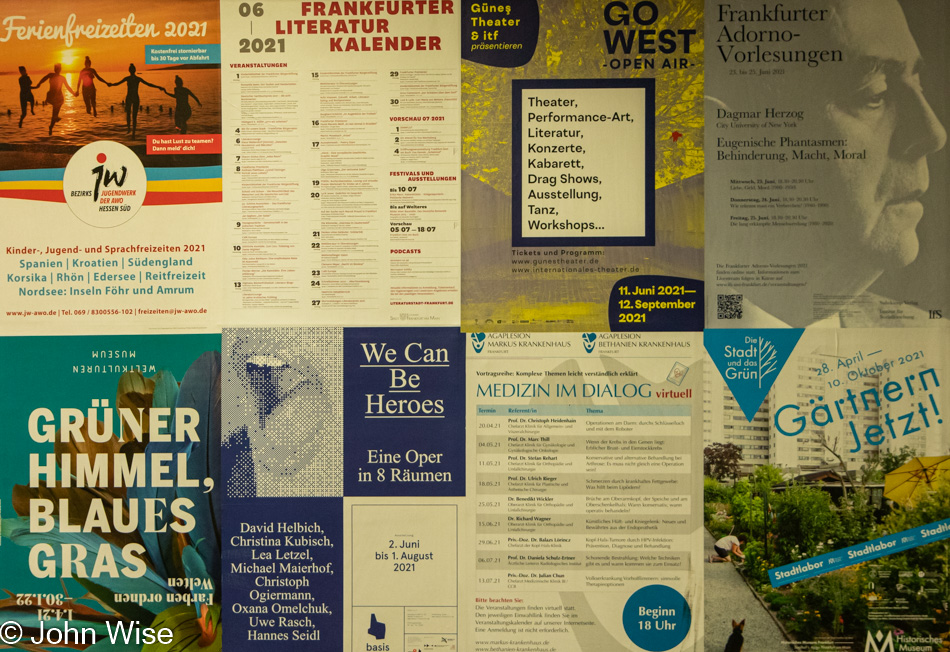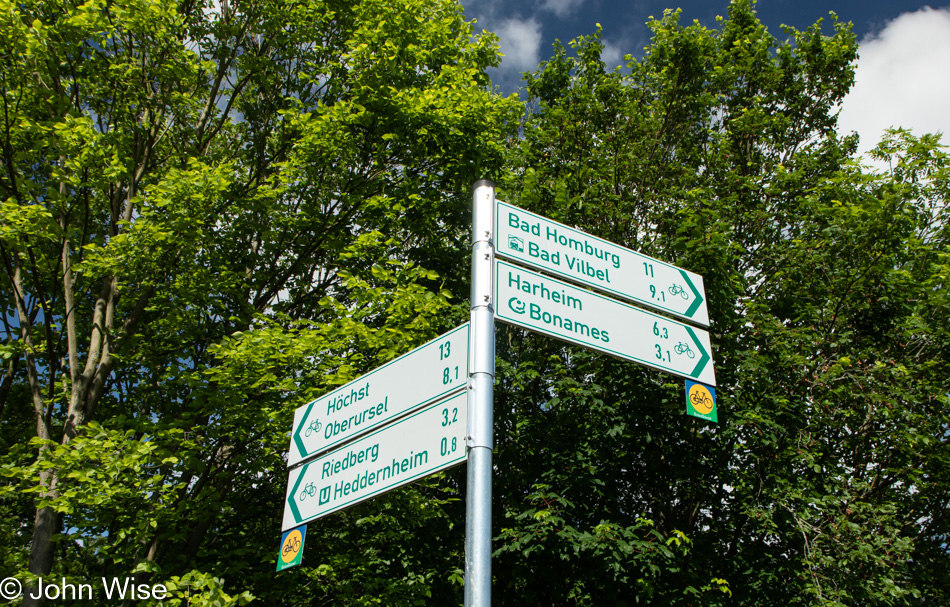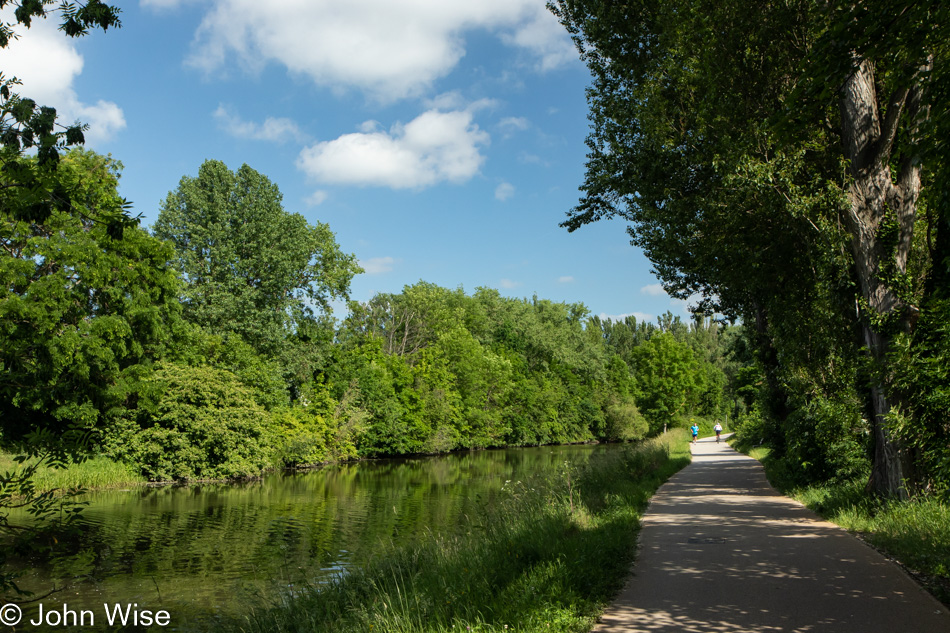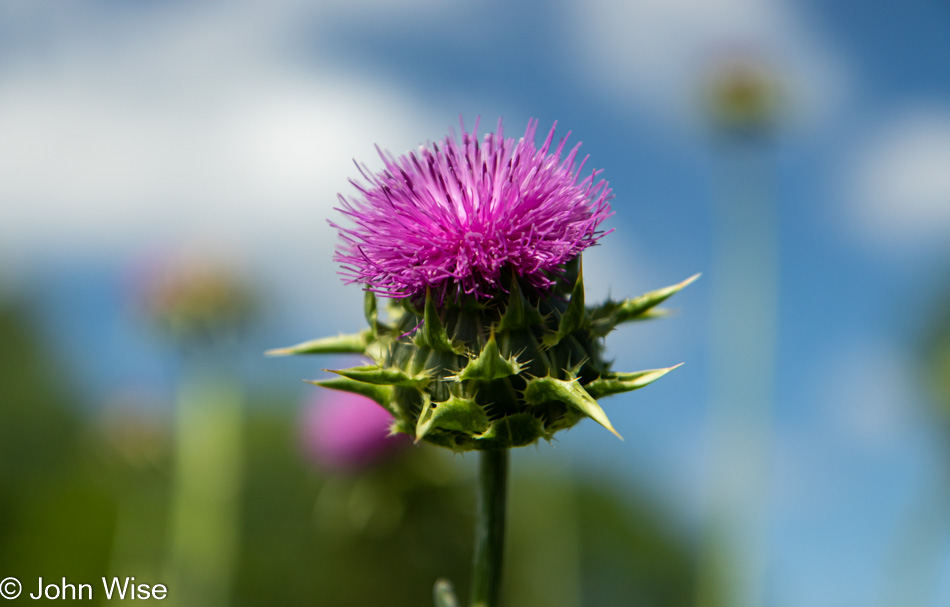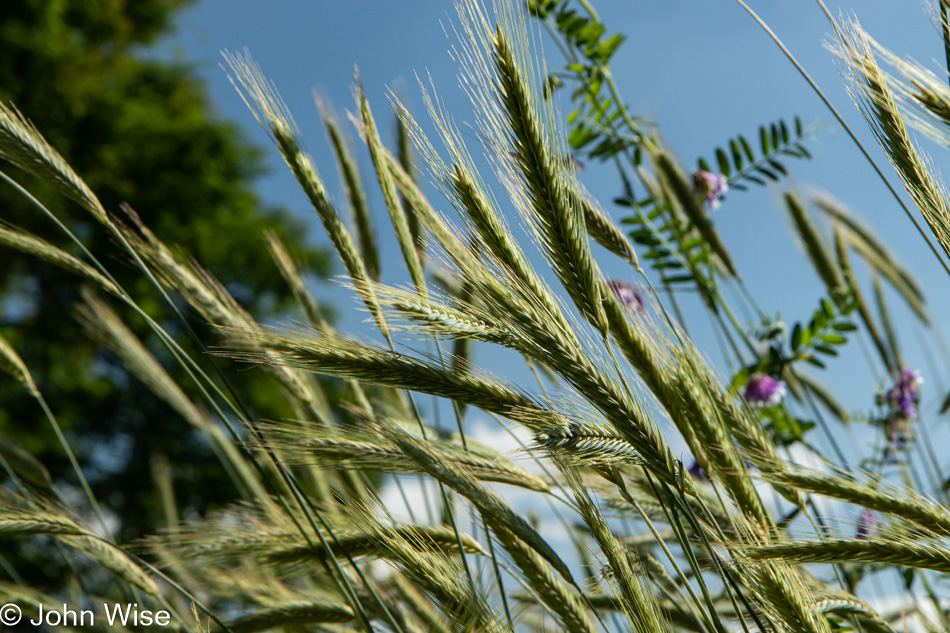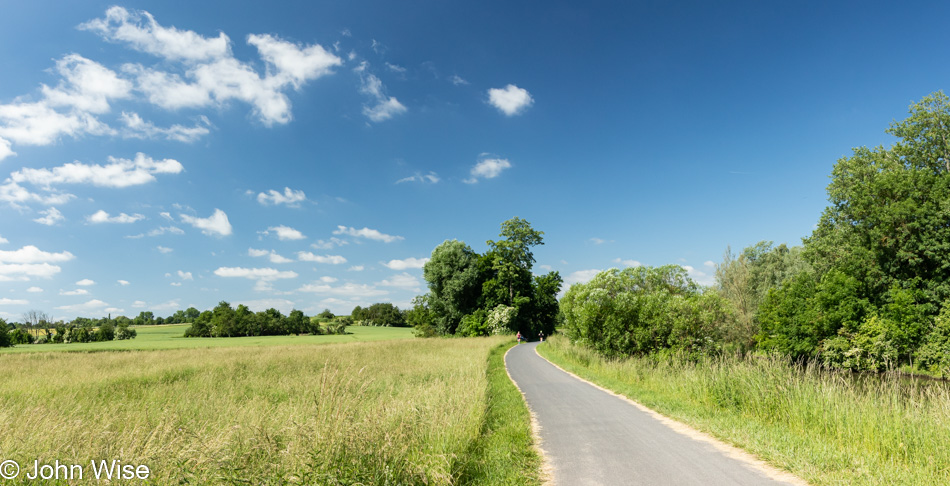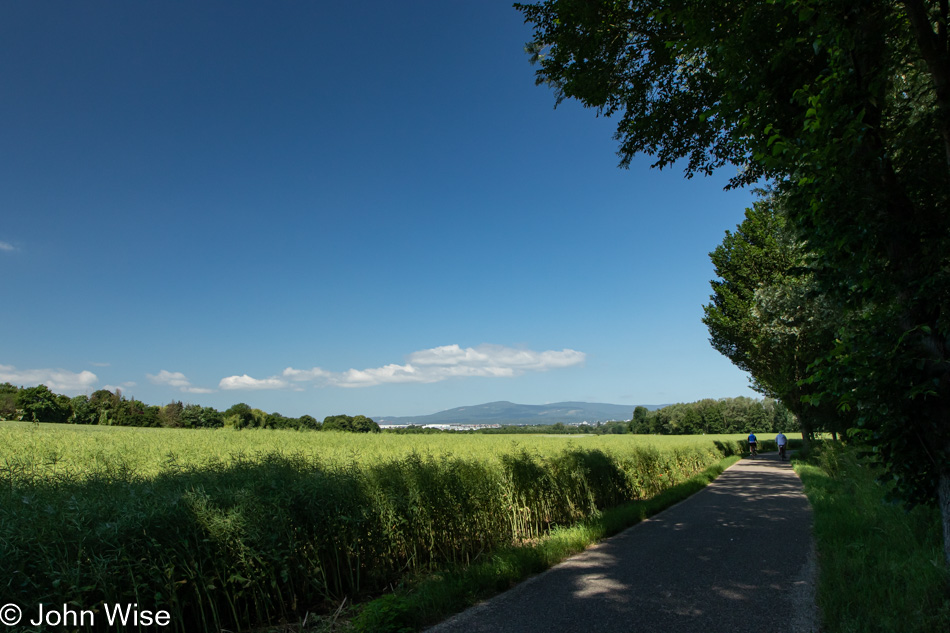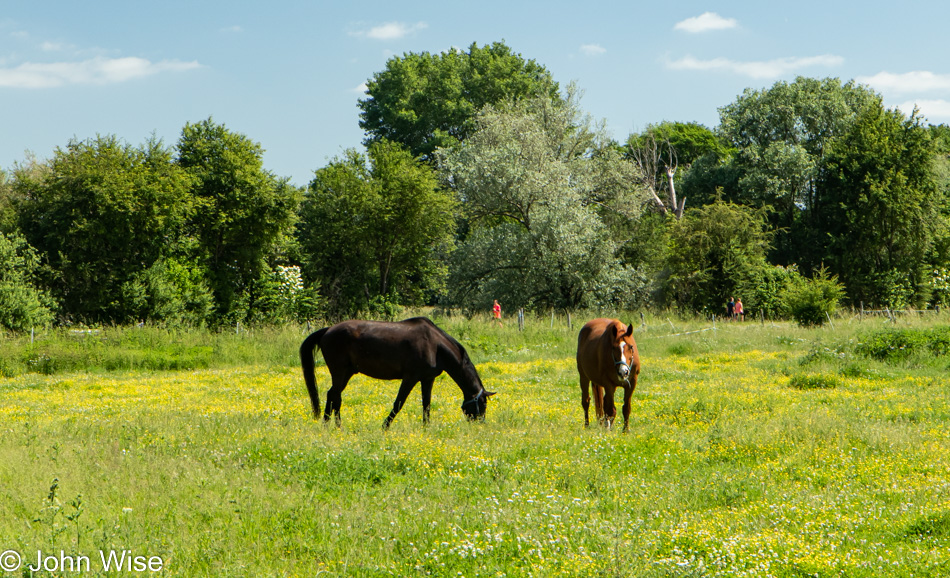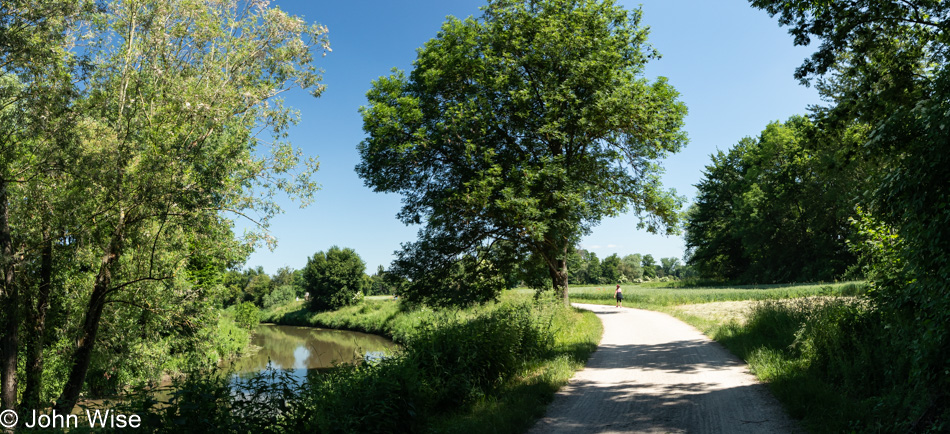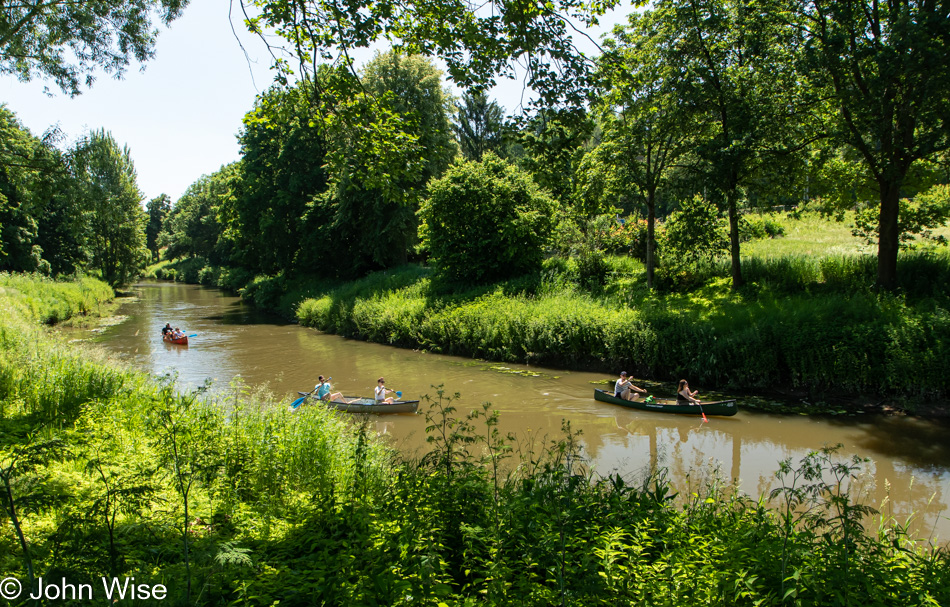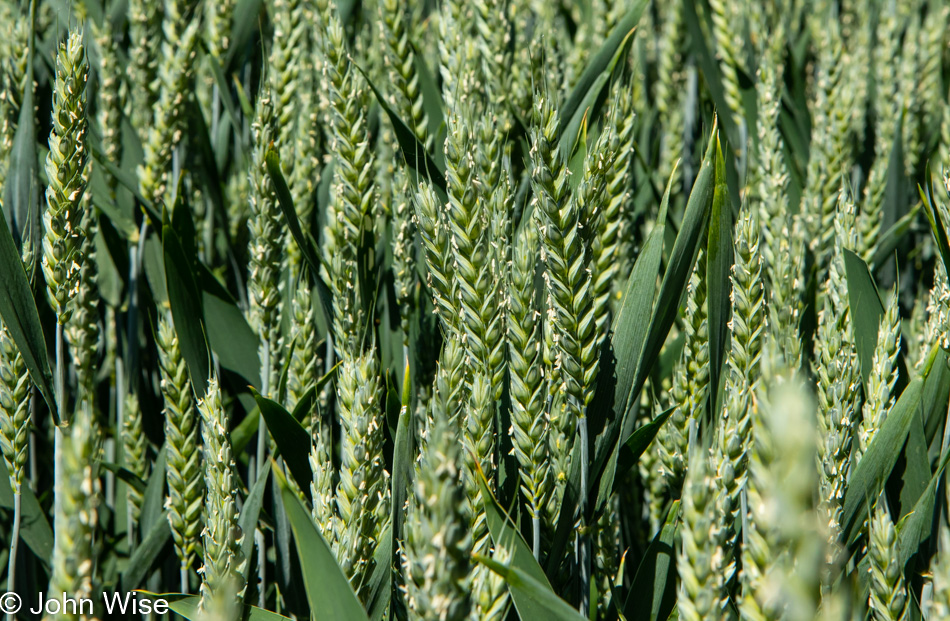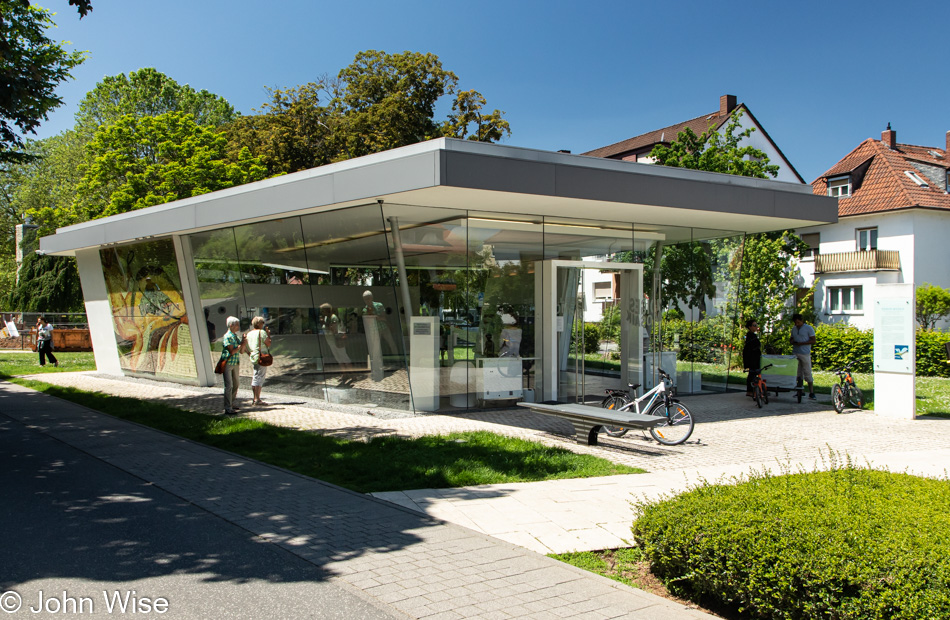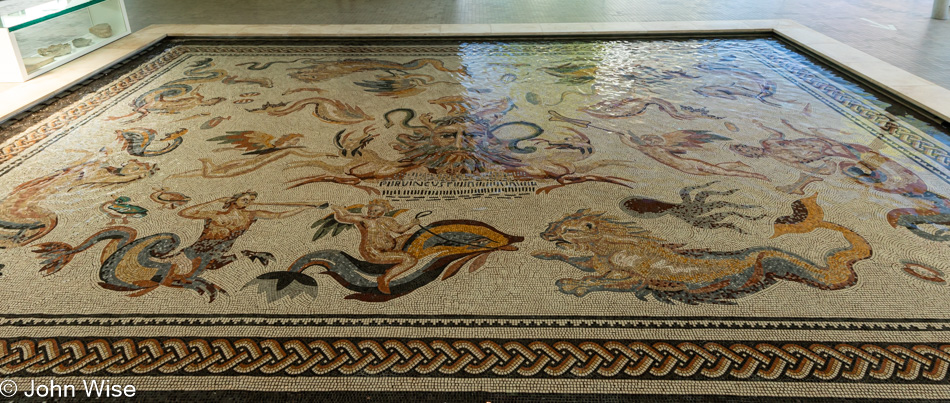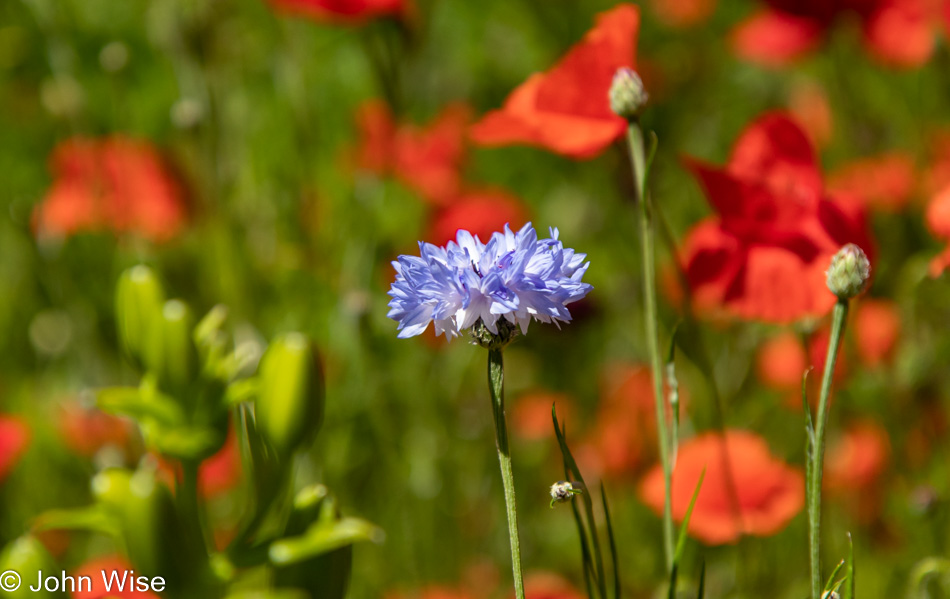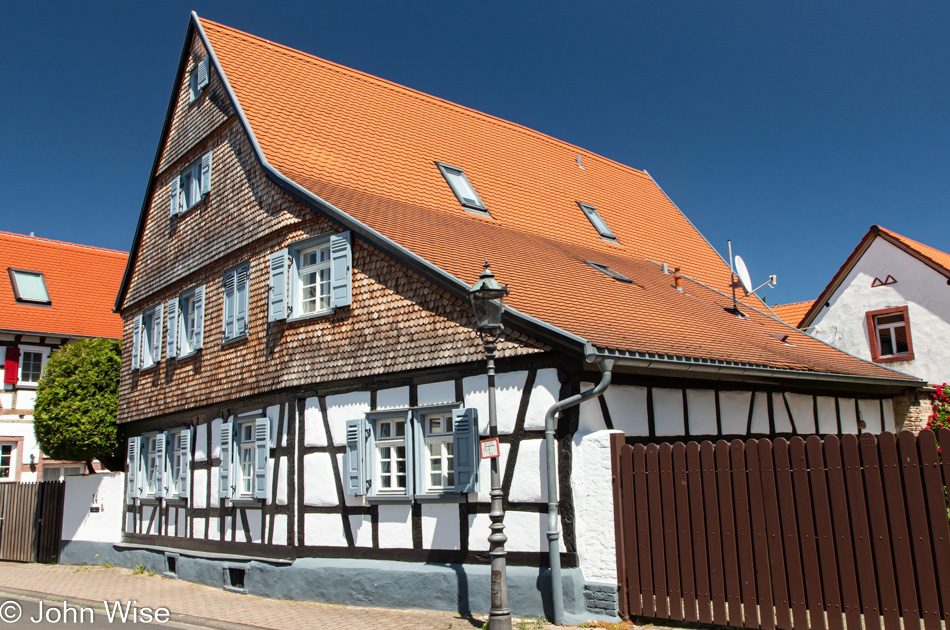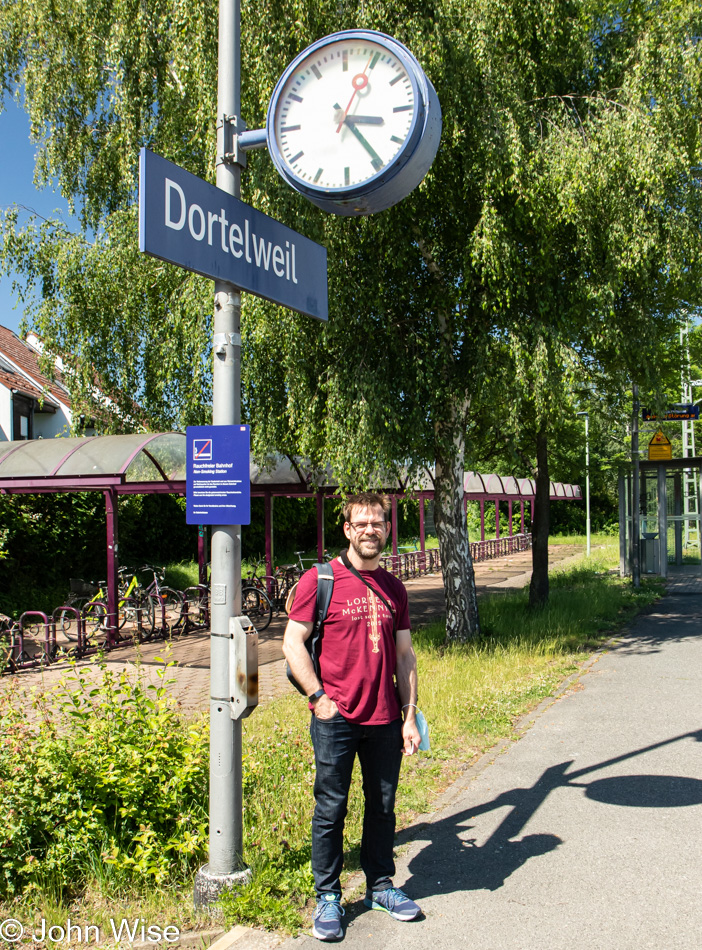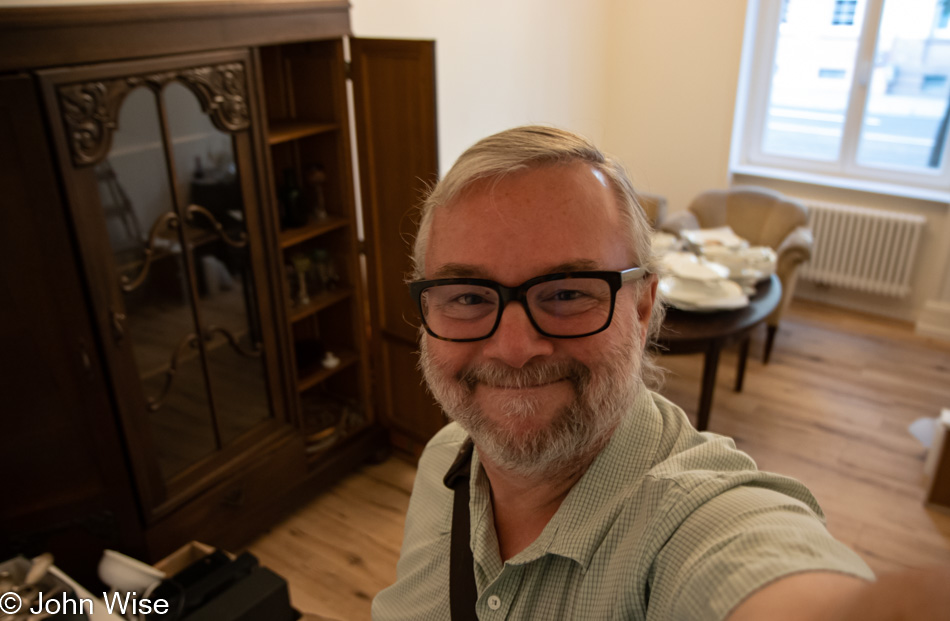
See this happy face? It’s a mask of naivety. About to leave for the day, I’ve got my laptop slung over my shoulder, my camera is obviously in my left hand, the ablutions are finished, and I’m excited to be on a rail trip that will take me on a new adventure to places I’ve never been. I’ll take lots of photos and, hopefully, an adequate amount of notes to minimize what I’ll be dealing with later this day and tomorrow morning. Well, here I am a day later (no, not in the photo; that really was me getting ready to leave on Friday morning), and I’m confronted with 63 photos and over 2,700 words pasted in between the images and there are still 43 photos that don’t have a word below them. What this suggests is that while I’ll likely pare some images, I probably will have about 4,300 to roughly 6,000 more words to add. Do you really have time for some seven to nine thousand words, even just scrolling past them?
I’m WARNING you now: skip this blog post unless you are interested in more self-indulgent blathering from an undisciplined, narcissistic cultural sycophant.
Late Edit: While I didn’t cut a single image from this post, it is at a much more palatable word count of just under 6,000 of them pesky things.
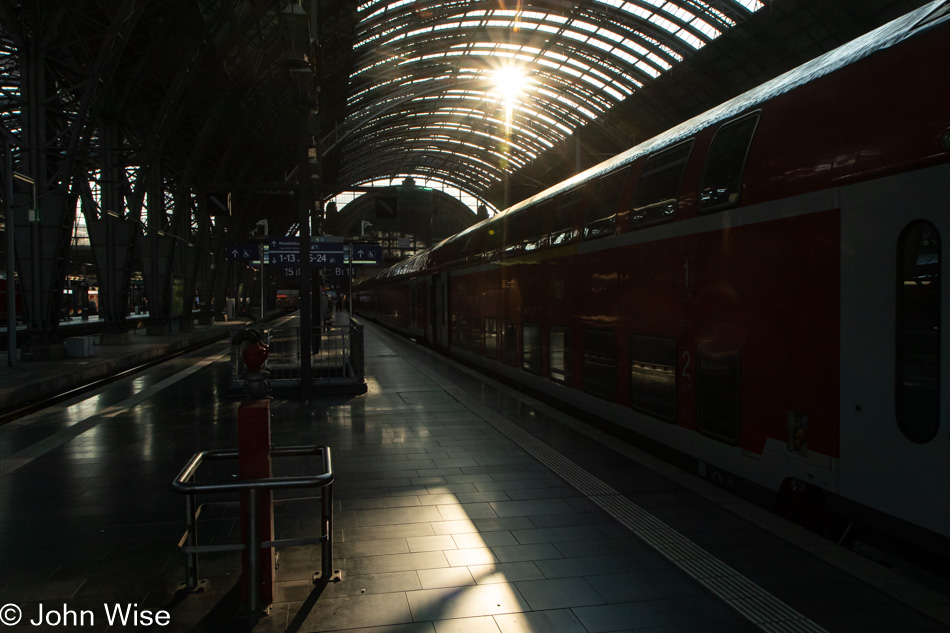
Speaking barely enough German to get by is one thing, but when it comes to reading German, I’m at a serious disadvantage as I can’t gesticulate wildly and talk louder to a machine. So, did I buy the right pass for my train journey that said it was good for five people? No idea, but when the ticket control officer comes around, I might learn the details of what this is, and hopefully not a hard lesson.
If I have the correct ticket, and even if I don’t, I’m going to Wetzlar, and from there, I’ll decide if I’m going west to Limburg or east to Fulda. What I am certain of is that in Giessen, I need to change trains to the RE99 in the direction of the Siegen Hauptbahnhof. I was about to look up what sights can be seen in Siegen, but this train doesn’t have wifi, yet. So I checked on my phone and thought Siegen might hold promise, but then I thought about what state it might be in; my “Hessen” ticket certainly doesn’t cover North Rhine-Westphalia, so check Siegen off the list.
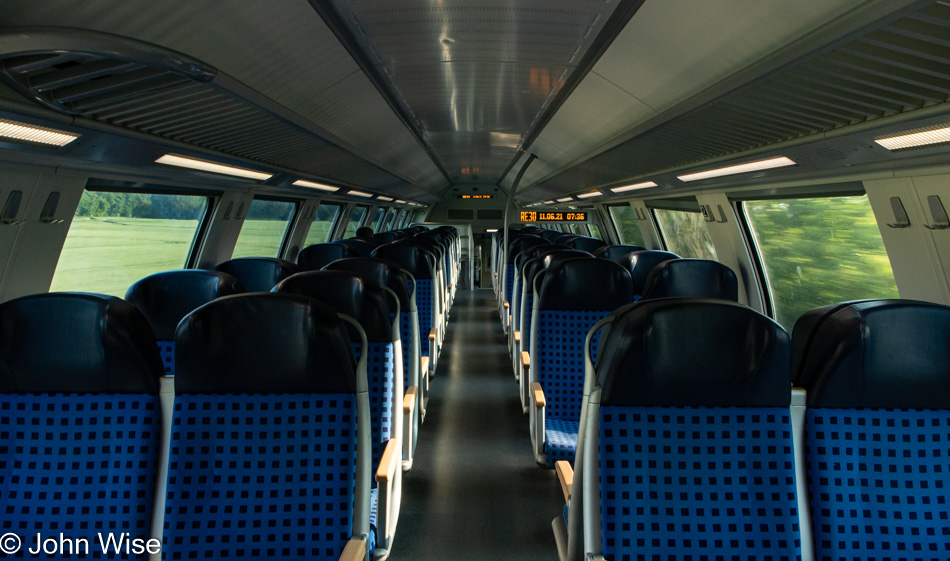
Well, my ticket is correct and incorrect as it isn’t valid until 9:00 a.m., but after that, I’m good. I was advised to hang out in Giessen until 9:00 and then jump on my train to Wetzlar as the next control officer might not be so friendly and could fine me 60 Euros for the mistake. I have to wonder why the RMV app would offer me an invalid option when I was trying to buy a ticket for a 7:19 a.m. departure and why doesn’t the app have an English option anyway. Looking at the town of Giessen via Google, I might just go ahead and risk the fine. We just passed through Friedberg, where Elvis Presley was stationed during the Cold War from 1958 to 1960.
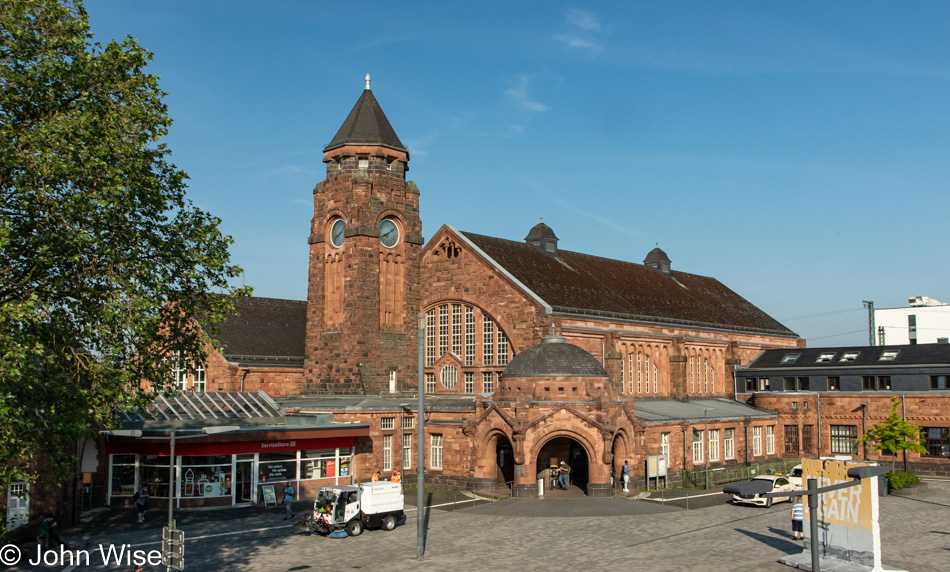
Well, the Giessen main train station looks nice enough, as well as an early 20th-century factory might look.
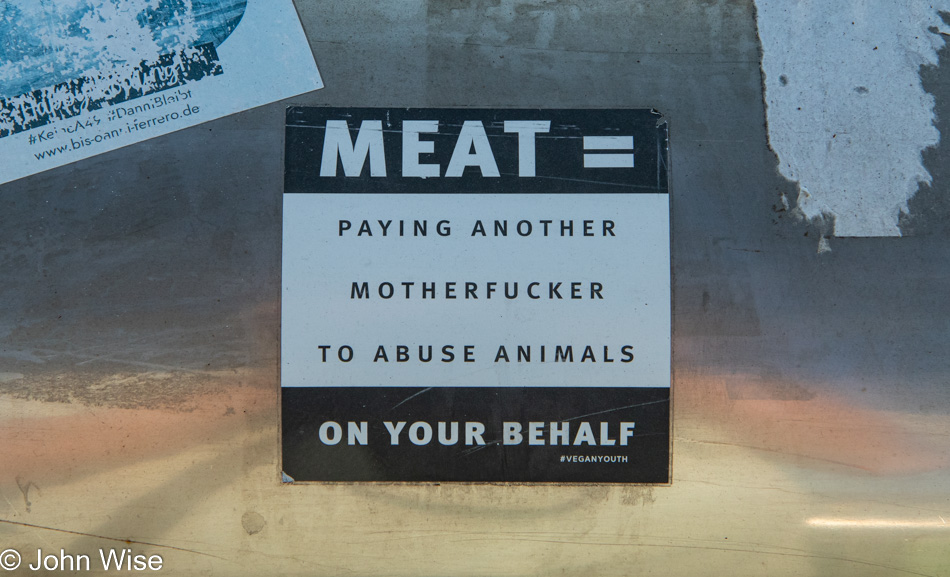
Crossing the bridge from the train station to the city was this sticker reminding me that there’s a lot of truth behind my selective ignorance of how animals live such short lives before they become my dinner. Regarding the characterization of the people who raise and slaughter animals on my behalf, we are all complicit as we want our dead animal parts put on our plates for the lowest possible cost, and so we bring in hungry immigrants to do our bidding. While Caroline and I buy much of our meat from ethically sourced producers and pay the premium, we are not above guilt. If you think the sticker is rude, think about how the animals might feel about being the recipients of our desires.
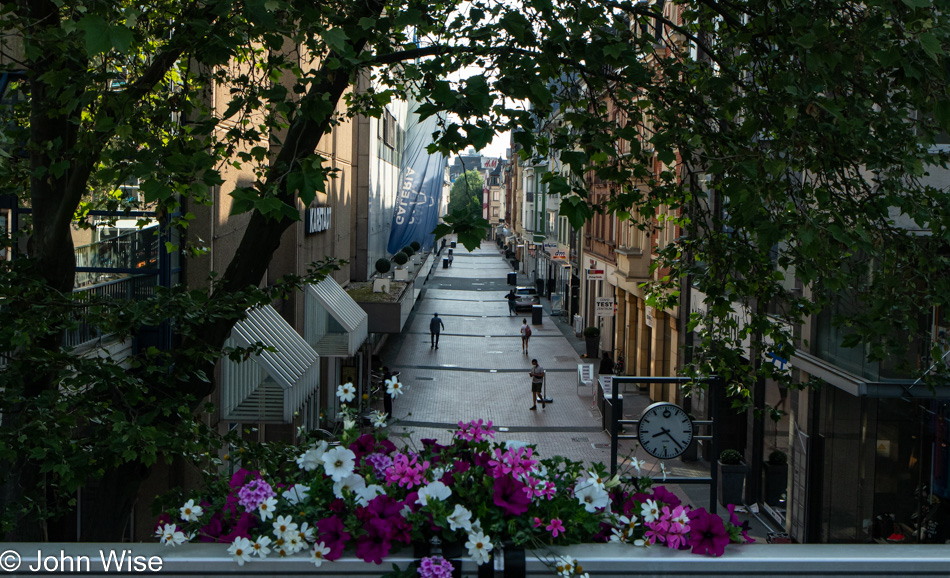
The signs to nowhere (supposedly the city center) brought me here. I thought I could spruce things up by capturing some greenery and flowers in the foreground so what lies ahead isn’t so grim in appearance.
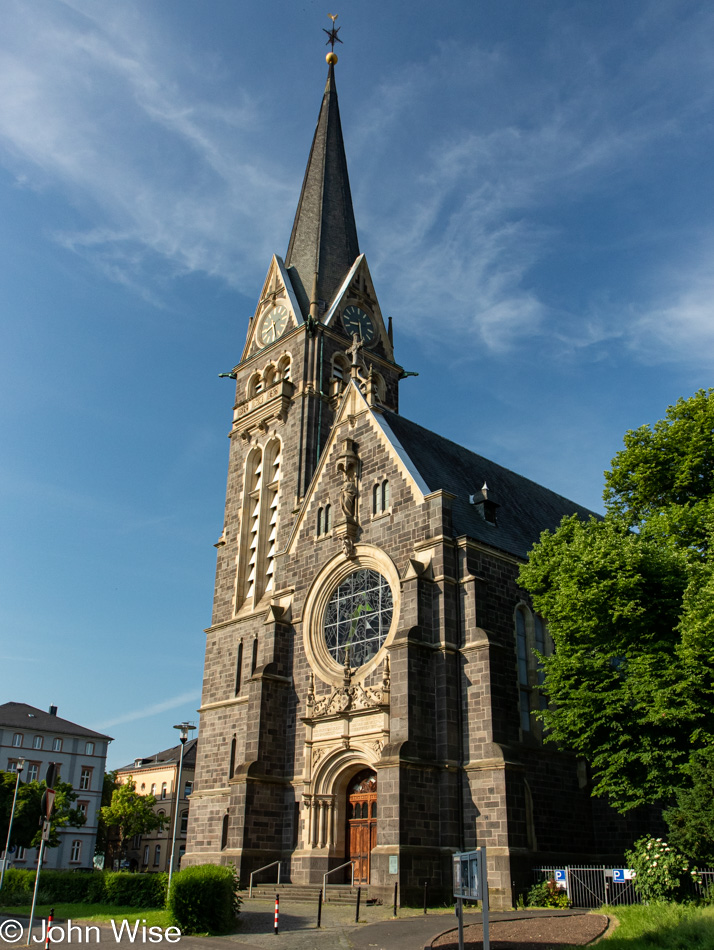
No time to investigate the innards of the house of our Lord. If God is going to speak to me this day, it will have to be from a distance.
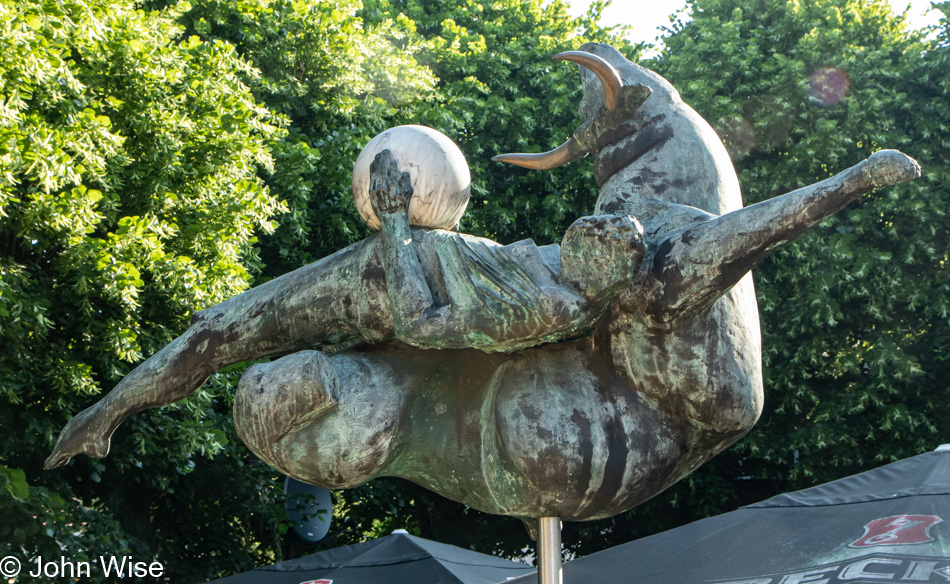
Could this be God making itself known to me? This bull-slug with amputated legs and a mummy-wrapped corpse holding a sphere is about as religious a thing as I’ve ever witnessed without the assistance of powerful drugs. I think it materialized here on its metal spike just for me; God sure operates in peculiar ways.
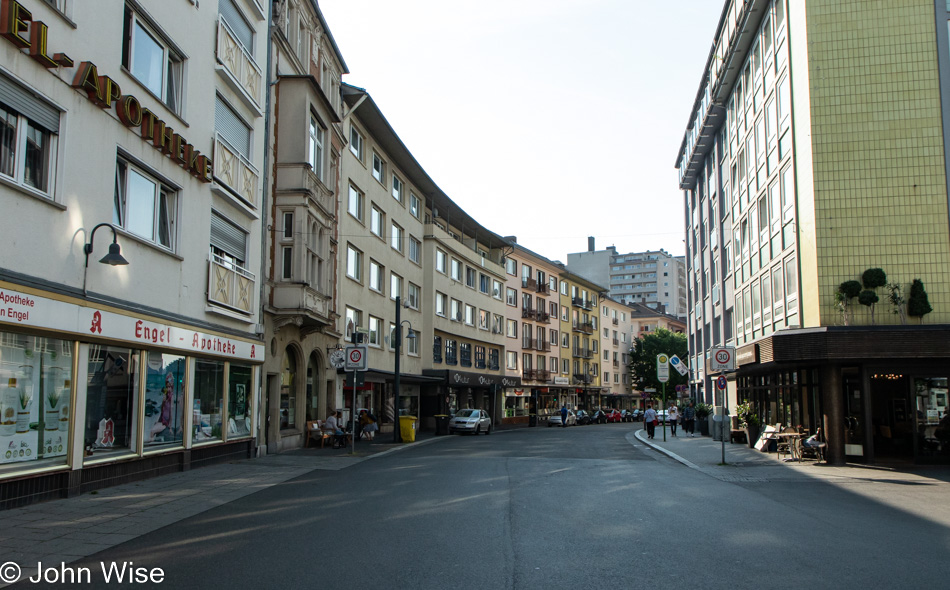
Giessen, well, I’ll never need to come back here. It feels like a town that sprung up after World War II, that or it was bombed into oblivion and never rebuilt a historical center. Pure function and no character can only mean one thing in Germany: this city was built for blue-collar workers.
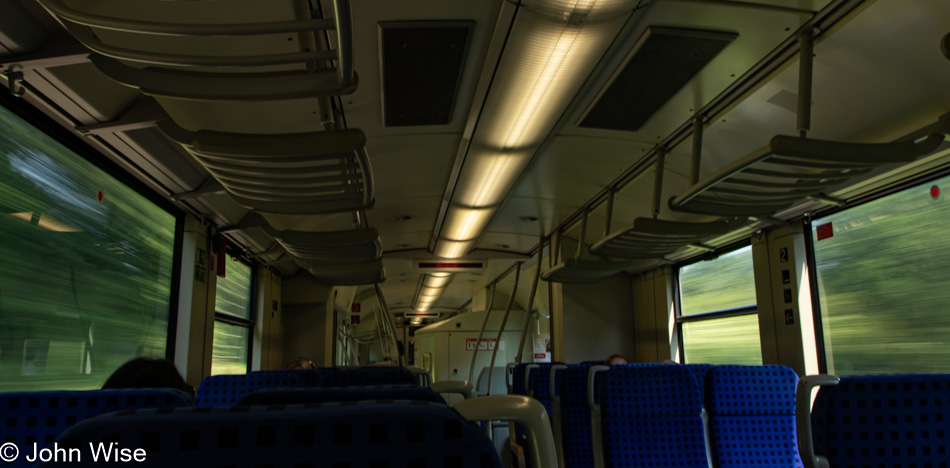
Jeez, got turned around and missed my first train. Now I’m on a train leaving from track 9 that’s supposed to stop in Wetzlar, but with the overhead sign saying Koblenz, I have to admit I’m not sure where I’m going. The worst that can happen is I’m fined those 60 Euros for the transgression of needing to navigate in an area not accustomed to foreign visitors as signage is not for the international crowd.
Yay, the overhead sign says next stop, Wetzlar. Just dawned on me that my phone is down to 75% of charge already and that I should carry something to charge it while I’m outside of Frankfurt.
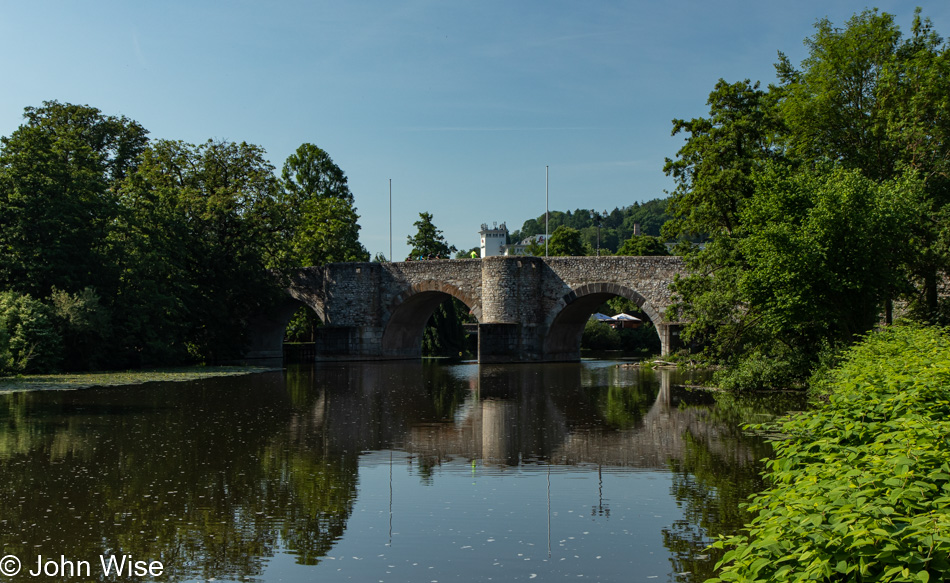
Arrived in Wetzlar without incident and started following the signs saying “Altstadt” or Old Town. I learned something about the region today as I heard water and followed the sound/ I’m on a river. The Lahn River connects Marburg, Giessen, Wetzlar, and Limburg on its way to the Rhein, along with many more small villages along the route.
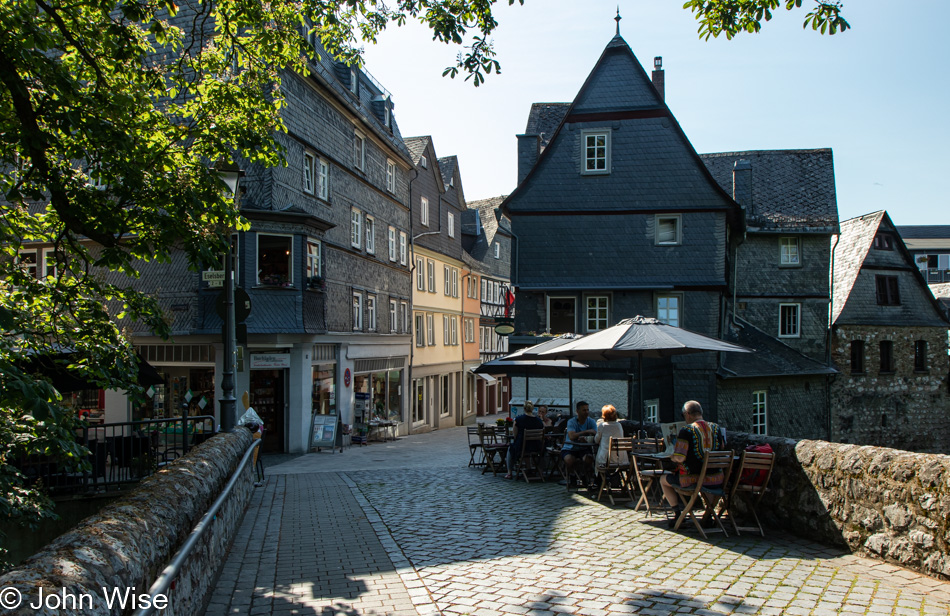
It’s pretty enough as I approach this half-timbered old town center, and it’s quiet enough not to disturb the living or dead. I should stop for a coffee, but any minute, this bridge might be busy as people start to go about their day.
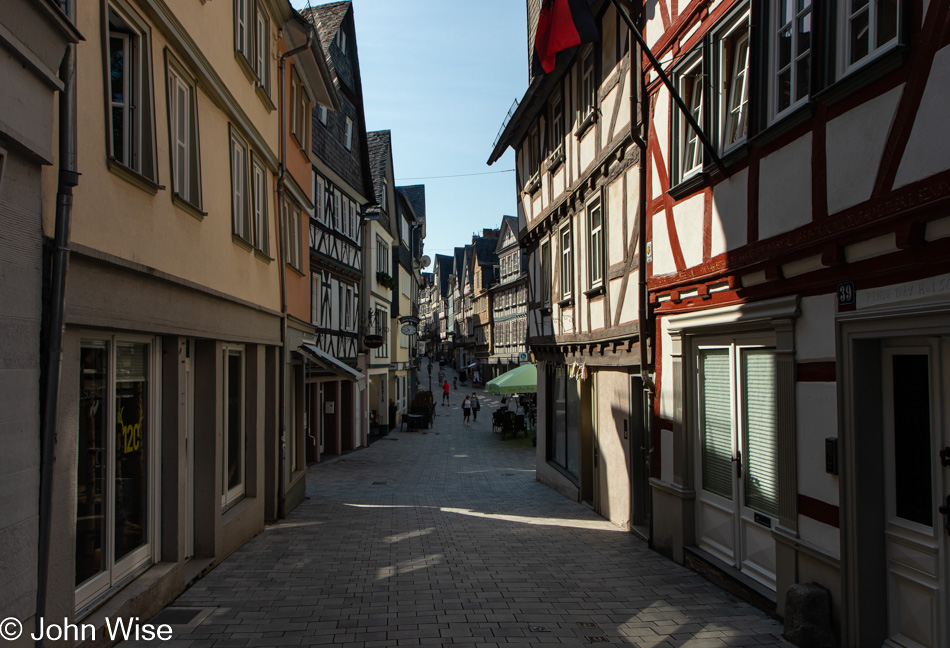
It would seem to me that by 10:00 on a Friday, the townspeople would be out and about by now; maybe they wake late?
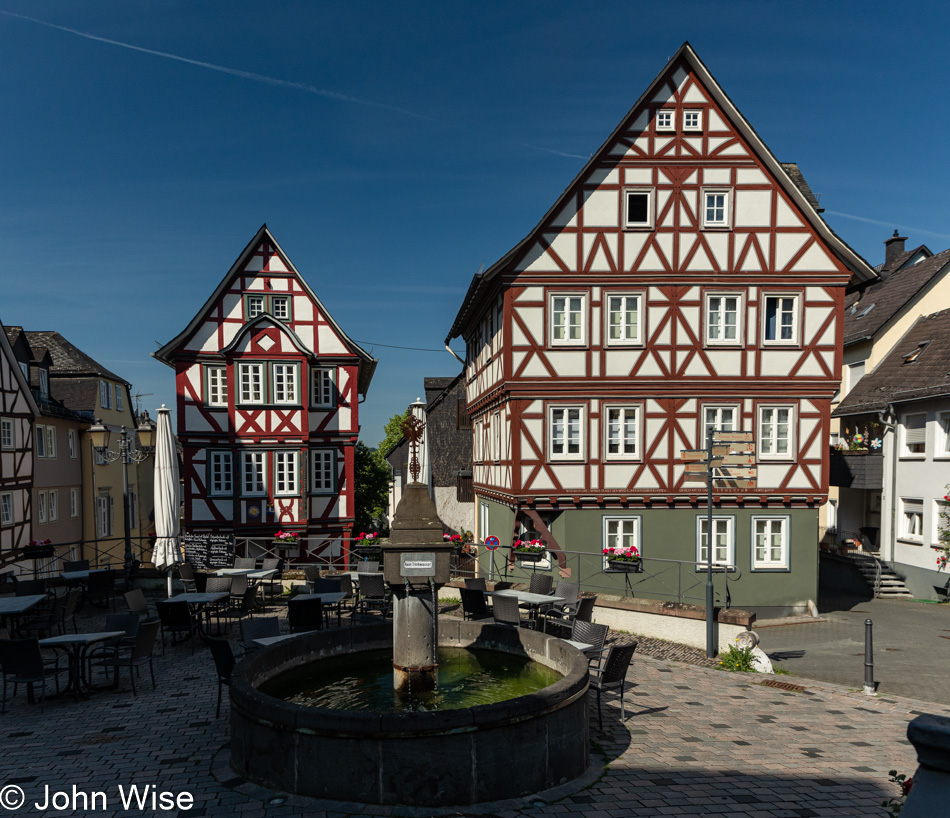
I should have stopped at my first opportunity for coffee at the bridge, but I was certain there’d be other cafes at such a quaint stop along the river. I was wrong. Could it be that when tourism was at its height, city centers became undesirable places to live and that some seriously high number of dwellings here are part of the Airbnb network instead of being used as residences?

The shops are still here, but were they ever for locals? Does someone who lives in Wetzlar really want an expensive cutting board noting Goethe’s short time spent living in this village?
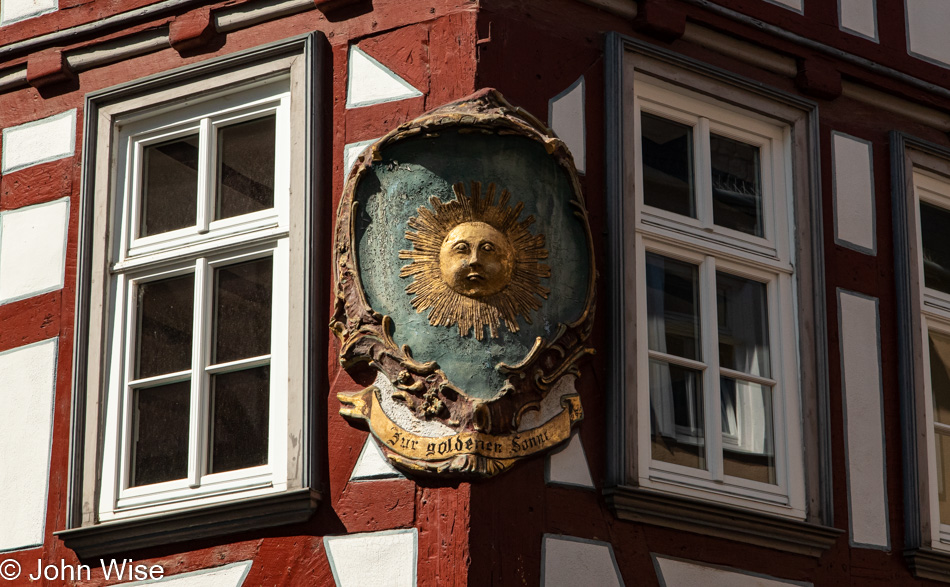
Like Martin Luther, it’s easy to get the impression Goethe stayed everywhere in Germany. Back on the 10th of May, 1772, Goethe, then a young law student traveled here to Wetzlar, which was then the “Capital of Law.” He took a fancy to the daughter of a member of the Teutonic Knights, her name was Charlotte Buff. Learning “that he could hope for nothing but friendship” from Charlotte, he left Wetzlar on the 11th of September, walking along the Lahn River towards the Rhein. Back in Frankfurt, Goethe learned that a friend had taken his own life in the very apartment in Wetzlar where Goethe had been living. These two moments in his life were pivotal and led to the writing of The Sorrows Of Young Werther.
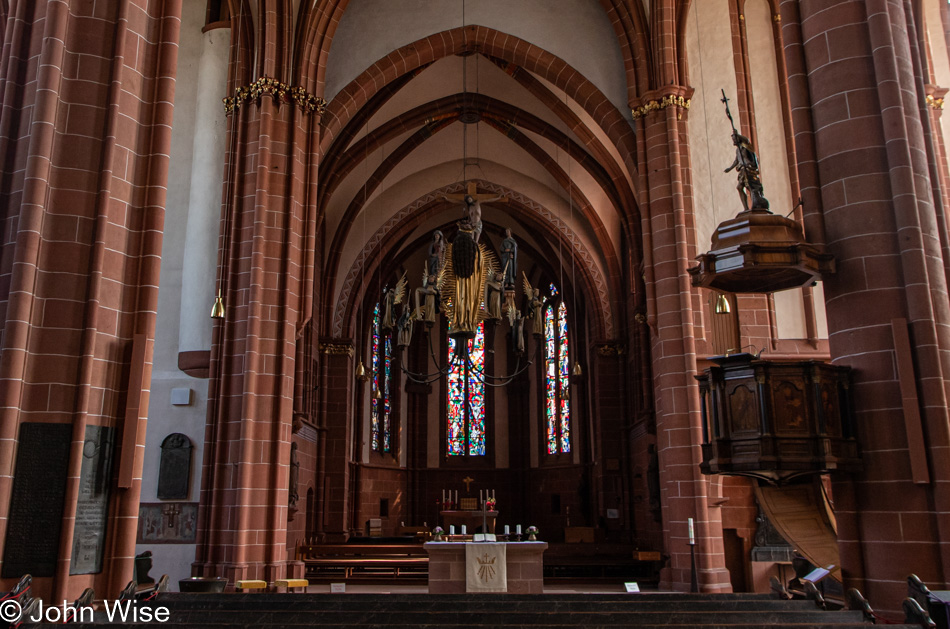
So, here I am in a nice cool spot as it warms up out there. This cool spot is, of course, a church that also affords me the chance to jot some “whatevers” down. Those first whatevers end up being yawns; the coffee beckons, but first, I’ll search for redemption.
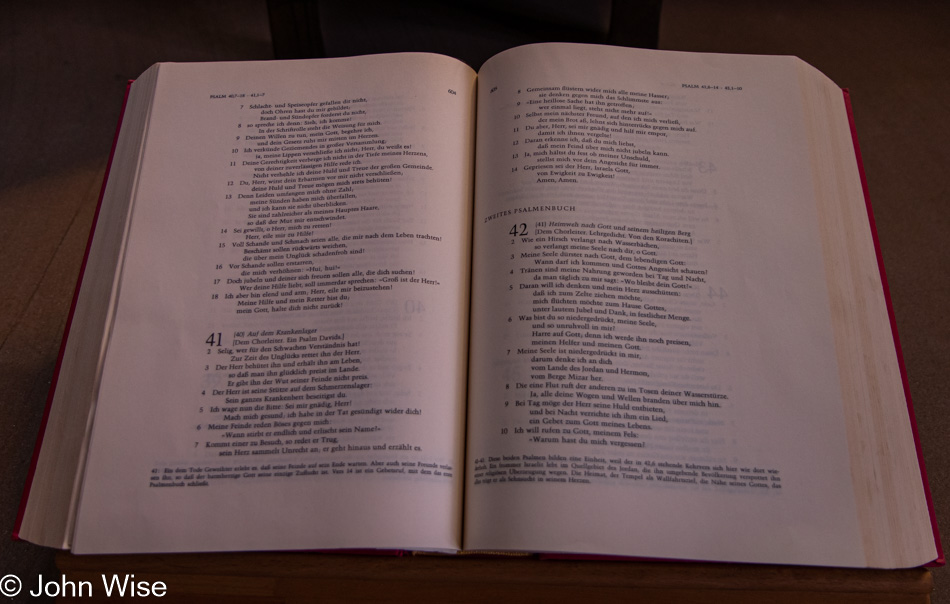
Why have I never realized that the church is like a car and the bible its user manual? With the church, you are traveling to a destination such as heaven or hell. Will you find salvation when you enter the church, or is your tank empty? Should you not know your way around the intricate workings of the church, pick up the bible, and it will tell you where to find the headlights, the radio, and windshield wipers so you can see better the direction you are heading. Once you are in the house of worship, you have a chauffeur and tour guide in the form of a member of the clergy.
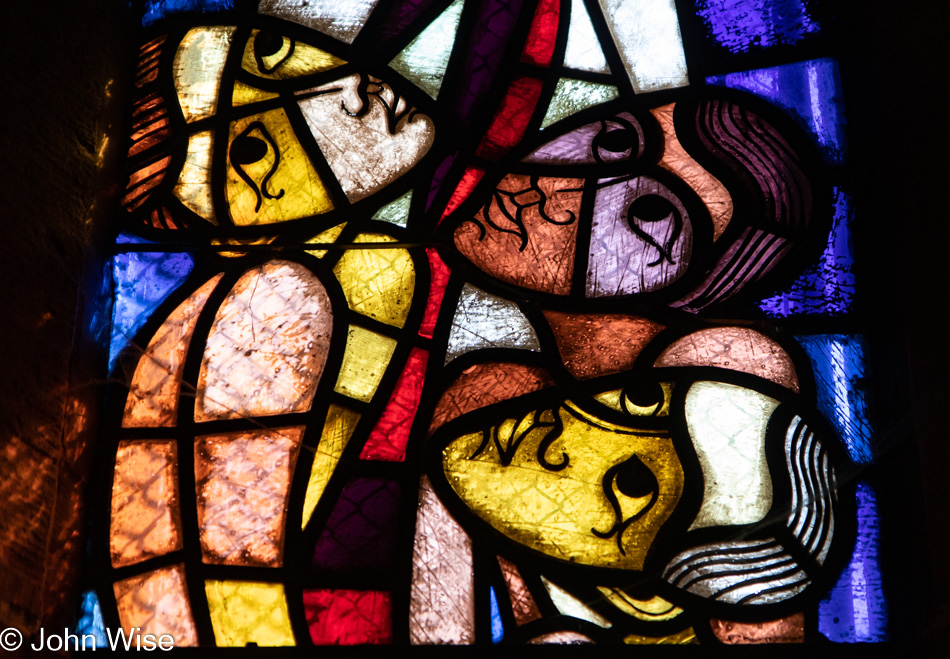
Back when the church played a much more important role in people’s lives, this was the vehicle that took the parishioners on exotic journeys so they might encounter God, if not here, then in the afterlife. Today, we offer alms in the form of money we pass on to those at airlines, hotels, restaurants, museums, and other places that draw in travelers. Now that God is dead (after we killed him), we can see God not in the church but in how we try to bring grace into our own lives when we turn to the online catalog of consumption and decorate ourselves with the adornments that demonstrate our holiness. We have become the altar, and those less wealthy than I can pray at my feet.
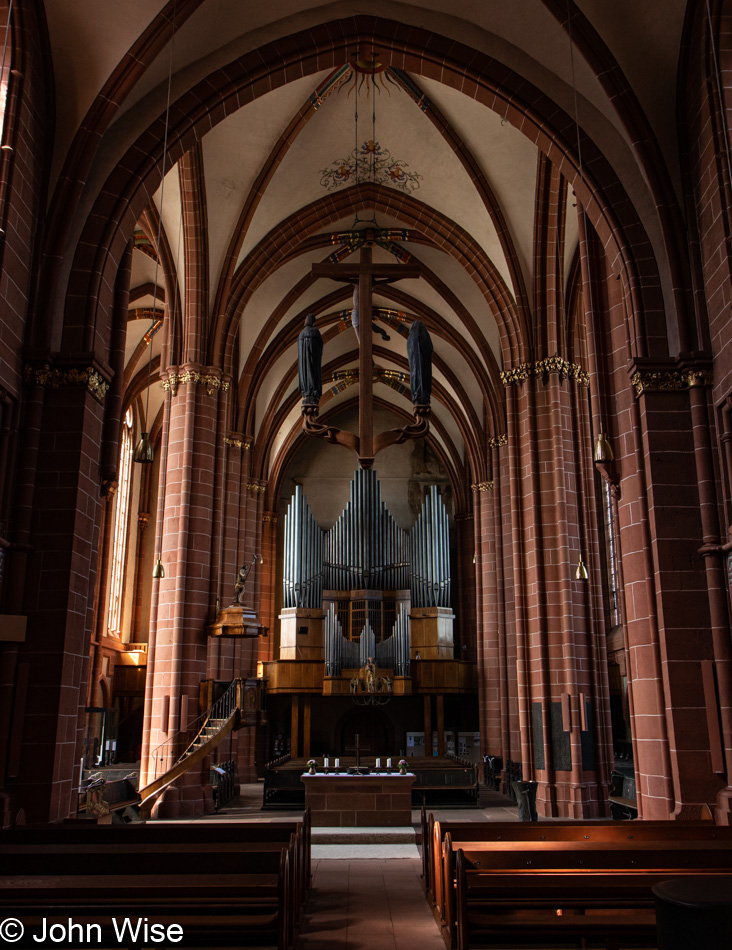
Music is no longer just provided by a massive church organ on Sundays; I have my Rockford Fosgate P300-12 Punch 300 Watt Powered Loaded 12-Inch Subwoofer in the mobile chapel I drive through your neighborhood at night or pull up behind you and vibrate your car too with the sounds of a thumping canticle. This is not meant to annoy anyone; it’s just that I’m a modern religious person, and you are old and intolerant as you’ve not changed with the times. Besides, the reverb in my car is tight, have you heard the horrible echo in one of these old cathedrals?
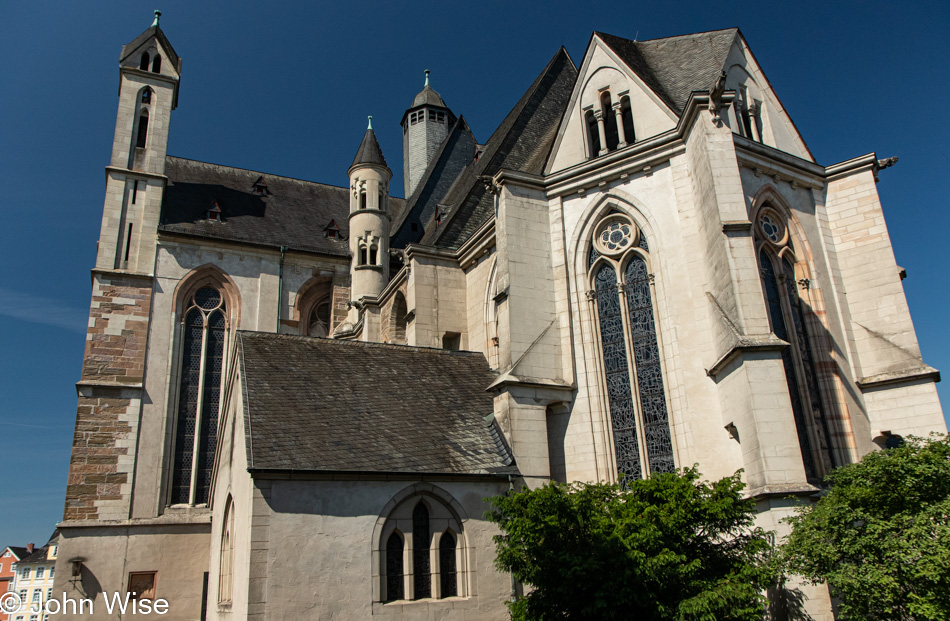
And the cost of even building a church anymore will never happen again, who can afford it? Take, for example, that an apartment in Frankfurt, Germany, costs about €7,000 per square meter to purchase (or about $850 a square foot in American prices, which would equate to the average home costing about $2 million). Now consider how many massively technical and artistic skills are needed to build a church; you’d have to consider spending at least €15,000 per square meter, add golden altars and ornate paintings, sculptures, and stained glass, and soon you are looking at a quick 2.44 billion Euros to build something about the size of Notre Dame or about $3 billion in U.S. currency. I have to admit I’m wondering why Mark Zuckerberg or Jeff Bezos aren’t building their own personal temples to wealth seeing they can earn this much money in anywhere from 10 days to a month or so. Ah, to be a God and listen to the choir of cash registers singing the eternal song of riches.
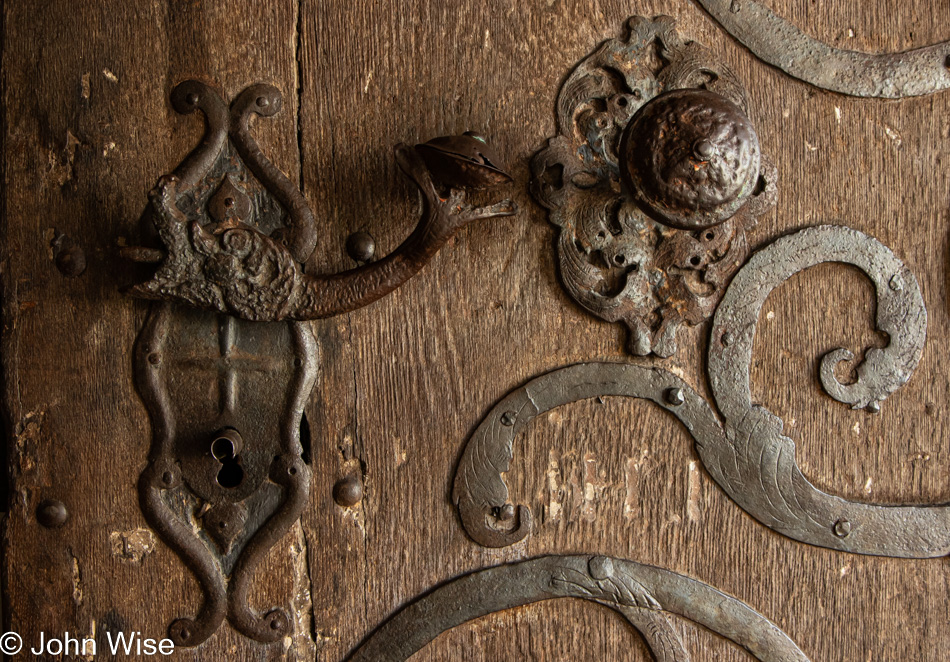
But money can’t buy time or replace the history of humanity. The old church doors that have been passed through across the ages have allowed people access to a shared culture and the carrying on of traditions. From there, people make their small contribution to each successive generation, offering a wealth that only accrues interest when others benefit from the knowledge that rose out of the desire to improve one’s place on Earth. But first, we must pass through the door.
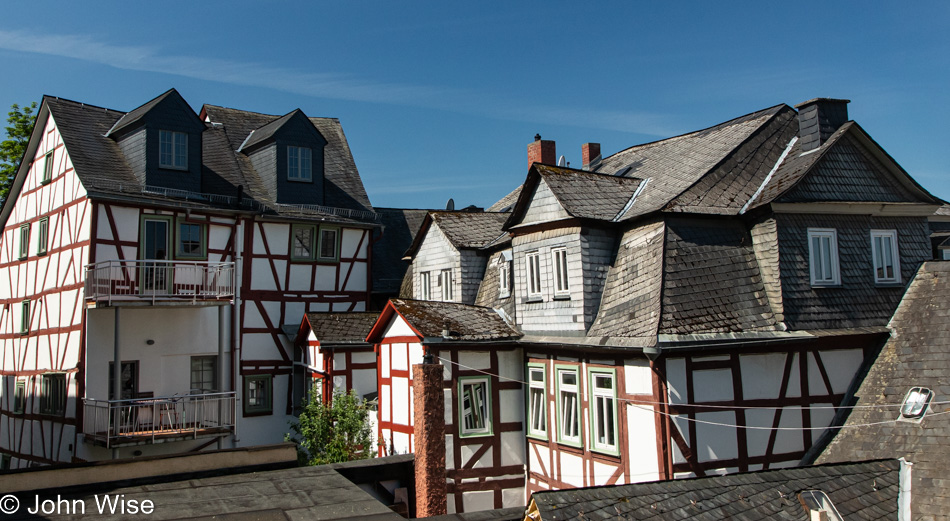
Maybe an earlier Elon Musk lived in one of these houses; we don’t know his name today, nor do we care as the souls that occupied these spaces are meaningless to us in the here and now other than the possibility they survived war, famine, and plague which allowed us to replace them hundreds of years later.
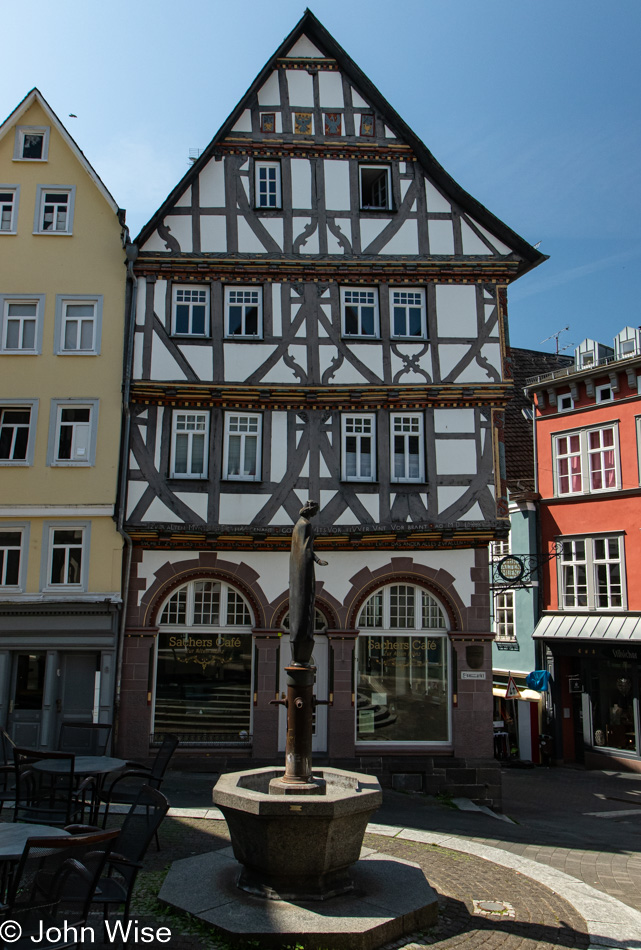
Our compass points forward, but the arrow of time is merciless. Where our journeys take us and what we glean from these moments will say little of where we traveled today, but they can volumes to future generations who might listen to the story shared on the pages of a bible not yet written.
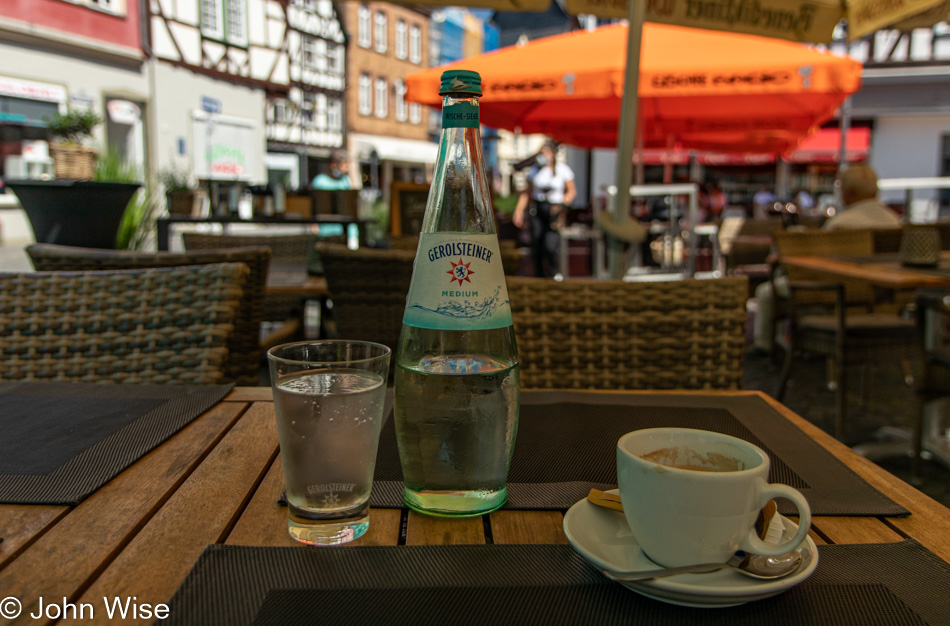
And then the Lord said, let there be a Greek restaurant with good shade to meet your needs and keep you in comfort. And so it was done. My servant turned water into coffee and manifested tiny bubbles to the water brought to sustain me. Asked if I’d like the Lamb of God, I agreed that the mixed grill plate would be the perfect Eucharist but asked if that came with sacramental bread. Assured I was having a full service brought to my table, I was ready to fall into prayer. Blasphemy, you say? Sure, and Jesus walked on water.
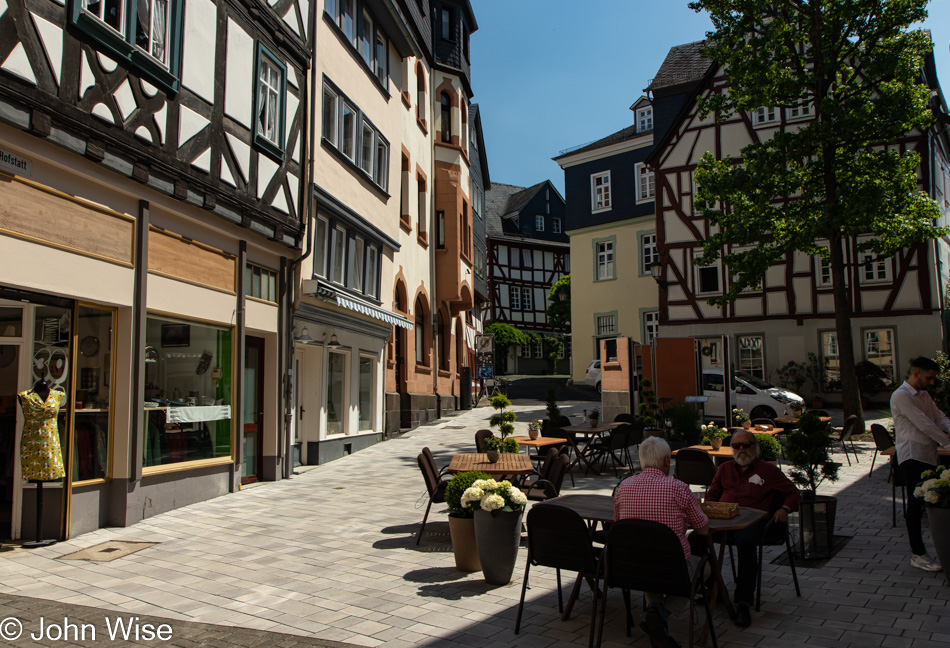
This village offers little to read where things are. Is it dead because there’s no tourism? Do the locals work away from the Altstadt, or is it being depopulated? I have seen a good amount of empty houses, abandoned shells of houses, and places that appear no longer in use but viable. I wonder, at what density of tourists do they drop some kind of energetic vibrance into a place, livening it up in such a way that makes things more exciting? Maybe that’s exactly it, when a place is packed full of people, we struggle to see all things as we move with the flow. By competing to grab the perfect spot that satisfies our sense of the aesthetic, we do not have time to linger in thoughts that ask, what next?
Hah, how does that apply to a mind searching for words when its pathways appear deserted, too? Do I need more words stuffed into this head or more images? This then has me asking myself if being sleepy is the mental equivalent of heading into the night instead of the dawn.
So, was it the coffee that brought wakefulness, the meal, or the combo? True, I’d only had a small salami sandwich on a roll before leaving Frankfurt, and it is mid-day, so maybe that first bite and clocking in my first five miles before 11:00 played a role? I’ll continue to explore this old town center for a bit longer and then flip the coin if I head to Limburg or Fulda. Writing that I already answered the coin flip, I’m going to Limburg, so I explore more of the Lahn River area before heading to other places.
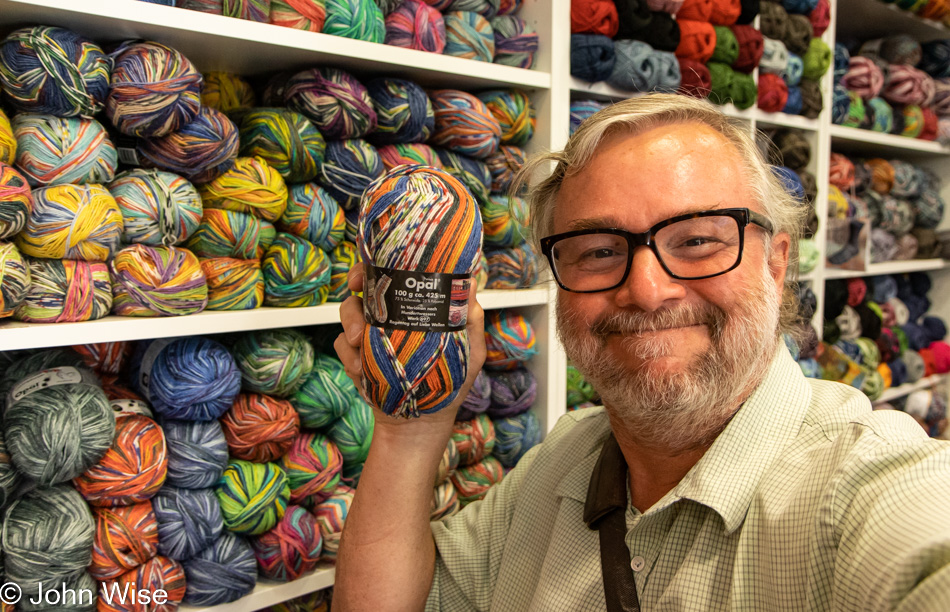
Walking along back towards the bridge when a yarn store jumps out at me. I’m at Stricklaedchen, and they are open. I said to the shop keeper, “Meine Frau alle meine socken machen, ich suchen wolle von Deutschland” she responded, “Schön, hier ist Sockenwolle aus Deutschland.” What more needed to be said? But before I could choose one, she recommended a colorway from Hundertwasser, and well, that was all the convincing I needed. So, either Caroline or I will one day wear a pair of socks with the yarn I bought in Wetzlar, Germany, inspired by Friedensreich Regentag Dunkelbunt Hundertwasser.
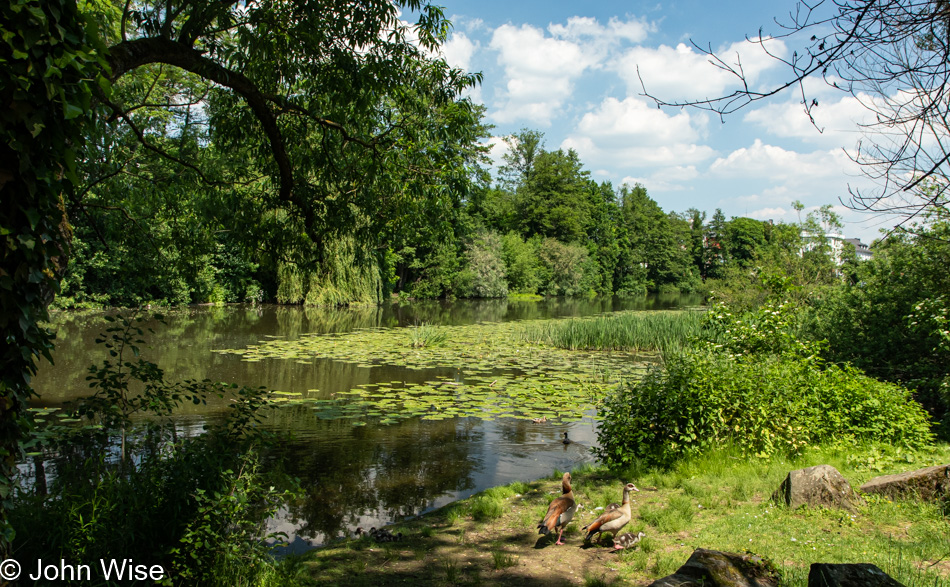
Other than maybe more photos from the Lahn River, I needed nothing else, so along the riverbank, I strolled on the shady side as far as I could before turning towards the train station. As I allowed my eyes to take in the beauty of these natural settings with the goose family also out for a stroll, I thought maybe this could be my Giverny, and whereas Monet painted with various pigments, I would paint this with words, if only I had the time to linger.
This being a very small town, trains are not all that frequently pulling through. The one I wanted heading northwest was 21 minutes away when I sat down, and so I set to note-taking of my impressions. Obviously, this is not the kind of writing I’d like to be dealing with. Instead, I believe I might be in need of another coffee to fuel my impressionistic sensibilities.
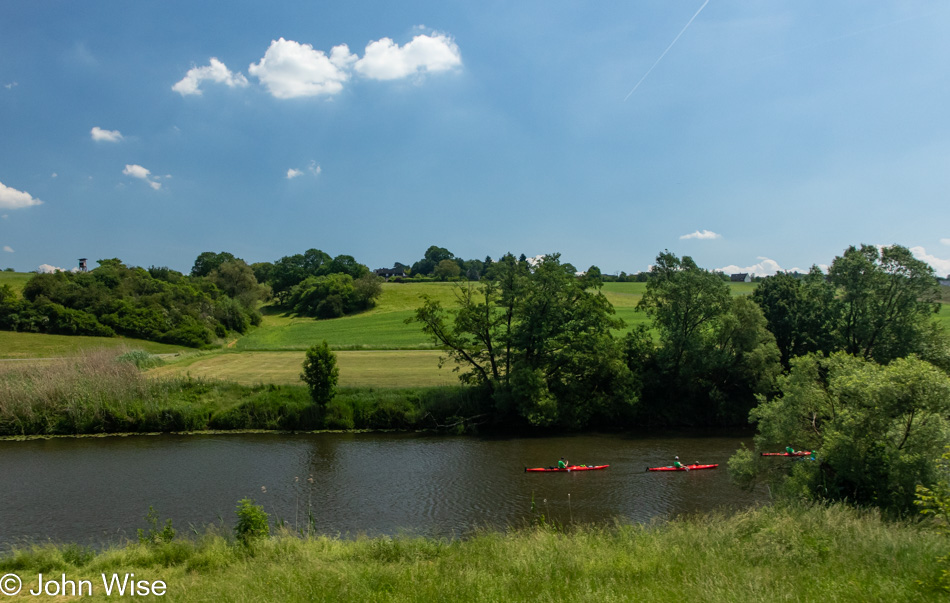
I should point out that the Lahn River is used recreationally with small boats, rafts, and some going in for a swim. Where there are small rapids or falls that are too shallow to navigate, there are side chutes with walkways to pull a kayak or sculling boat along a wheeled ramp that makes pulling it easier while the boater walks next to it over a boardwalk.
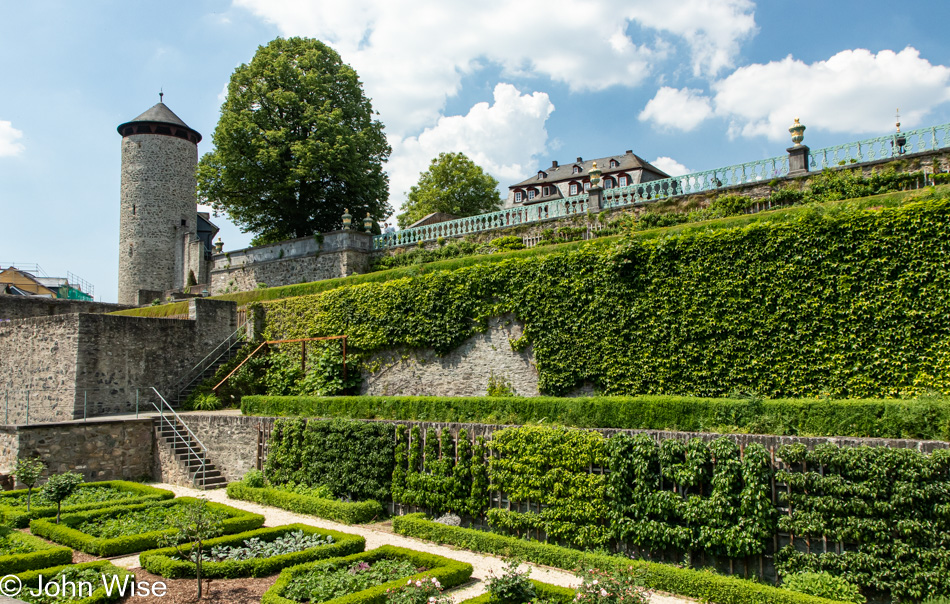
Quick change of plans as I disembark the train in Weilburg for a quick walk up to the castle. No time for coffee, but water had to be found as the combo of relatively hot weather with humidity I’m unaccustomed to is still taking time to adapt to, a kind of weather jet lag I’m struggling with. I was in a hurry because the trains move through these out-of-the-way locations so infrequently that I knew I’d better catch the next train heading to Limburg. That departure was scheduled for 70 minutes after I pulled into town.
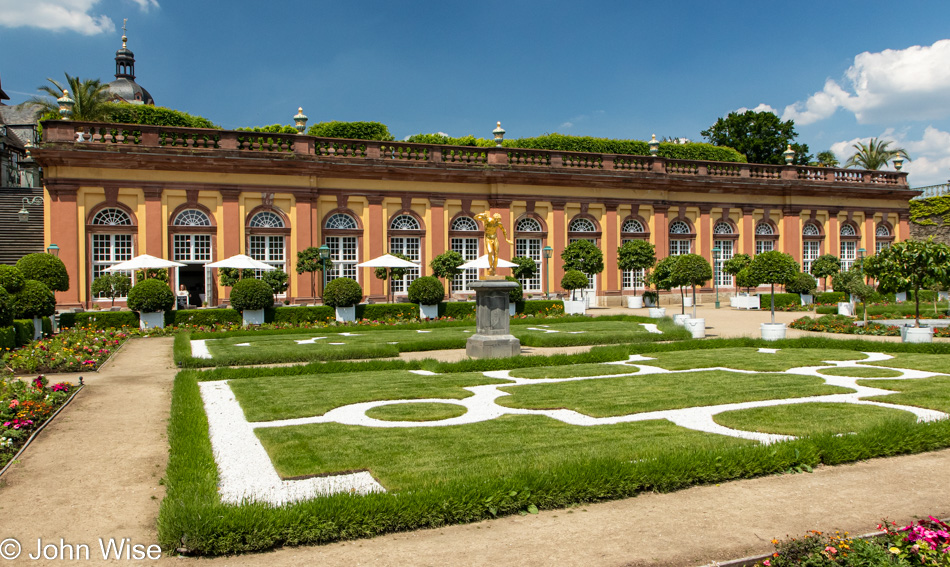
Okay, I’ve seen the palace, and now I can leave. Just kidding, even if I were late, I’d just go with the flow and let my interest dictate the time.
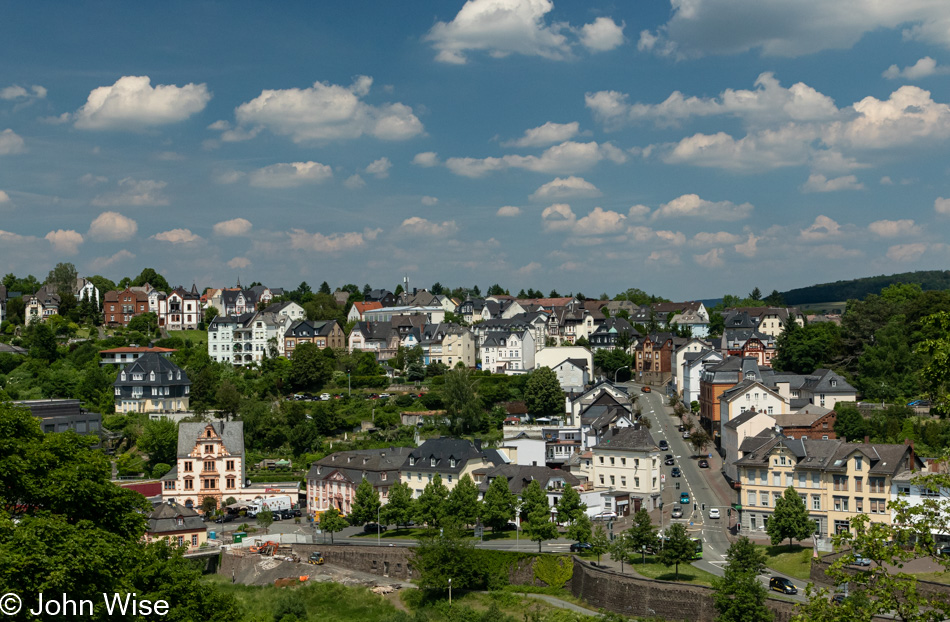
How deceptive is the practice of sharing just the images that might inspire someone else to see the inherent beauty of a place that any other photographer is also trying to offer others? Maybe all springtime visits to Germany should require travelers to spend a solid month over here so they too might know the amazing days in addition to the cold, wet ones that are inevitable.
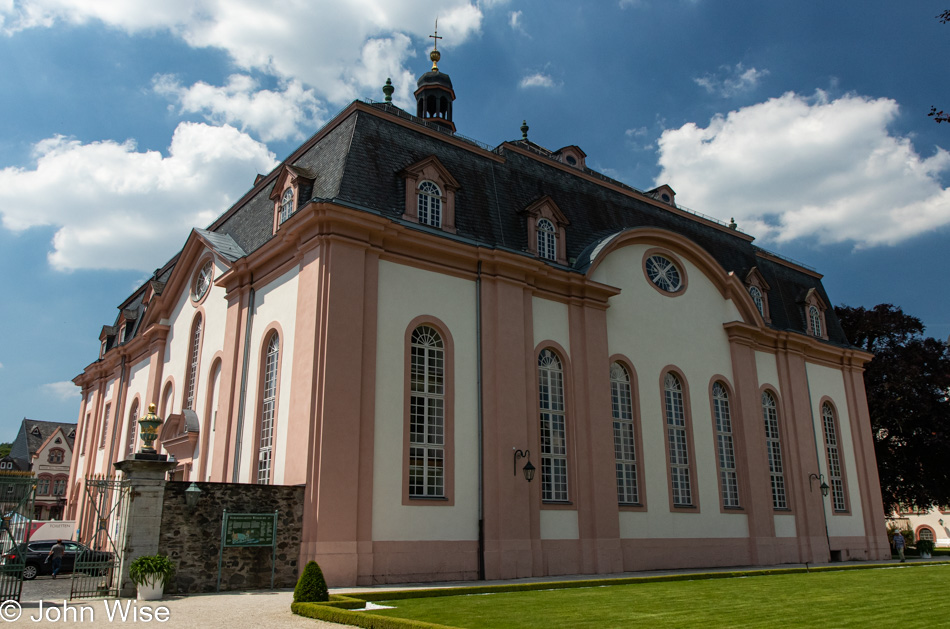
Even if this castle were open to visitors (it’s not), I wouldn’t have time to investigate further today, nor would I really want to, as if I like a place, there should be something left unseen that draws Caroline and me back.

When Caroline saw this image, she blurted out that she already knew it as she had a postcard of it when she was younger. I forgot to ask if she had it because she liked the image or if she had visited as a child, as Jutta would load up the girls in their Renault 4 and tour various places in Germany and France.
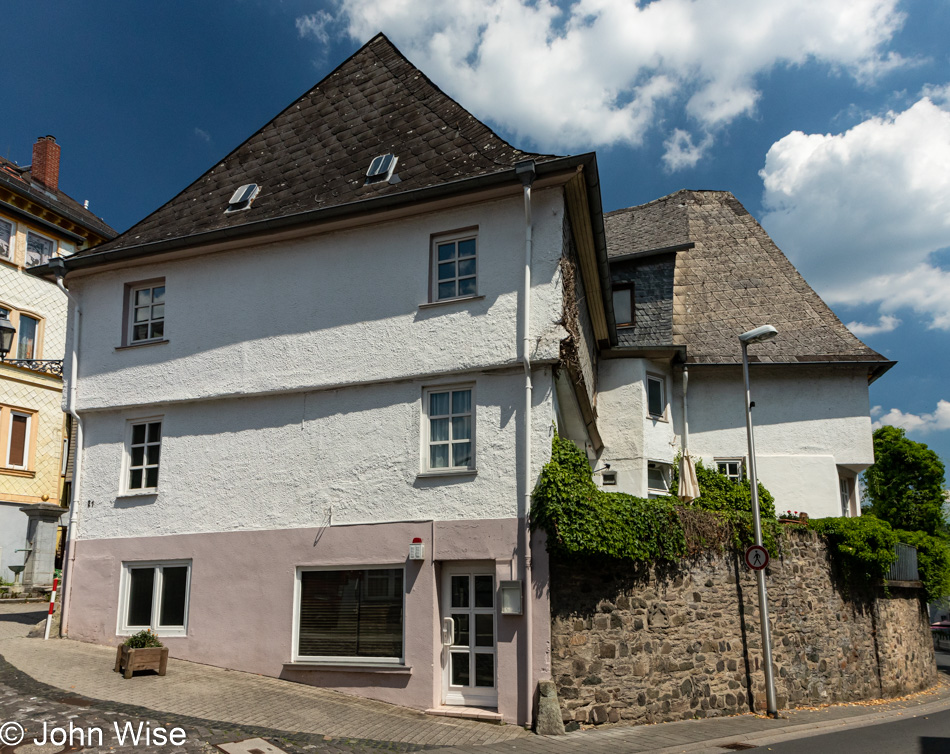
This is the oldest house in Weilburg, built back in 1576; I’d live in it.
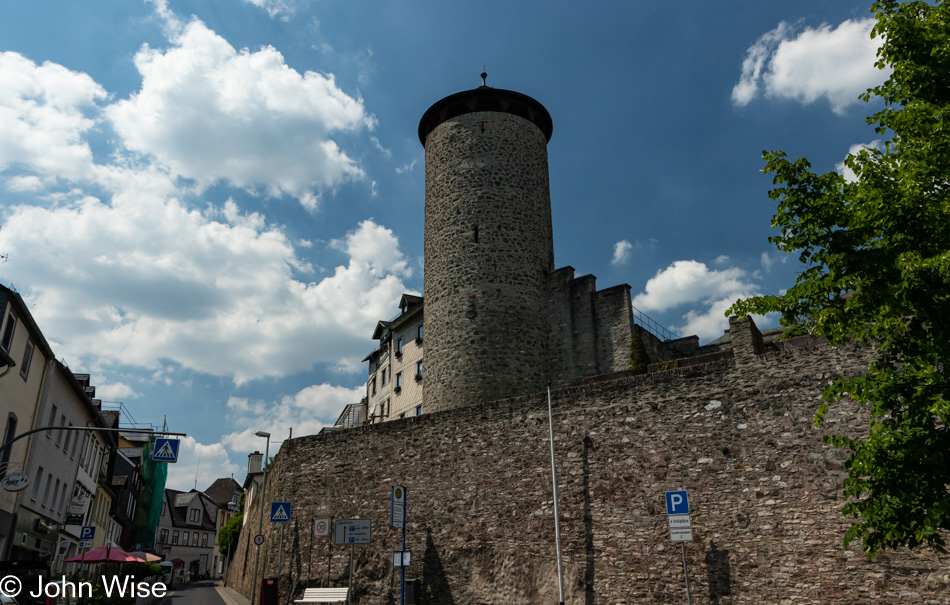
How’d I already get back here? Nothing like a bunch of curved short streets and alleys to ensure that you don’t really know where you are. Had I a fully charged phone, I could have followed where I was on a map and would have known better how long it would take me to get to a point and if I’d reached the furthest corner of the old city center. No time to backtrack; must keep going forward.
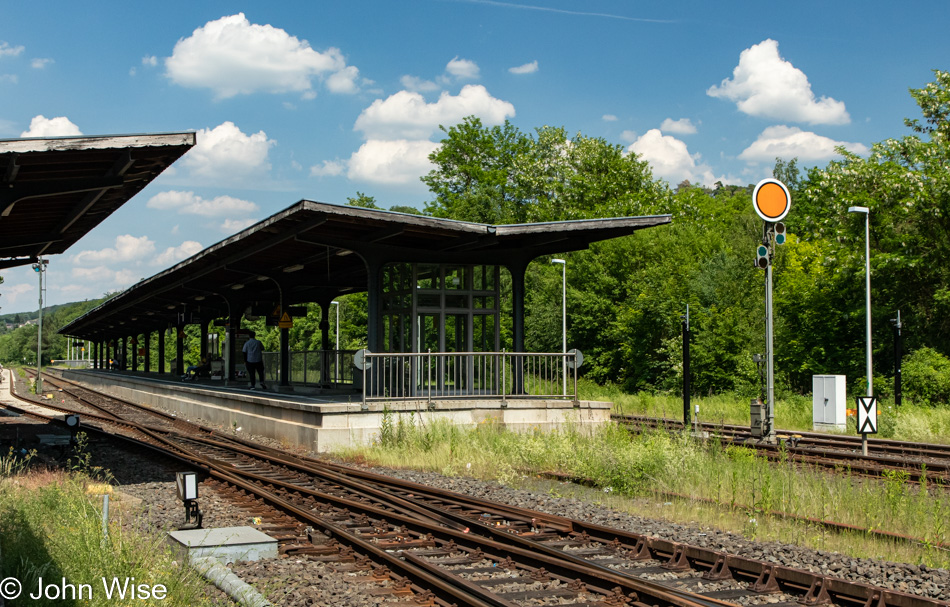
Wouldn’t you know that I’d get back to the train station 20 minutes early and then the train is going to be 10 minutes late? Once the train showed up, we traveled along the Lahn River in a wooded area, passing through the occasional tunnel. Before I got out of my seat and headed over to the big windows to start taking photographs, I realized how differently short trains ride. Has anyone else noticed this?
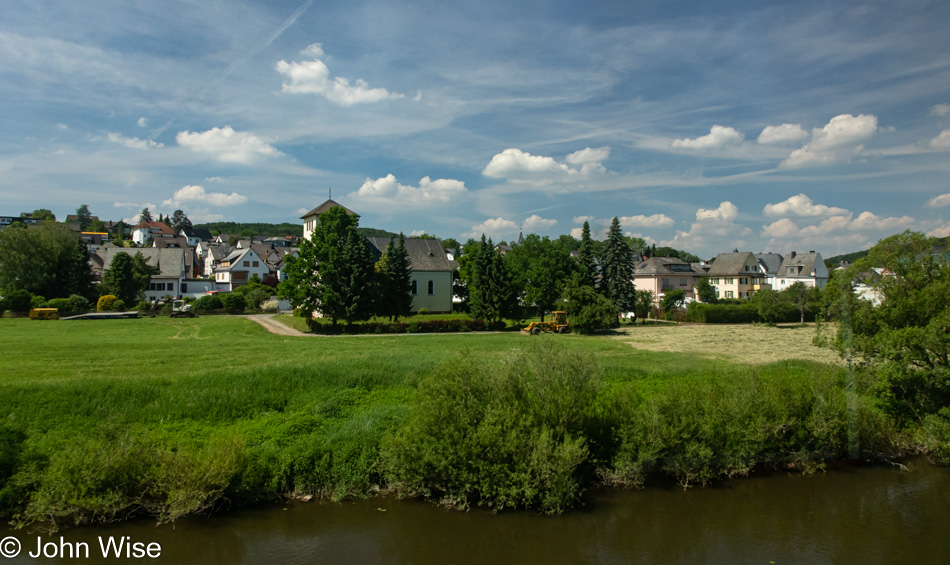
Aumenau next to the Lahn River at once looks amazing under billowy white clouds and the deep green of spring giving way to the summer, but somehow, I sense a malicious farmer in their presence ready to use some townspeople as fodder in a situation right out of the Funny Games horror movie franchise.
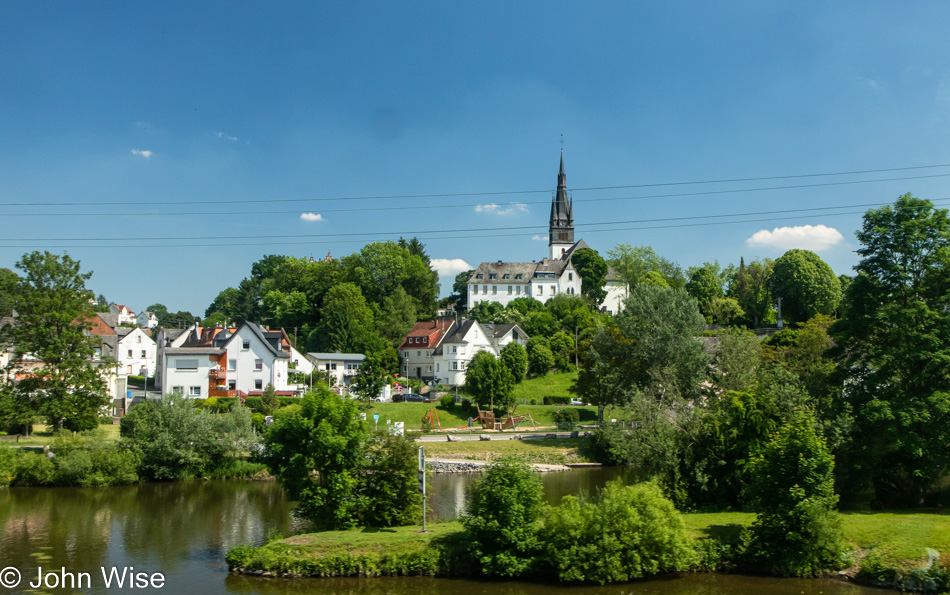
As we make our way along the Lahn River, we pass Villmar and Runkel. This is Villmar, and while I tried to snap a photo of the castle ruins in Runkel, the sun was in the wrong place, and my window had too much glare on it. My impression of the Lahn River valley and the villages that have taken up a permanent home here is that one day, I’d like for Caroline and me to take the 55-mile / 89-kilometer walk from Wetzlar to Koblenz on the Rhine River just as a young Goethe did so many years ago. Hmmm, could I walk 18 miles / 30 kilometers a day for three days?
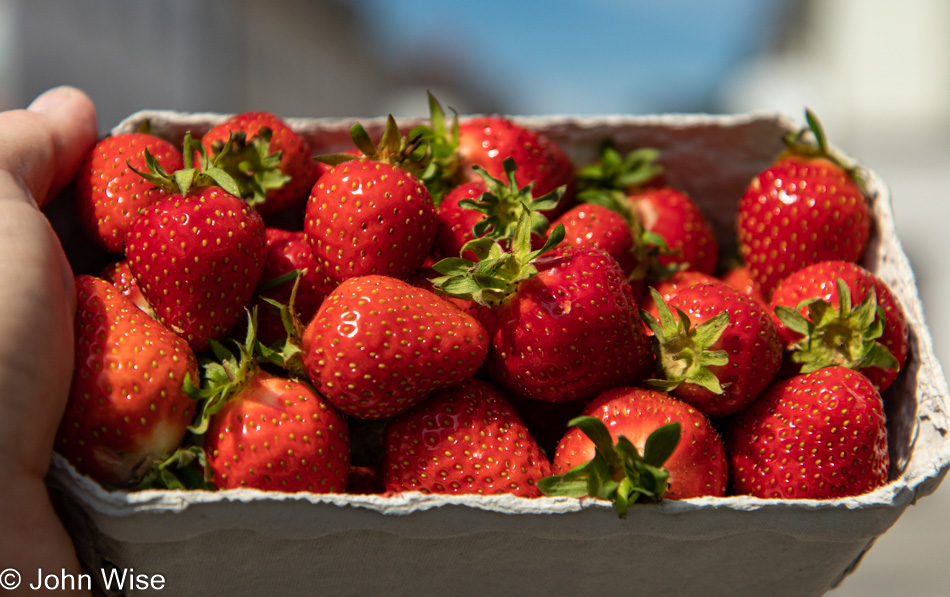
Giessen, Wetzlar, Weilburg, and now Limburg. The fourth city for the day is possibly the better way to spend time out of a major destination as its old city center is bigger with more to see, more to eat, more to drink, and more to visit. And the significance of the strawberries? Nothing other than the personal nod to Caroline once again that these Erdbeeren grown in Deutschland are sagenhaft.
As I was looking at the map of the route I took today to get from Giessen to Limburg an der Lahn, I was wondering if any old, similar route from one unknown place to another might produce the same results, so I looked north towards the direction I was supposed to travel out of Giessen this morning. That destination was Siegen, which I can’t remember ever hearing about before. Had my trip started there and headed west, I would have passed through Betzdorg, Wissen, Altenkirchen, and Buchholz. I looked up all four towns and realized that I might be enchanted by all four, and if that’s true, then maybe all 2,060 cities and 11,042 localities are of interest, too. Well, except for Giessen.
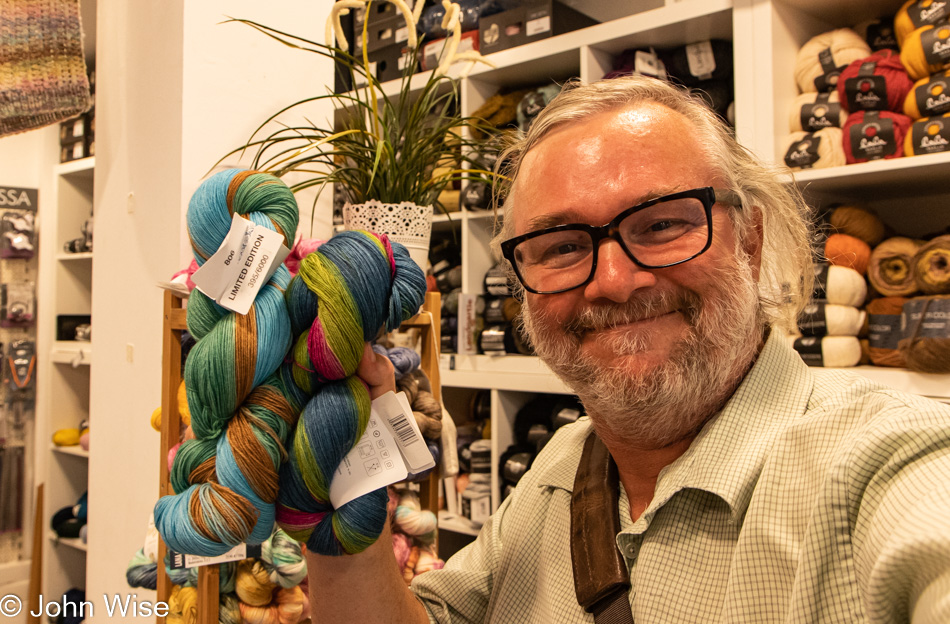
Why do I do this to myself? I didn’t even have to admit I found yarn stores; Caroline would have never known I had passed them. Not only did I see them, but I also went inside with my enabling mindset fully engaged. Maybe this is stretching the truth a bit, but only a bit. While I was in that first yarn shop in Wetzlar, Caroline was still asleep, but while I was in Limburg, she was awake, so I stoked the fires of desire by sending her a quick photo of yarns. She perked up, “Is that Wollpalais?” How the hell did she know that so quickly? Has she memorized all the yarn stores in Europe should someone she knows happen to be visiting that town? You don’t think she could remember that? Then you don’t know Caroline. I told her I didn’t find any sock yarn I wanted, “Too bad, look for lace-weight stuff for me.” She liked the blue and brown, so I got her two skeins of that, and I liked the blue, green, and red, and although I didn’t need them, I could hear the little Caroline devil on my shoulder telling me to support small yarn shops like this during the pandemic so I obeyed. Seriously, I could have kept my mouth shut, but maybe I was overcome by love. Hey, do any of you readers know if voodoo dolls could control me in this way?
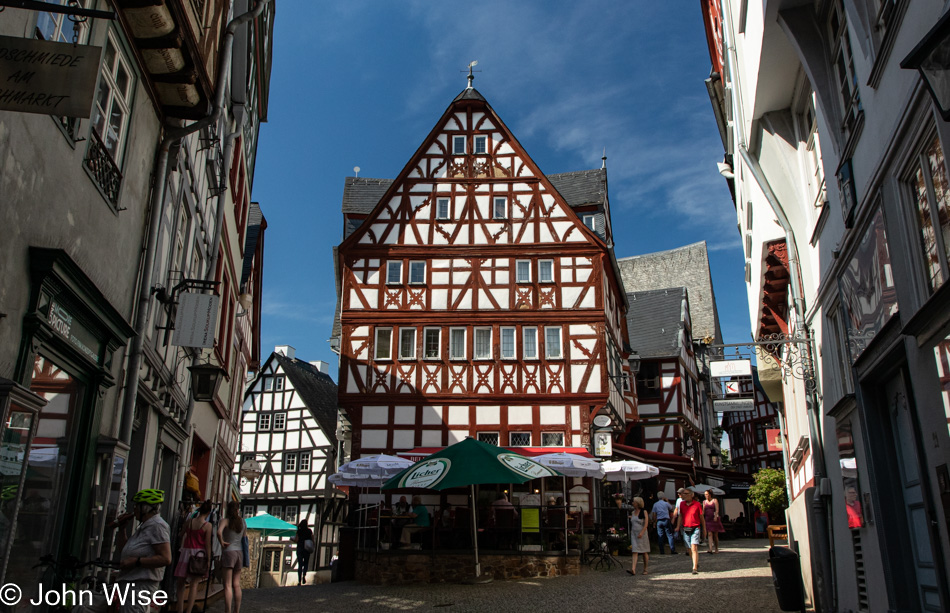
It was here at the fork in the road that I checked into rehab, and while that might look like some restaurant or pub to you, upstairs is the 12-Step program for yarn-buying enablers who first go through the process of doing what they know they shouldn’t and then drown their guilt in Spaghetti Eis, Rabarberplunder, or Bio-Körni Brötchen mit Butter and Johannisbeerenmarmalade. I feel like a food alcoholic, and the first step is admitting that I have a problem. Is Lent coming up? Maybe I could give up buying yarn, then?
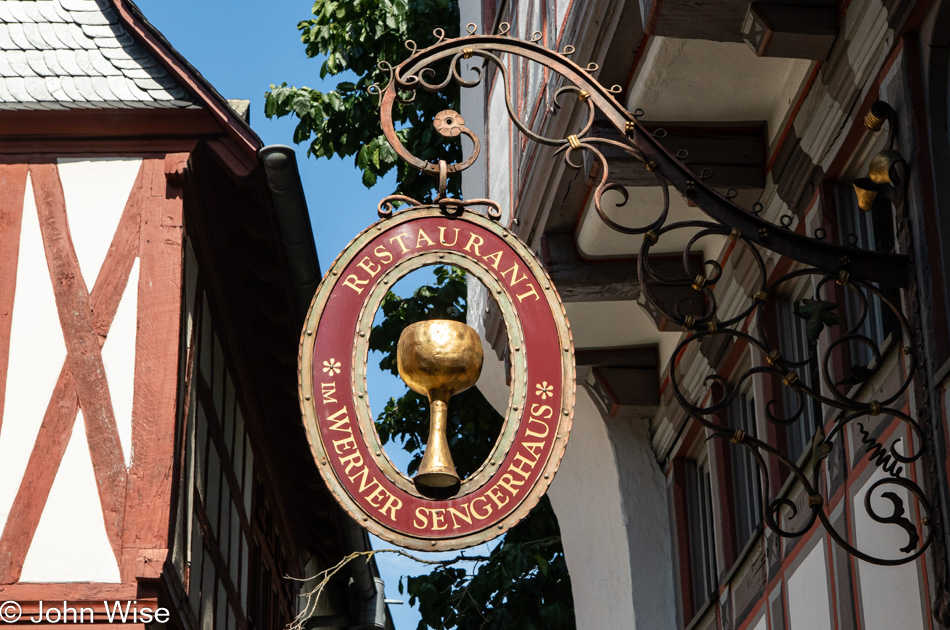
This sign has nothing to do with what I was doing other than I love these signs and will forever be amazed at the German craftsmanship that is able to balance a golden goblet in the center of such a thing. I mean, seriously, how do they do that?
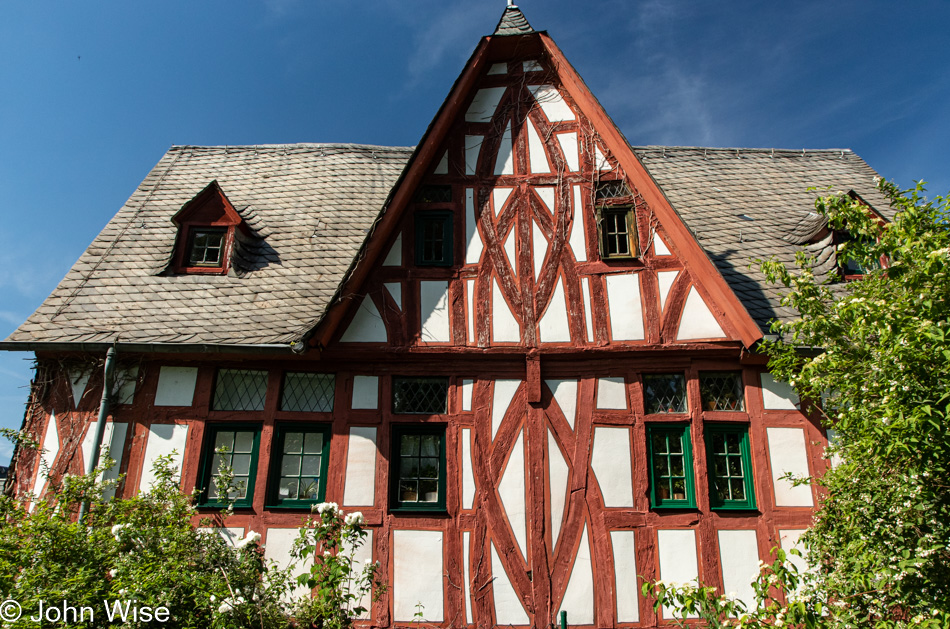
Not much is crooked; this must be modern.
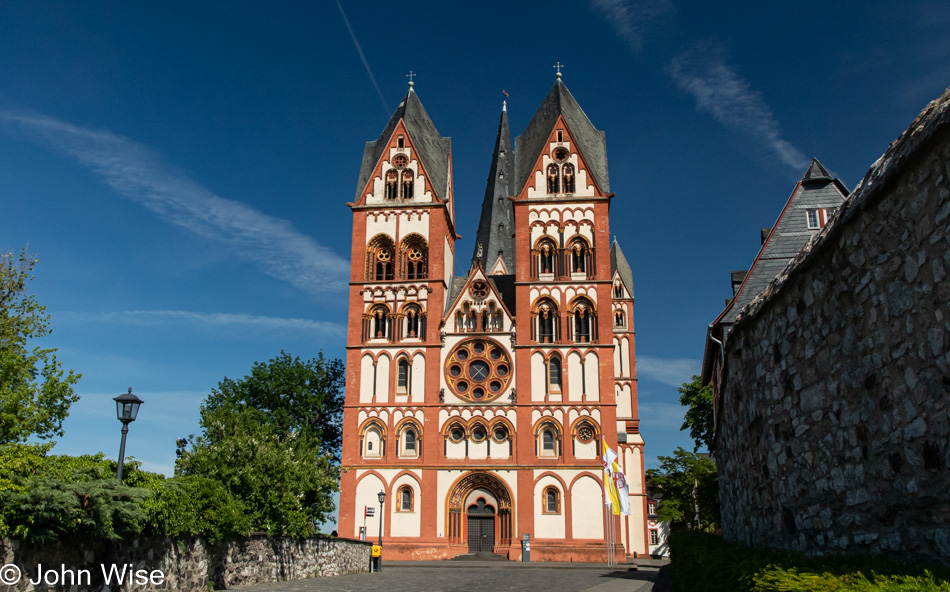
Caroline pointed out after reading the first half of this blog post that while in Giessen, I said something about the Lord having to discuss things with me outside today, and then maybe an hour later, I was in a church after all. In my defense, I explained that I have now realized that my car and I are my church, and I wear my piety in the outward appearance of wealth I’m able to adorn myself with, so going into churches is an exercise not in finding the sanctity of anything holy but a mere visit to an archeological site where I might find evidence of previous souls. Next stop, hunting for evidence at the Cathedral of St George.
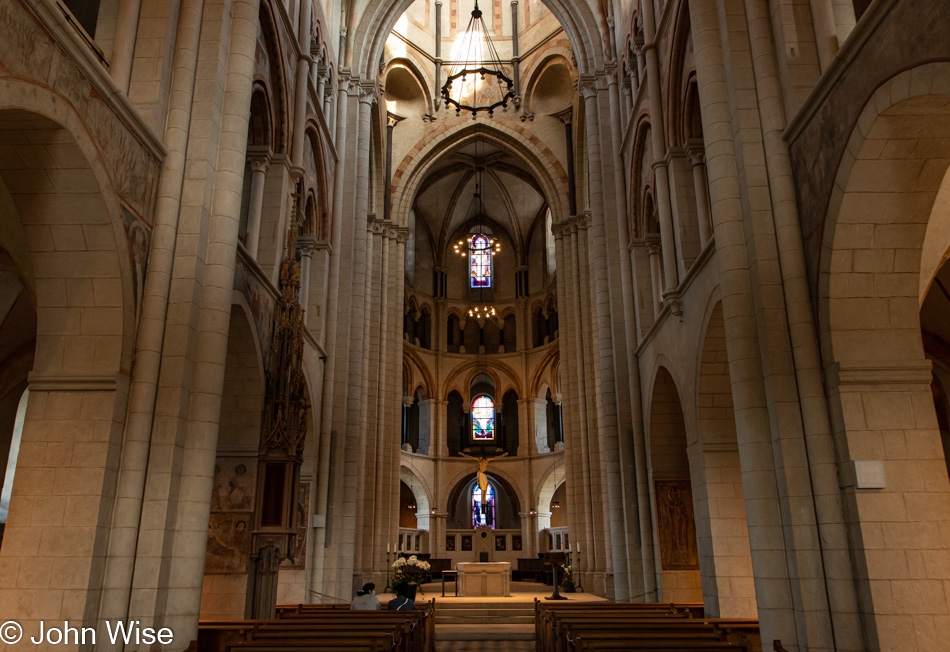
Oh, look at all this badass architecture knocked out back in 1180 to 1235 when making things involved quality work that might last for, oh, say, 1,000 years!
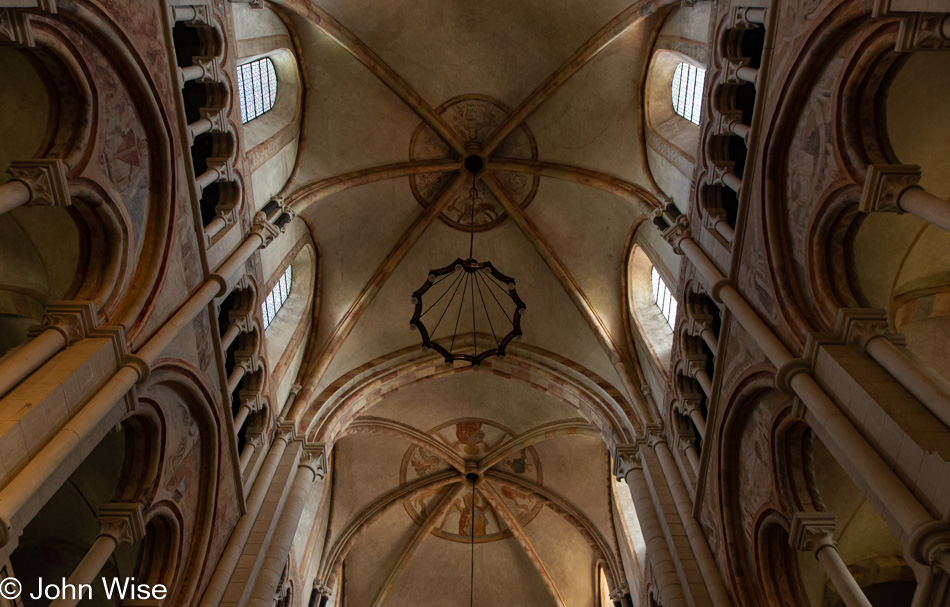
Just the other day, I was thinking, “Damned thing that Nietzsche fellow, having garroted God triggering the German hordes to scream into the abyss, ‘Herr Toller Schnurrbart has killed God, can the Jews be far behind?'” And wouldn’t you know it, his idiot sister Elizabeth took that to the bank of the Third Reich and messed things up for a hot minute, but would we have gotten Rammstein without the devastation and cultural reinvention that followed? That’s right, Good comes out of Evil.
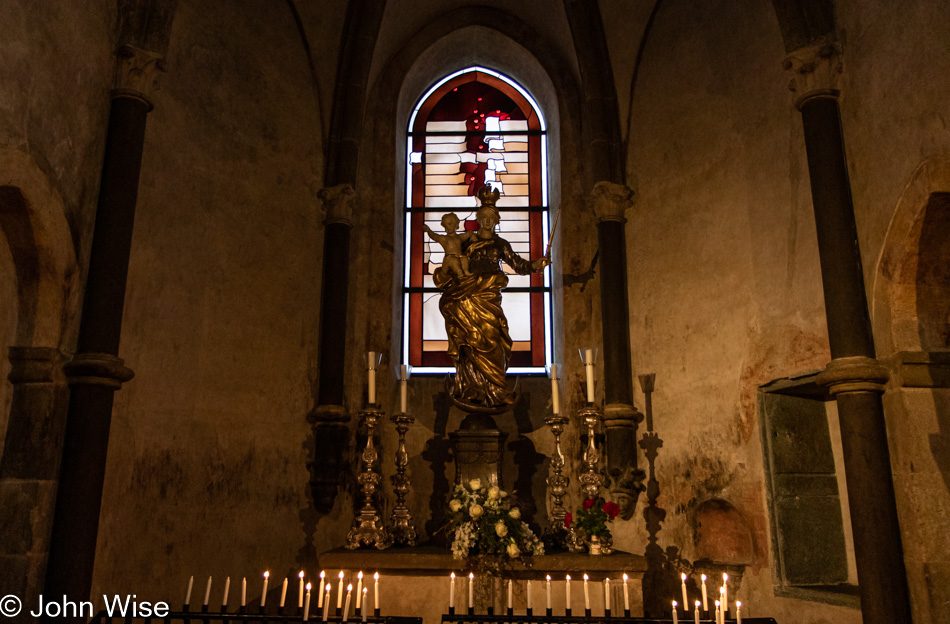
I looked in on the statue of the virgin mother; her eyes and ears were bleeding, and her son held his hand over his eyes in shame for what I would write. Little did I know then what they saw in my future, but the sight was so astonishing. I grabbed my camera as quickly as I could, but the photo turned out to look much as it would at any other church. I swear this happened while, at the same time, I hope I won’t be burning in hell for such ugly things that come out of my fingers. Maybe I’m suffering from psychography, and Satan is controlling my hands, which I can’t begin to understand as these appendages are never idle hands spending time in the devil’s workshop, or are they?
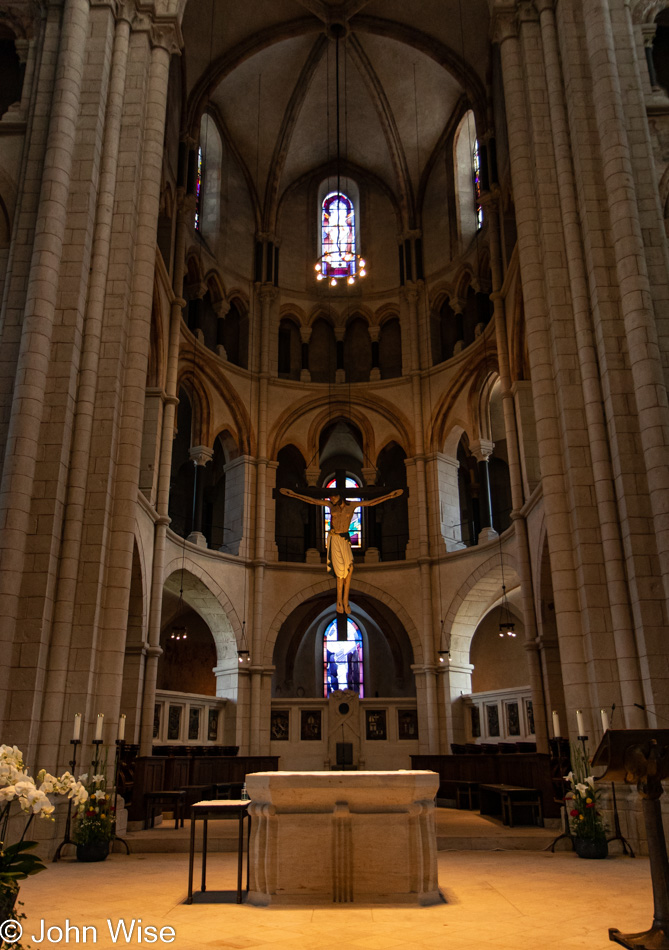
Hey Jesus, no joke, are we cool? He stares down at me, “Does this look cool?” So, I guess I might be damned? “You betcha, so why don’t you just take yourself right out of here, buy some yarn and donuts, and drown the sorrows you’ll pretty much be experiencing for ETERNITY!”
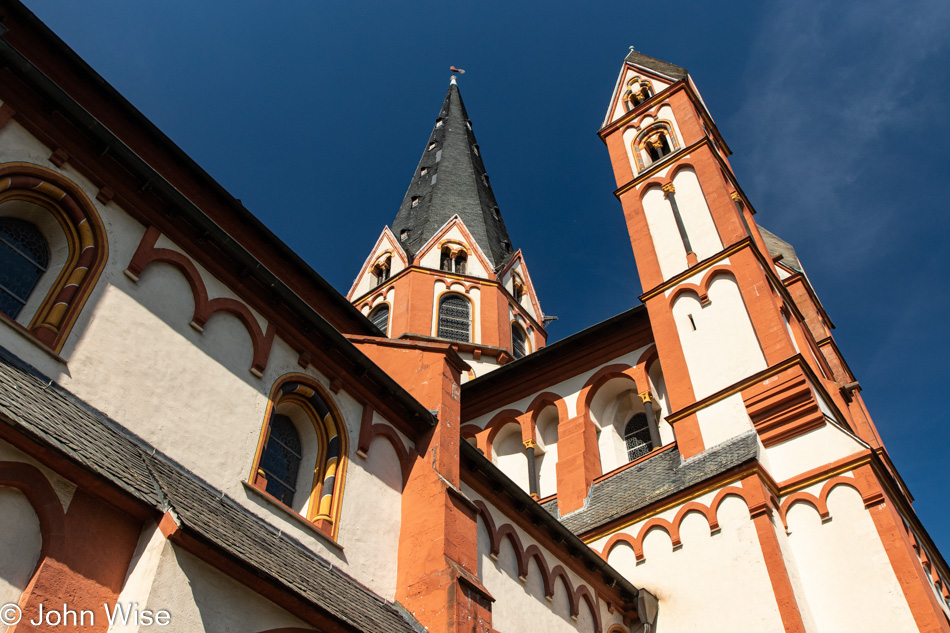
Right about now, I’m wondering how smart it was to eat those 2.5 grams of psilocybin with lunch.
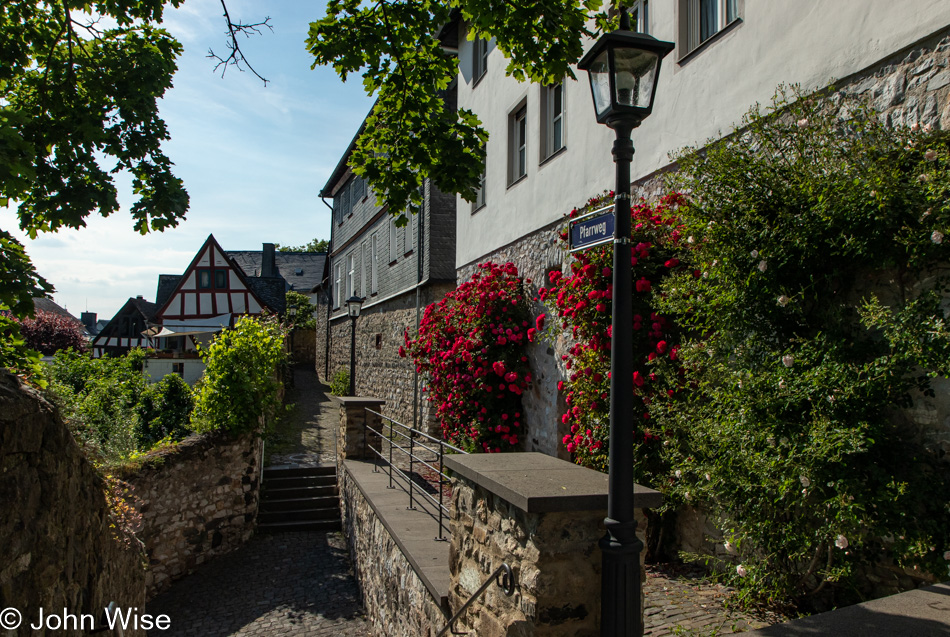
I should just enjoy the great outdoors, smell the flowers, check out the half-timber houses, and be happy to enjoy so much of this beautiful German town of Limburg that was started in the year 910 when Louis the Child granted Konrad Kurzbold an estate here.
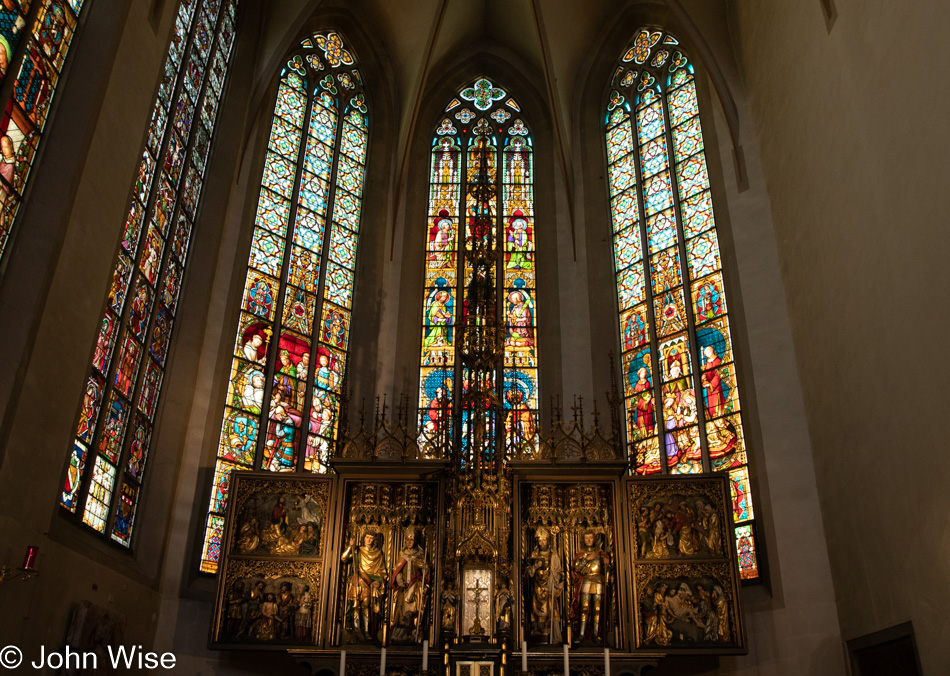
Nah, I should just go into another church and finish enjoying my shroomy journey into blasphemic digression.
Oh my God, did I really wander into yet another Catholic church?
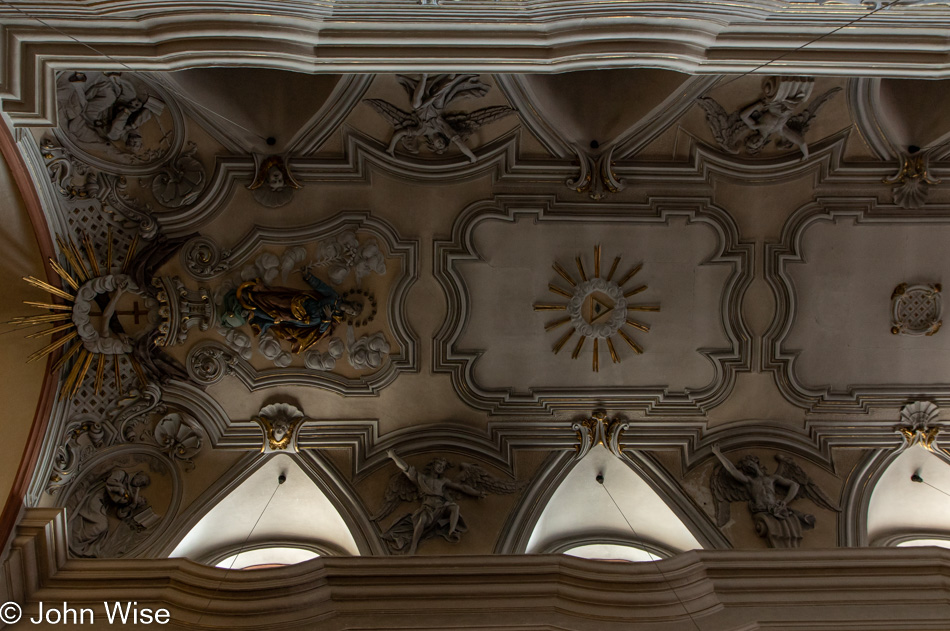
I stared at the ceiling for maybe 20 minutes, watching the Eye of Providence making googly eyes at the Eye of Horus, all three of them. Sorry for cutting the one on the left off, but I was having issues remembering how to even use my camera. By the way, I was joking about the Magic Mushrooms; I was on 250 μg (microgram) of some clean LSD.

Stop talking to me, you baby bastards. For a minute, I thought the organ pipes were the fangs of Satan or a dragon, maybe even my mother-in-law. She has fangs, you know?
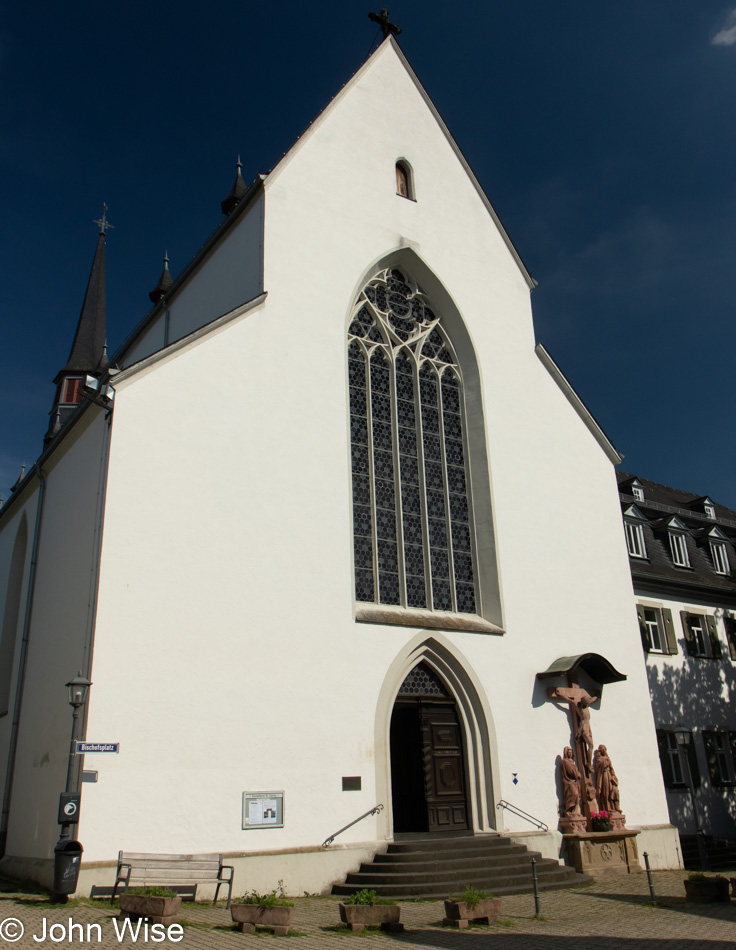
Do you want the truth? Can you even handle the truth? I had to make some things up because I’ve visited so many churches by now and have learned nothing in those explorations, besides the fact that some great artists have poured entire lifetimes into them, that to offer more oohs and aahs would have just been more of the same where you witness me being enthralled by such magnificence.
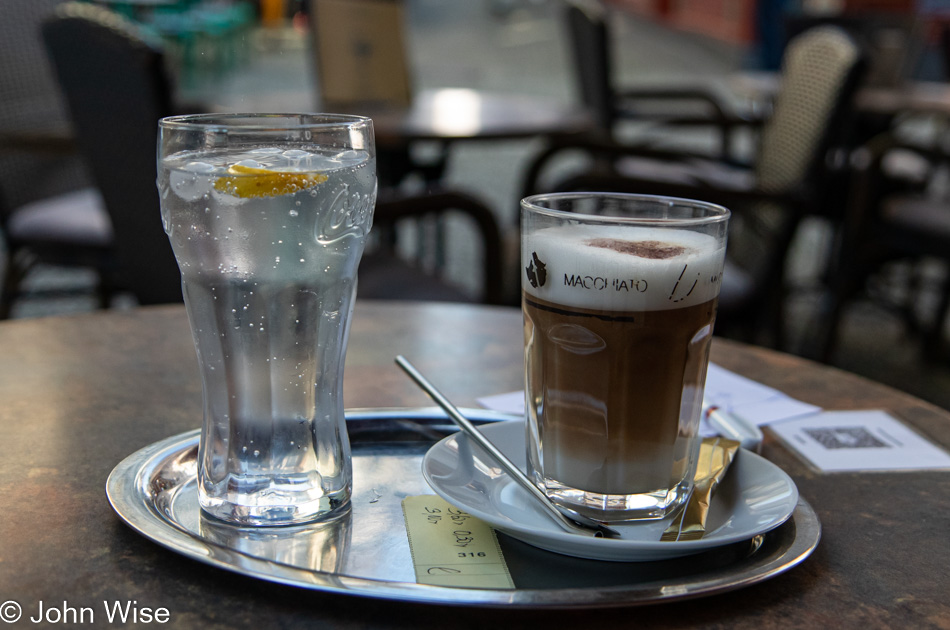
I’m writing some of this at Cafe Will, the oldest cafe in Limburg which was established in 1880 or nearly a thousand years after Louis the Child exercised a lot of power for a person of his age. But now for something completely different (I often wonder how many people hear John Cleese of Monty Python every time they read that phrase?)
Oat milk is the alternative milk of choice here in Germany at the moment, or so it seems, so I have an oat milk latte along with a large glass of sparkling water. Sadly, the cafe closes in 15 minutes so I’ll have had a half-hour to sit and consider my next steps. Caroline offered some long-distance help with finding my train schedule and a restaurant, too; I’m going to be dining here in Limburg. The place is called Burgkellar, just up the hill on Fischmarkt. I’d been hoping to leap into one more city today with a jaunt over to Fulda for dinner, but it’s a two-and-a-half-hour train ride, so that’s out of the question.
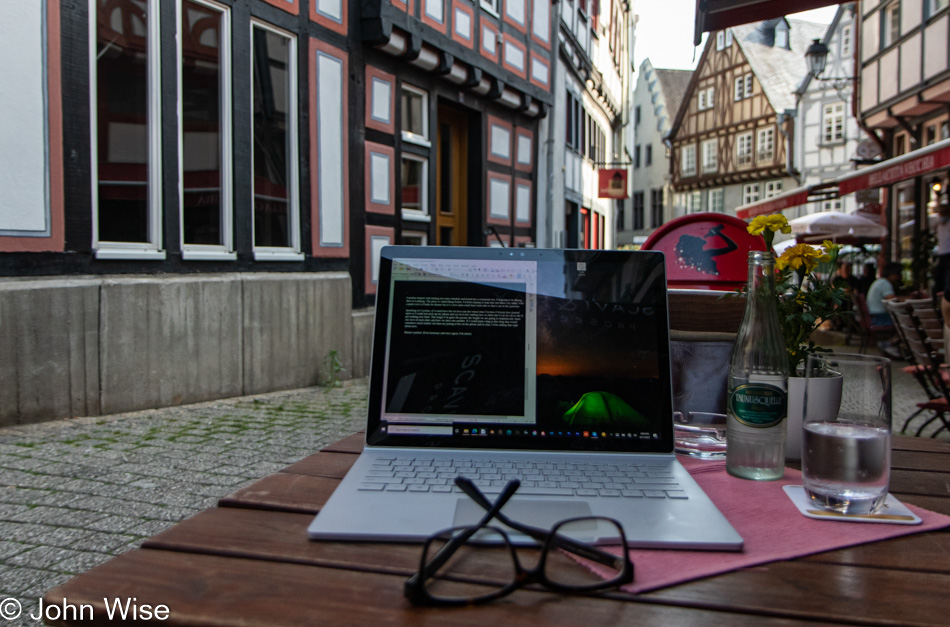
Dinner number 18 in Germany, and once again, I’m alone. If you think I have Caroline nearby on the internet, I put the phone in airplane mode to conserve battery as it is holding my train ticket. I can’t afford to have the battery die, and after such a long day, there’s that possibility. With that said, sitting in old town Limburg next to these old half-timbered houses and listening to all my neighbors speaking German, I’m certainly having an entertaining experience.
Shadows are starting to lengthen, and the day is cooling. I like the idea, after running around so much today, of taking a nice long break and moving slowly. Time to eat.
My server just let me know that during normal times, this area is full, and getting a table here at Burgkeller isn’t always easy. With Germans not being in the habit of vacationing in their own country, this must be especially tough, especially compared to America, where the need to get out has created a situation where even if Caroline and I wanted to visit Yellowstone or the Grand Canyon, those places are in such high demand that they are sold out for the better part of the rest of the year.
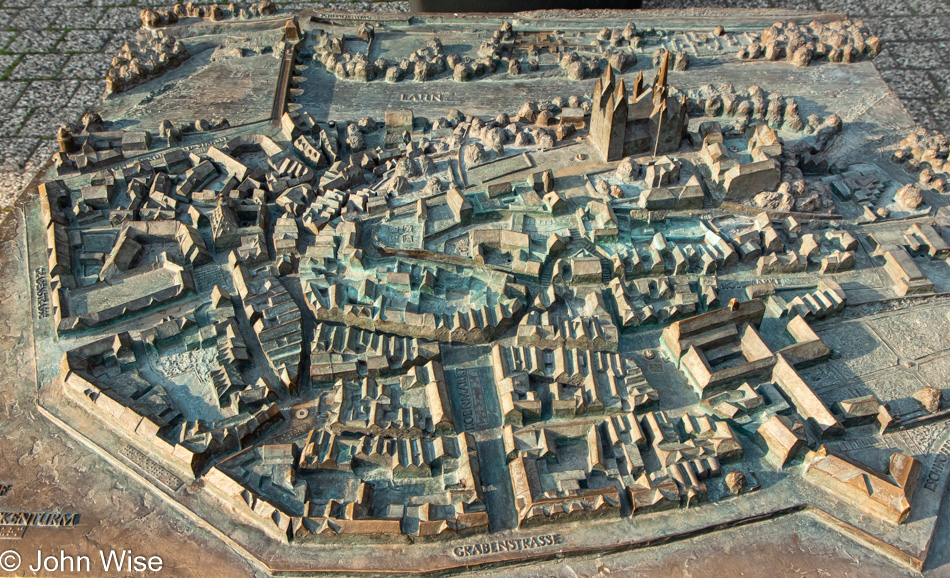
At least from my perspective here late in the day, I find Limburg very liveable. Of course, things like grocery shopping and open-air markets have to remain unknown to me, and the rest of Limburg surrounding the Altstadt appears to be quite a large place. Lacking on first blush is frequent rail service; while a train to Frankfurt comes through once an hour and on occasion twice, this is certainly not a travel hub, even if it’s a destination.
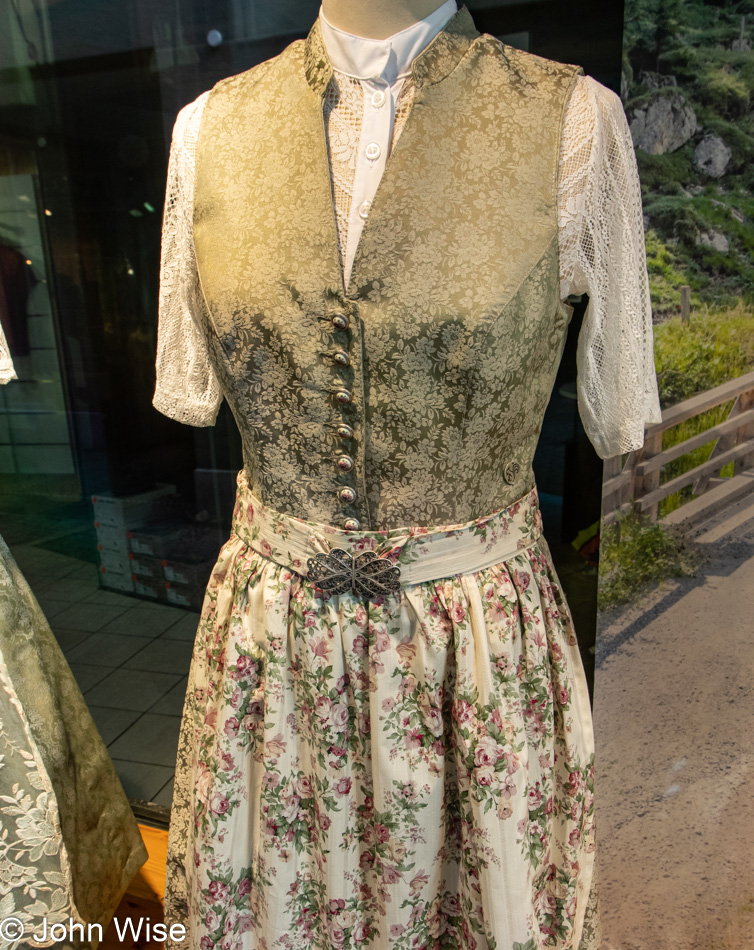
Oh, you bet I could see Caroline in a nice Dirndl, especially one that is as modest and cute as this one. The entire ensemble is a relatively pricey €500 or $600 U.S., but when you consider that these are handmade clothes using fabrics that are unique, you might be able to see that this isn’t too much at all.
Speaking of Caroline, if I could have her on live-cam the whole time I’m here, I’d keep that channel open so I could just pick up my phone and say hi to her smiling face so often she’d cut me off as she’d get nothing else done. The longer I’m gone, the greater the length we are going to emphatically share our love of each other and how we miss one another. If I could plant a hug in this blog that would somehow reach further out than my pining at her on the phone and in chat, I’d be adding that right about now.
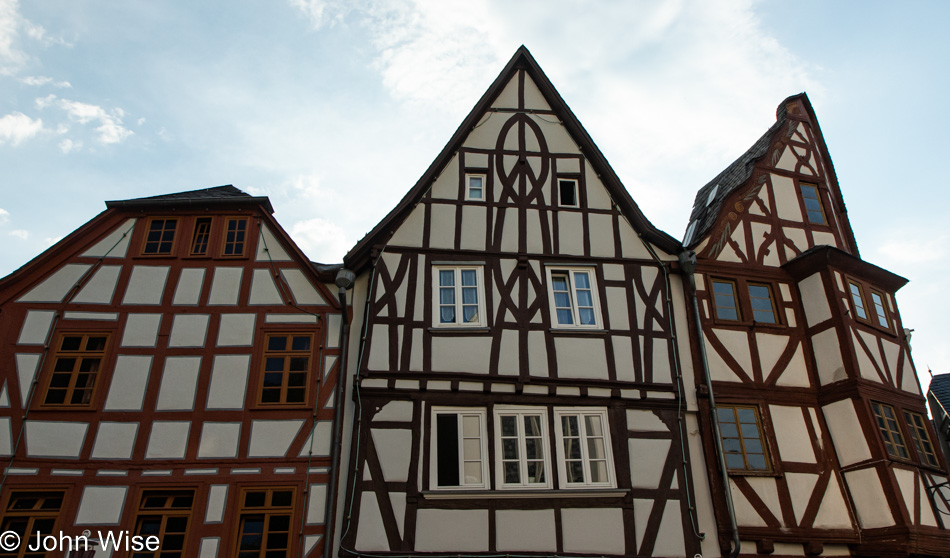
Vacationing, this is something I should start considering right now as when I get home I’d like and I’m sure Caroline would also like to spend some quality time together. We were just up on the California coast from Monterey to Cambria for nearly ten days last month and in November, we did have a quite long vacation up in Oregon, so where to go? We had to pass on going white water rafting in Idaho on July 4th as we couldn’t anticipate how things would work out with such a fast turnaround of me coming back from Germany and then driving a day and a half to Idaho to start such an adventure in the possible throws of jet lag. Now that doesn’t feel so impossible.
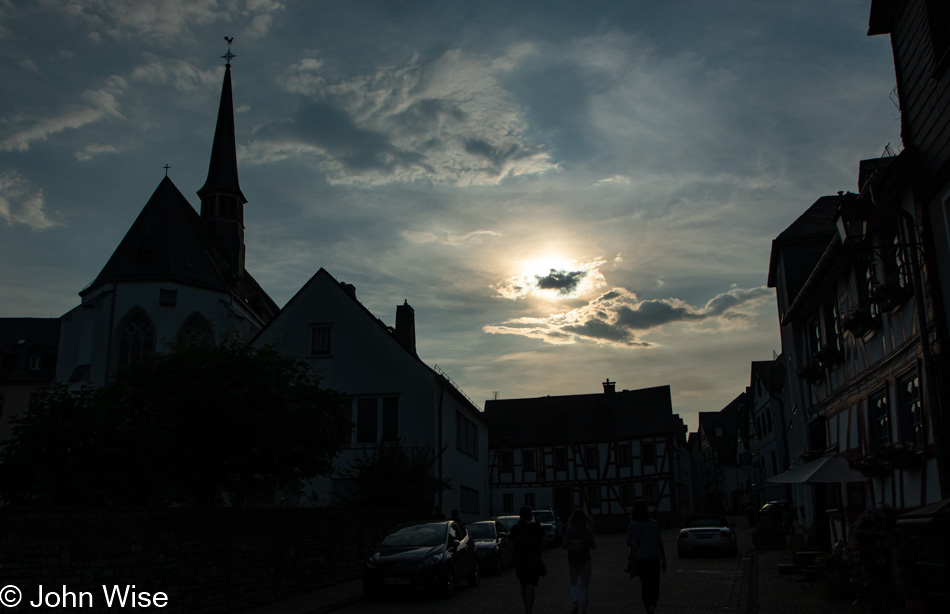
Move out of your expectations. Find the order in chaos and embrace the things that challenge your sense of normal, as routine is a tyranny to the over-stimulated mind of people consuming trash. We must break out and turn off the shit so we might find some flow allowing us to flush the toilets of our minds.
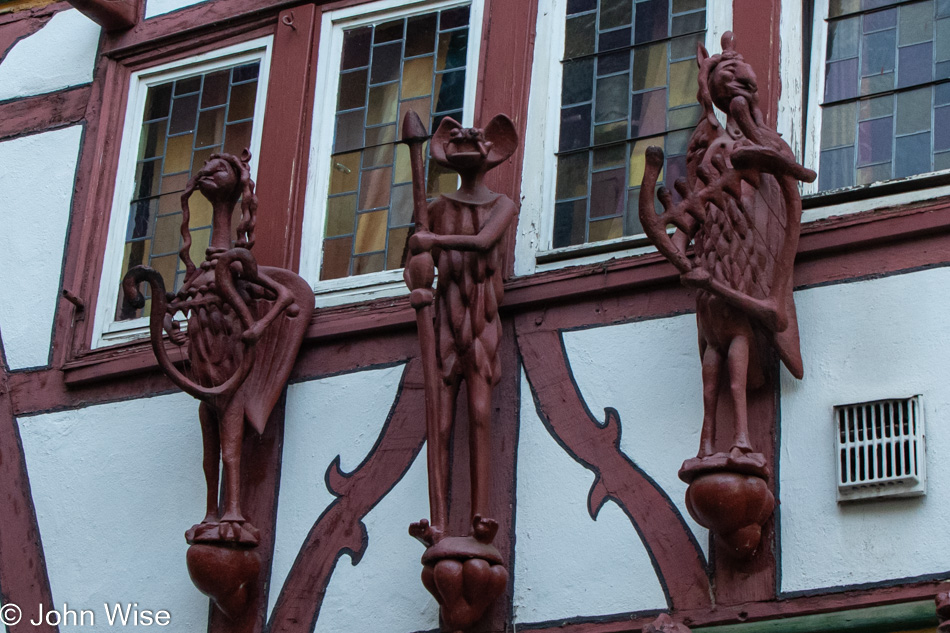
So, who was on shrooms or acid when these figures on the House of the Seven Deadly Sins were made? Actually, I think the creator of these simply had an effective methodology for not letting their mind get too backed up with the excrement deposited by society and knew how to have fun.
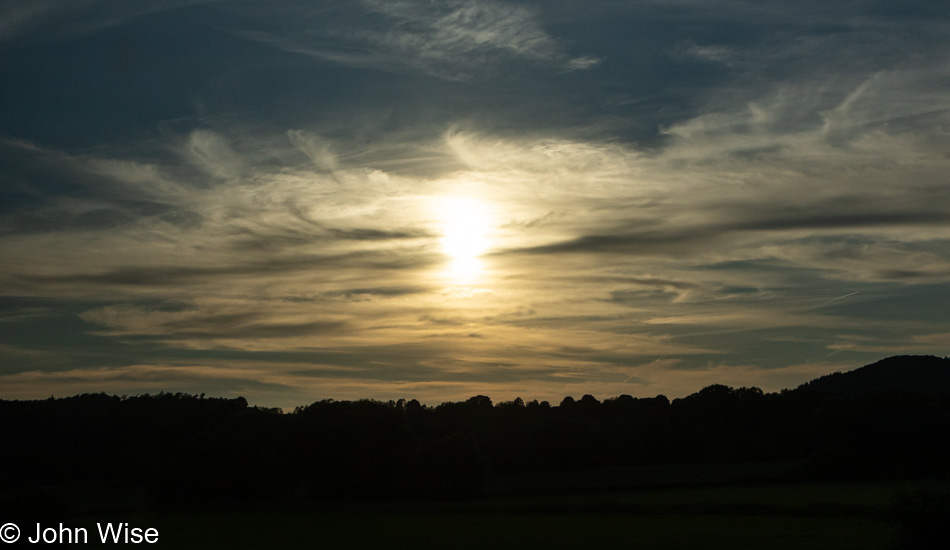
I’m on the train returning to Frankfurt refreshed, even though I ran out of steam in Limburg. I wasn’t even willing to wait for the 20:19 to the city and opted for the 19:50 to Giessen, hoping I’d hop on a train there that might get me back sooner. There are a lot of photos I shot today that need to be gone over, color-corrected, and other stuff, so I can pull things together tomorrow. Such is the process of trying to maintain these daily blog entries.
Just had a great dumb idea where I start importing the photos now, thus saving me time later tonight, but while that happens, I cannot take any photos as the memory card is tied up. Having taken a lot more photos than usual, this will take some time, but maybe that’s a good thing, as I’ll have fewer photos to contend with. If you are reading this far along of the drivel that has spilled from me, you are probably already thinking, “Hey John, you could have posted fewer photos so I wouldn’t have to scroll past so damn much to see this entry and get to the next.”
So, however many photos I end up posting, you should know that I shot more than 380 to get the ones I deemed worthy. Hmm, I am just wondering if I should do the same with my words and, after writing 3,000 or so, should select the best 300 and post those?
How nice it is to be on a train, effortlessly gliding down a track with no responsibility other than to keep on my mask. My day pass for the state of Hessen has been well worth the $40 it cost. I do want to stop at every scenic sight and snap off a photo, but the train travels where neither cars nor bikes can go, so even if I were traveling by other means, I’d not even see these views, and if I were on an autobahn, there’d be no stopping whatsoever.
Cows are grazing, farms are glowing, and the Lahn is there on my left with nary a ripple. I’m lulled by the bucolic nature we are gliding through and only wish to experience it all by foot though I’m afraid it would be like sitting in the church waiting for the voice of God to speak with me as I gaze upon the landscape waiting for a message that offers a new take on enlightenment.
We just passed through Dudenhofen without stopping and waiting at the track I saw between six and eight young ladies dressed for going out. It was impossible to know if they were waiting for the train that goes directly to Frankfurt or if they might be on their way to Limburg (highly unlikely) or maybe Koblenz. I have no idea about those cities’ nightlives, but I do know that in Frankfurt, even here at the tail-end (hopefully) of the pandemic, things are far more lively than sleepy old Dudenhofen, especially if you have access to a good dose of LSD, or Magic Mushrooms.
